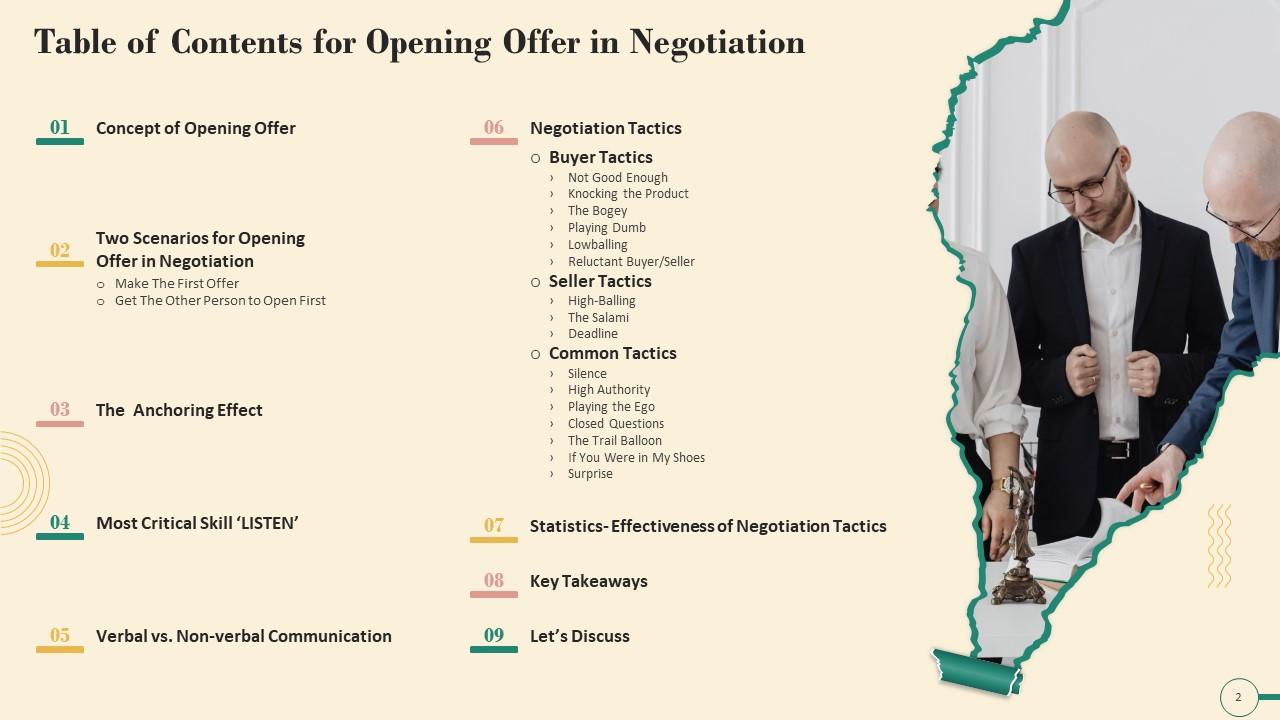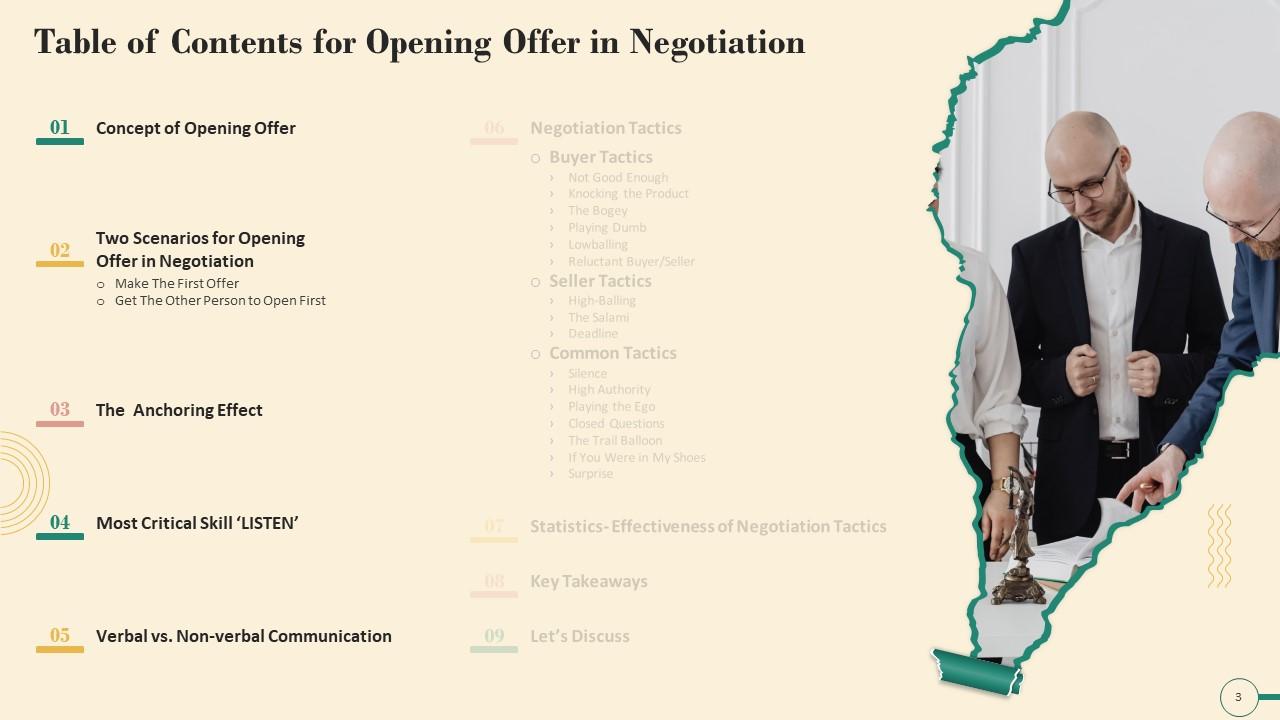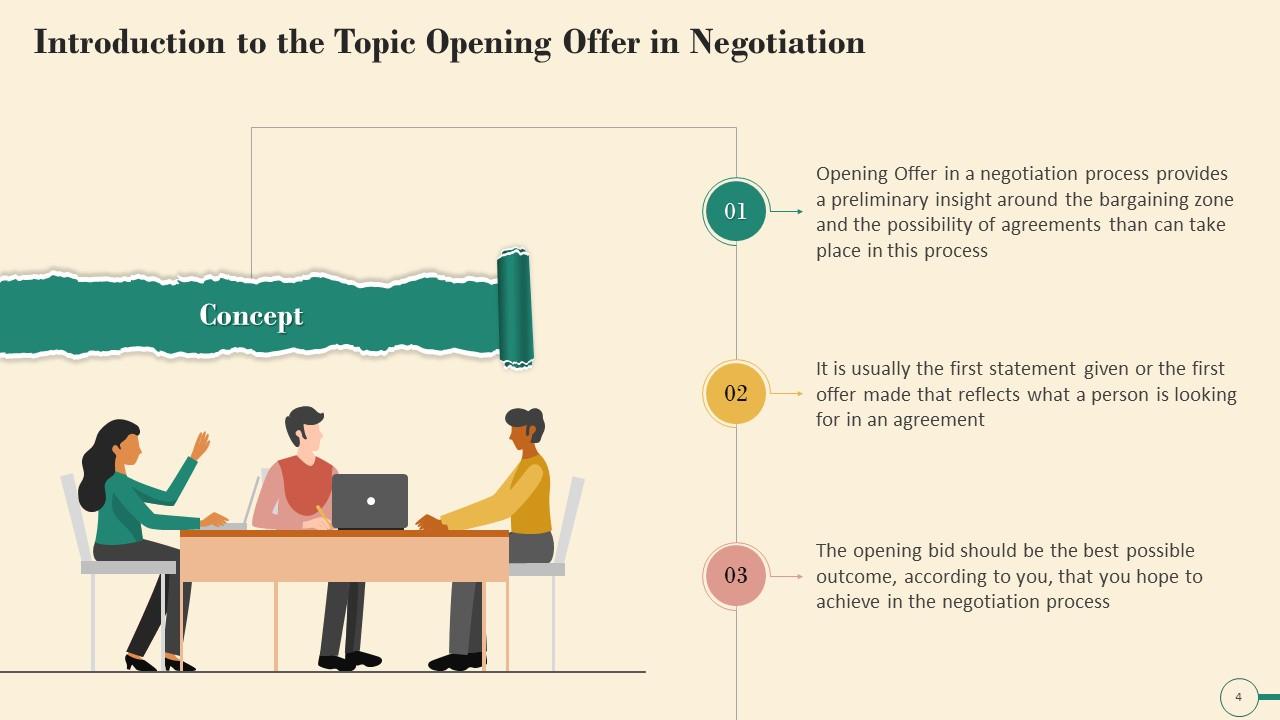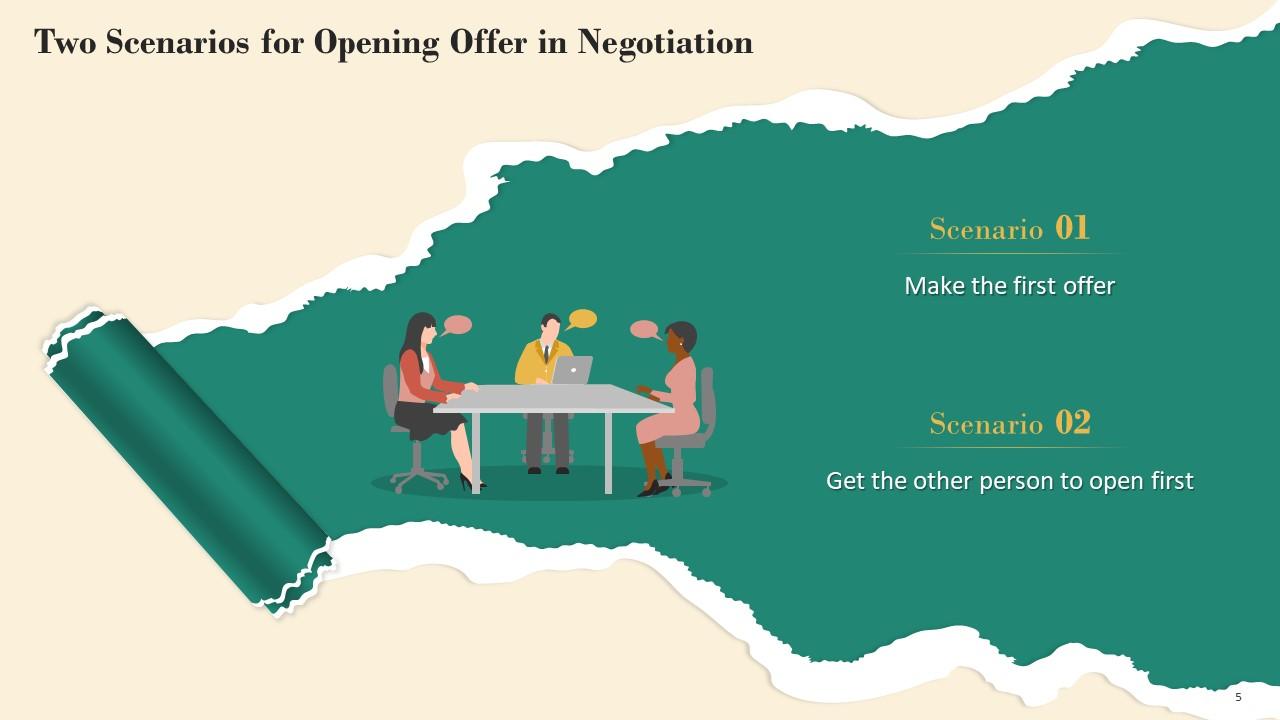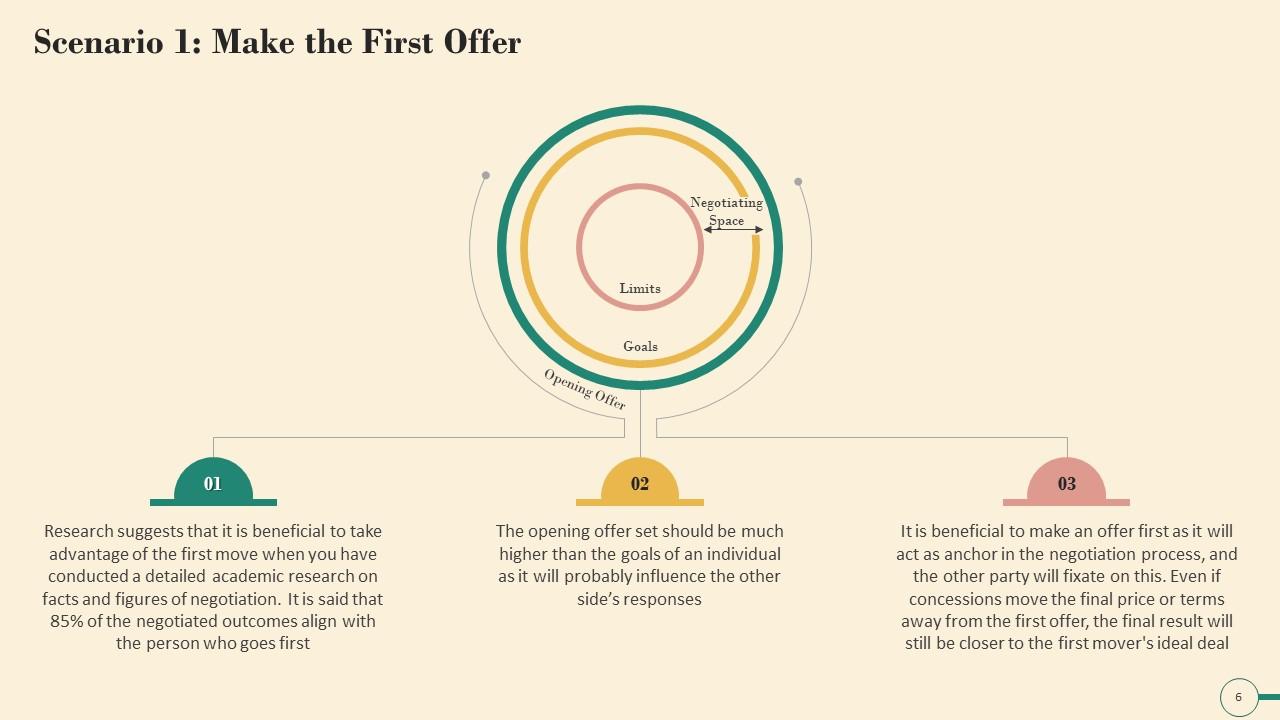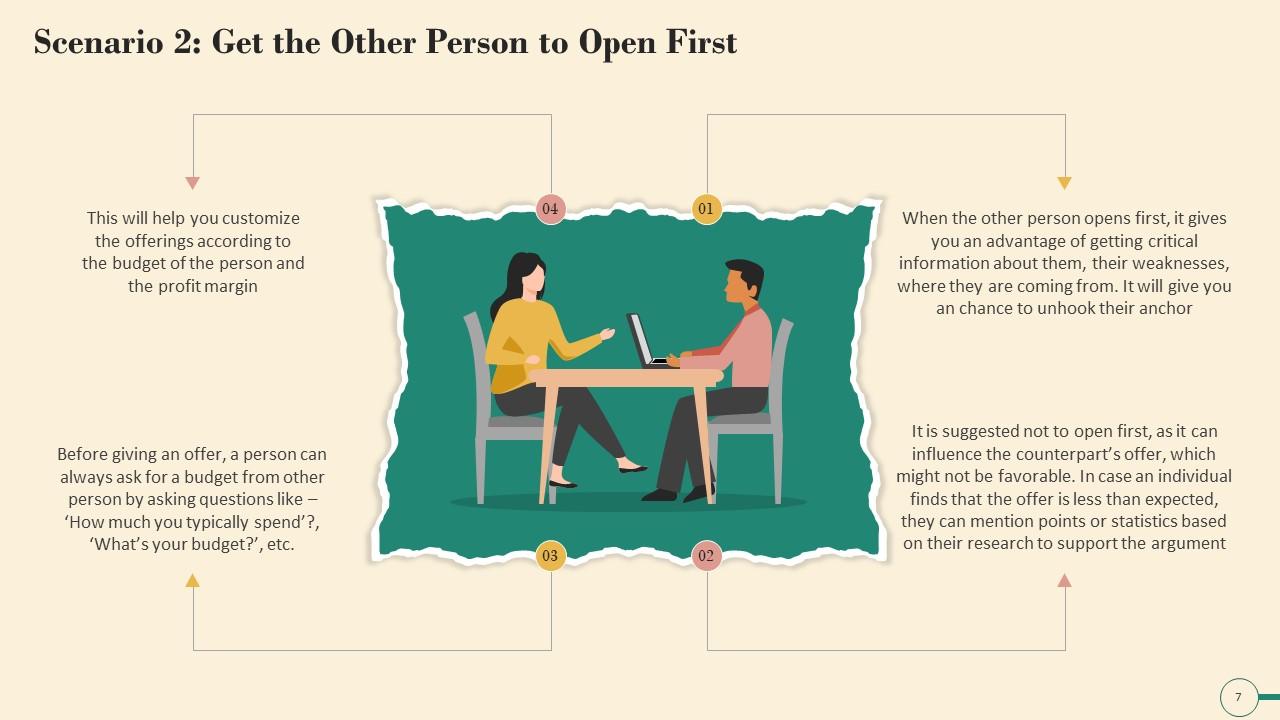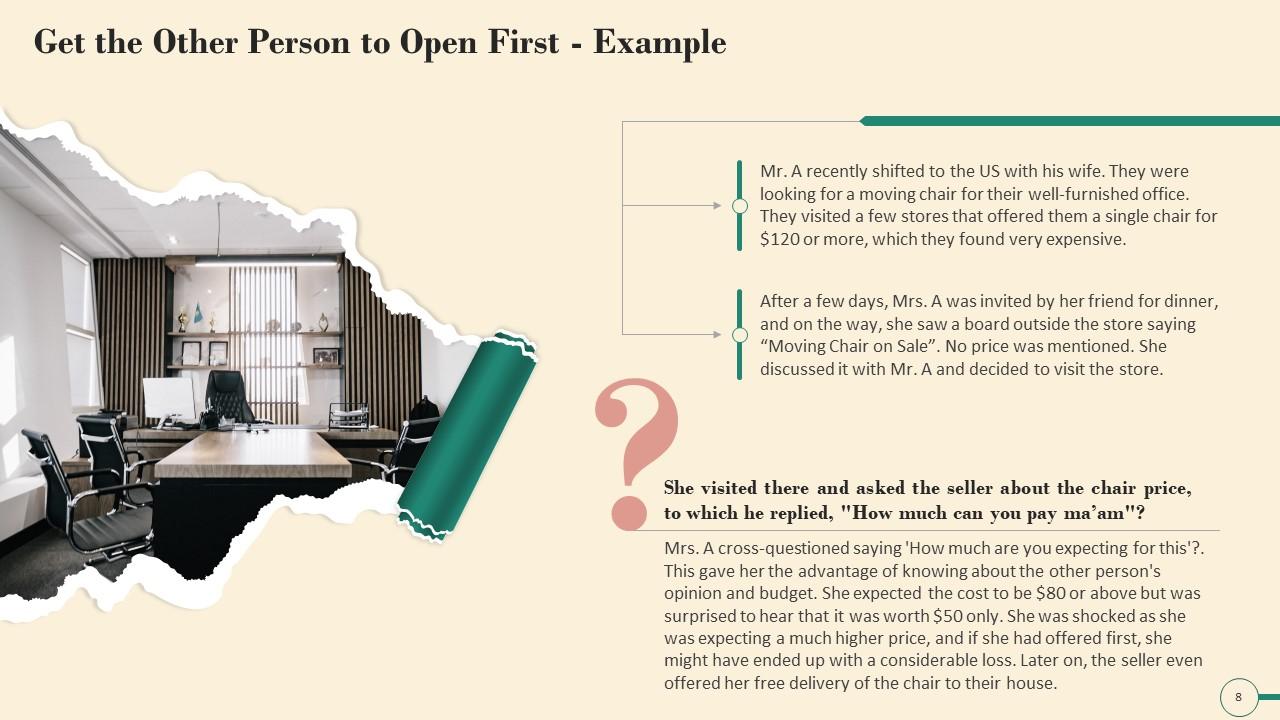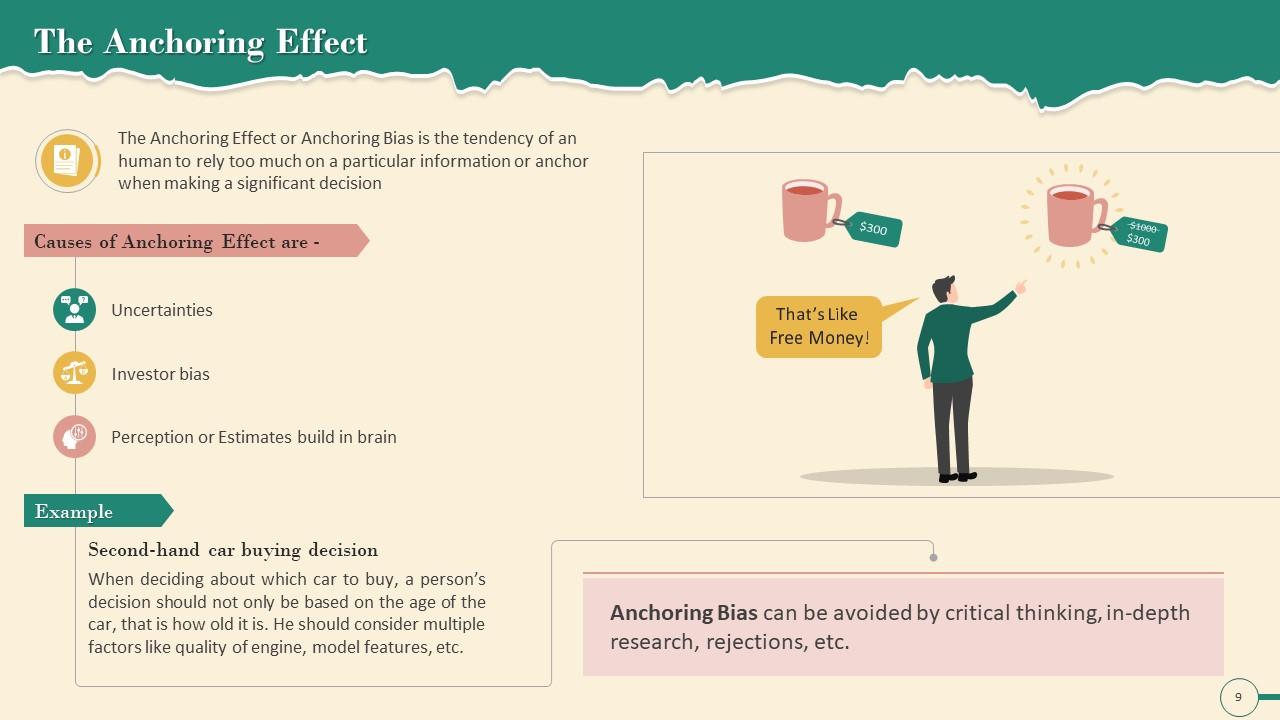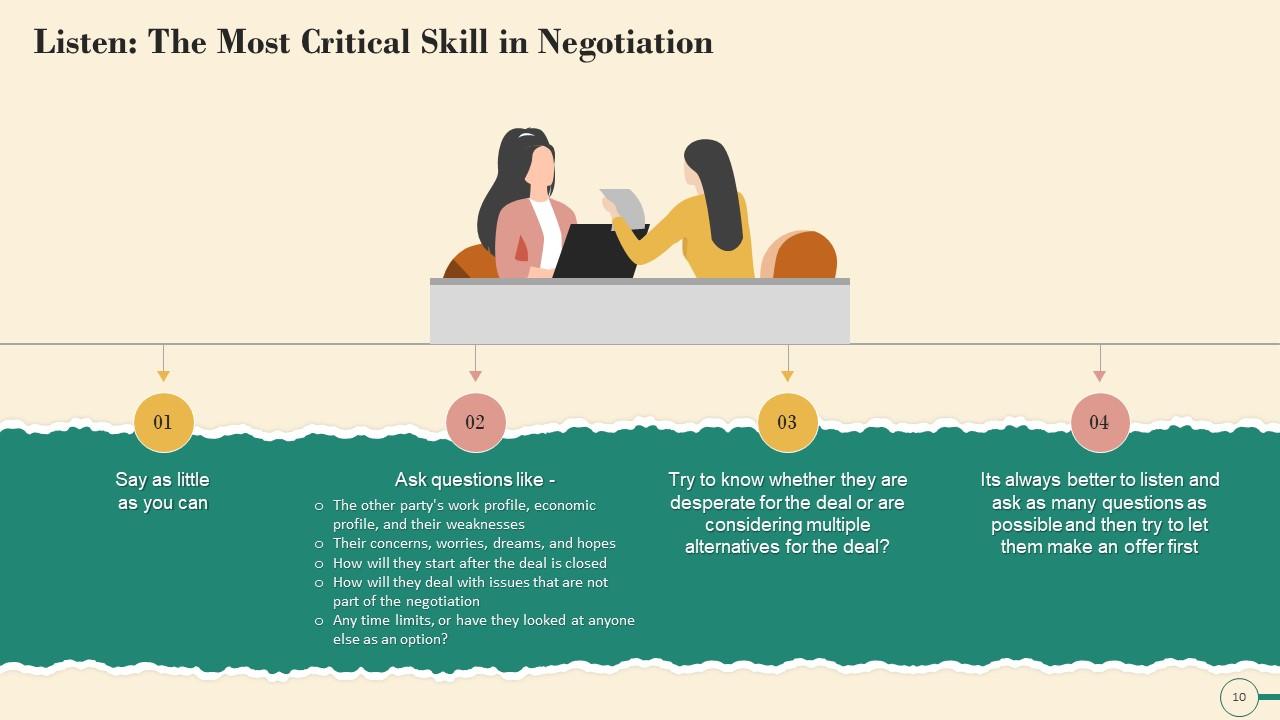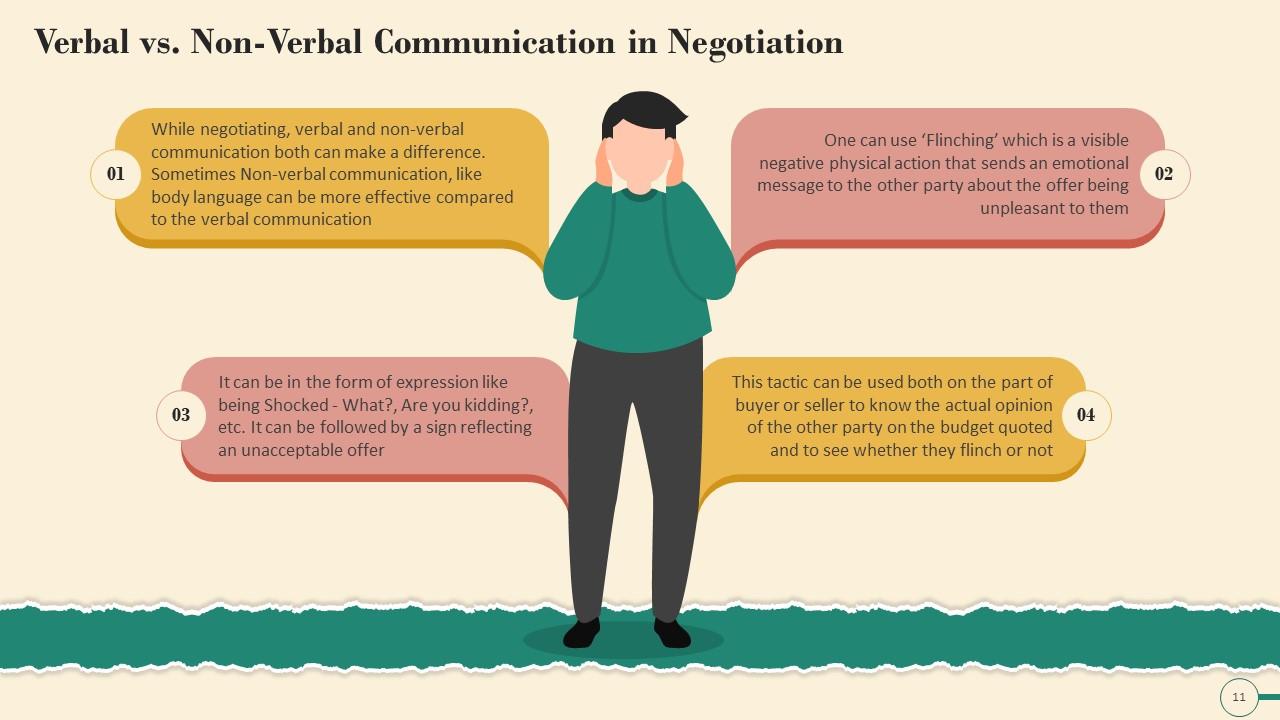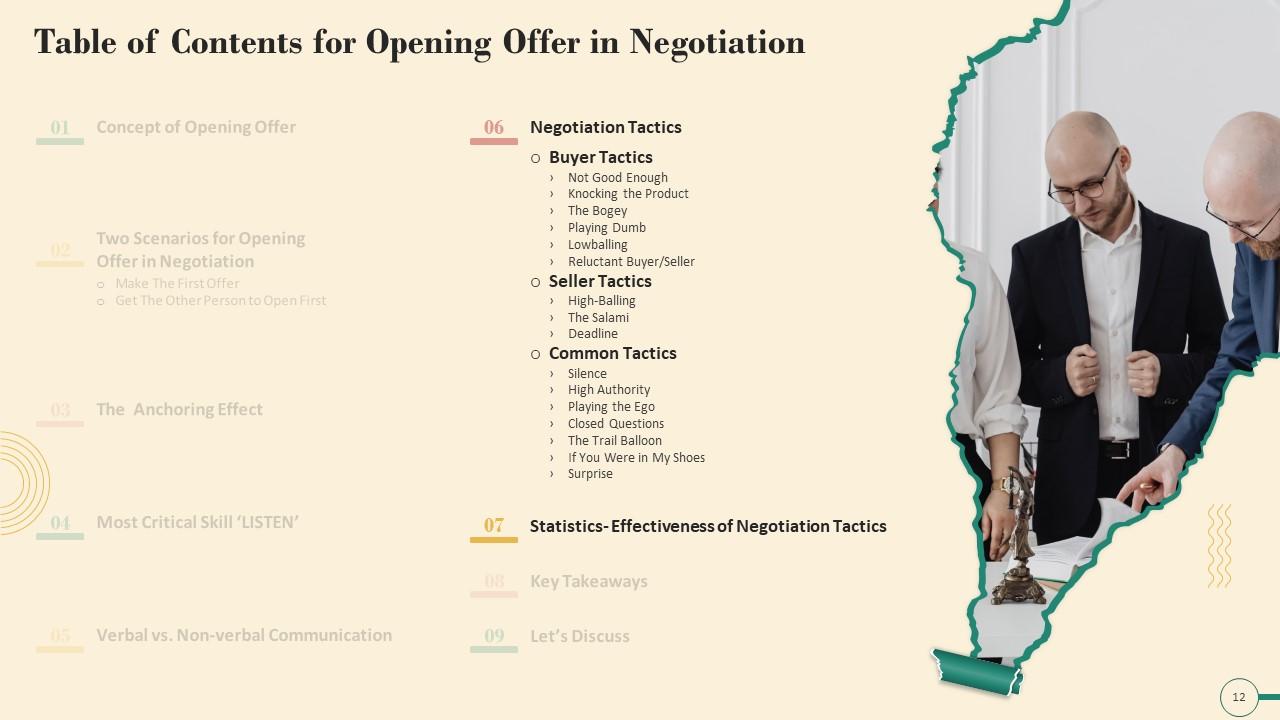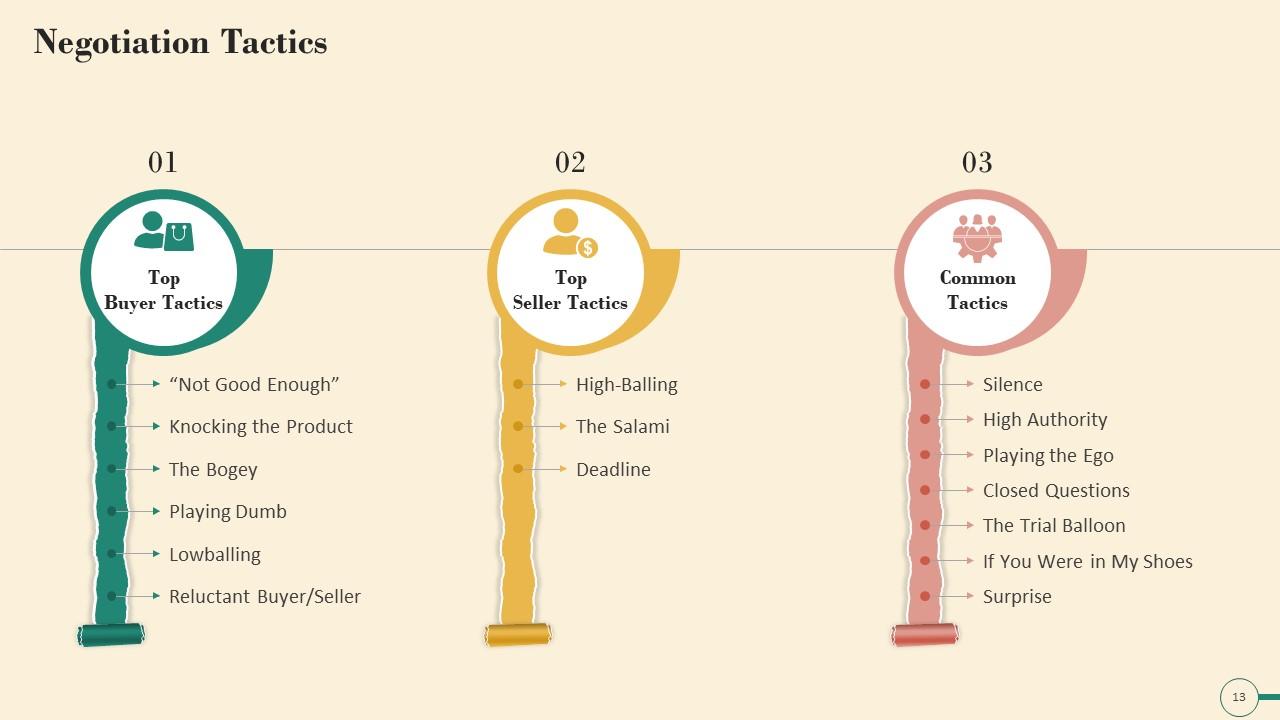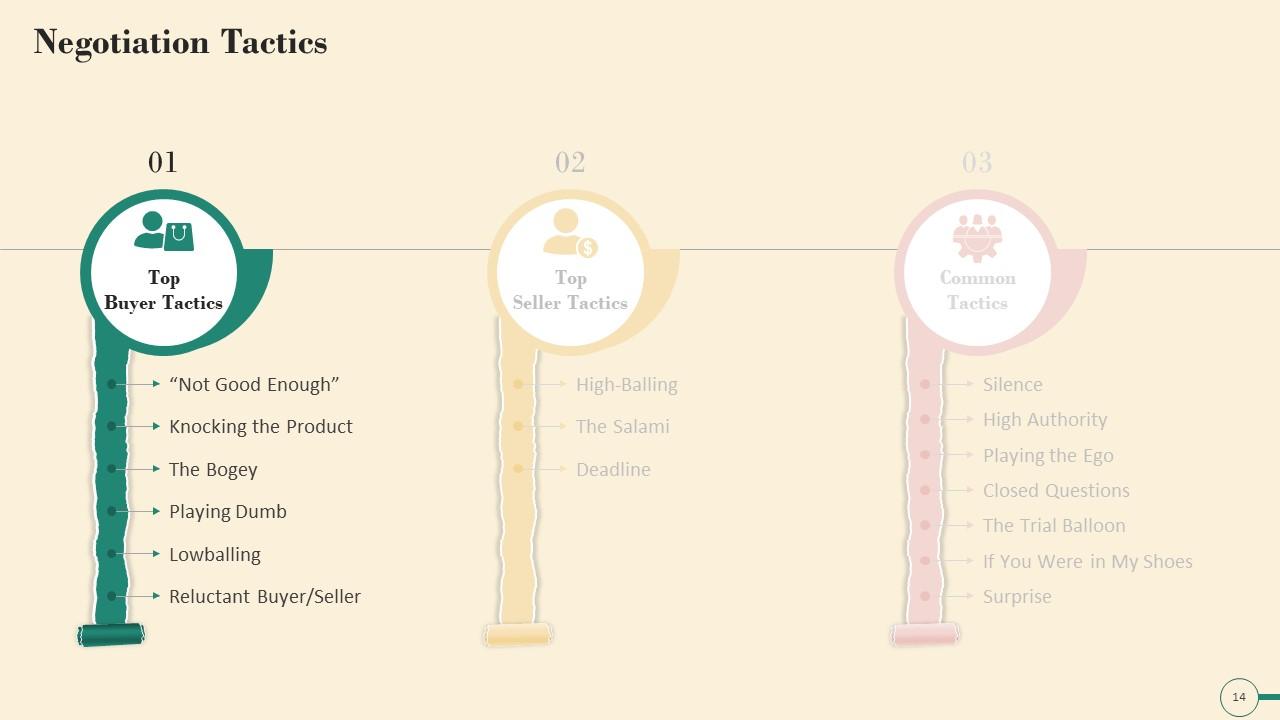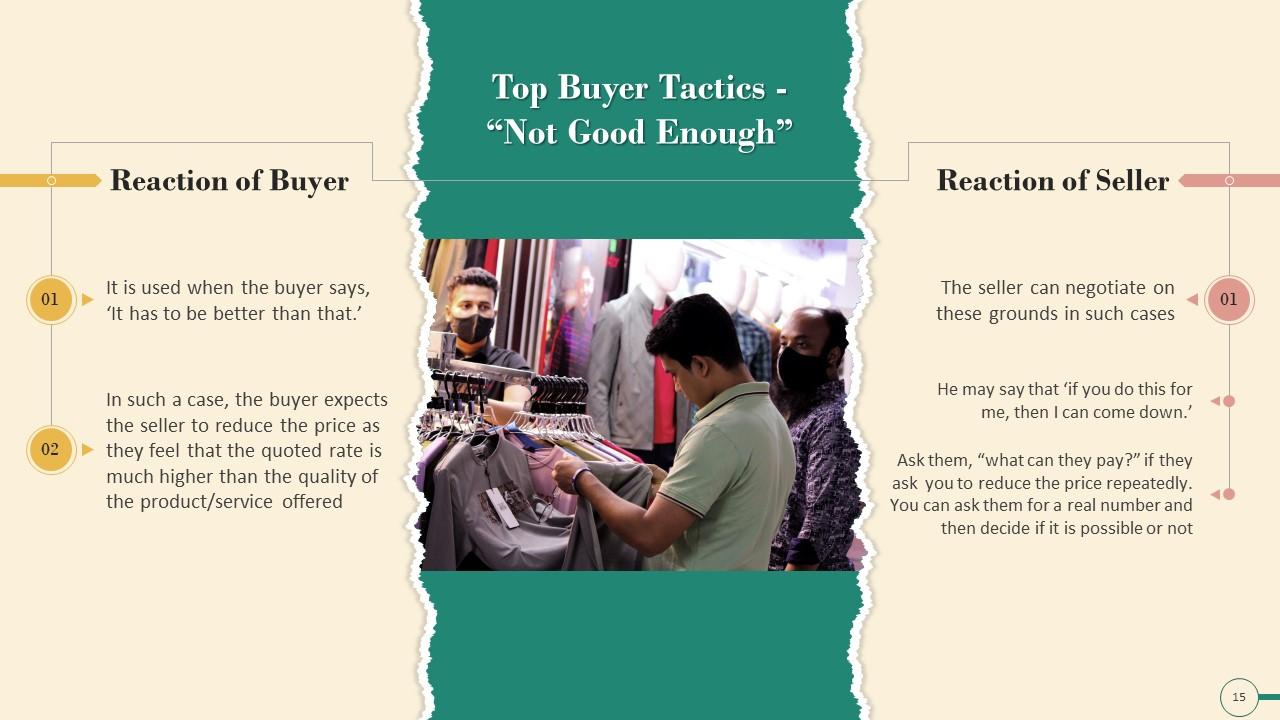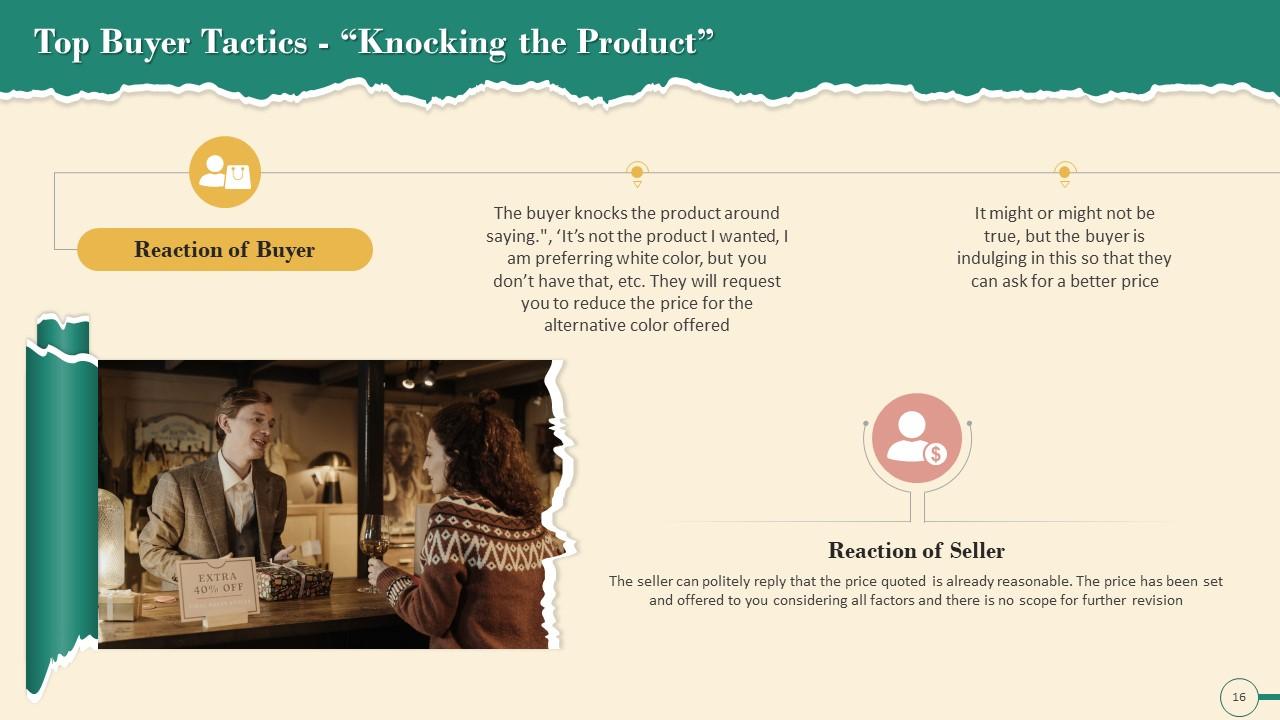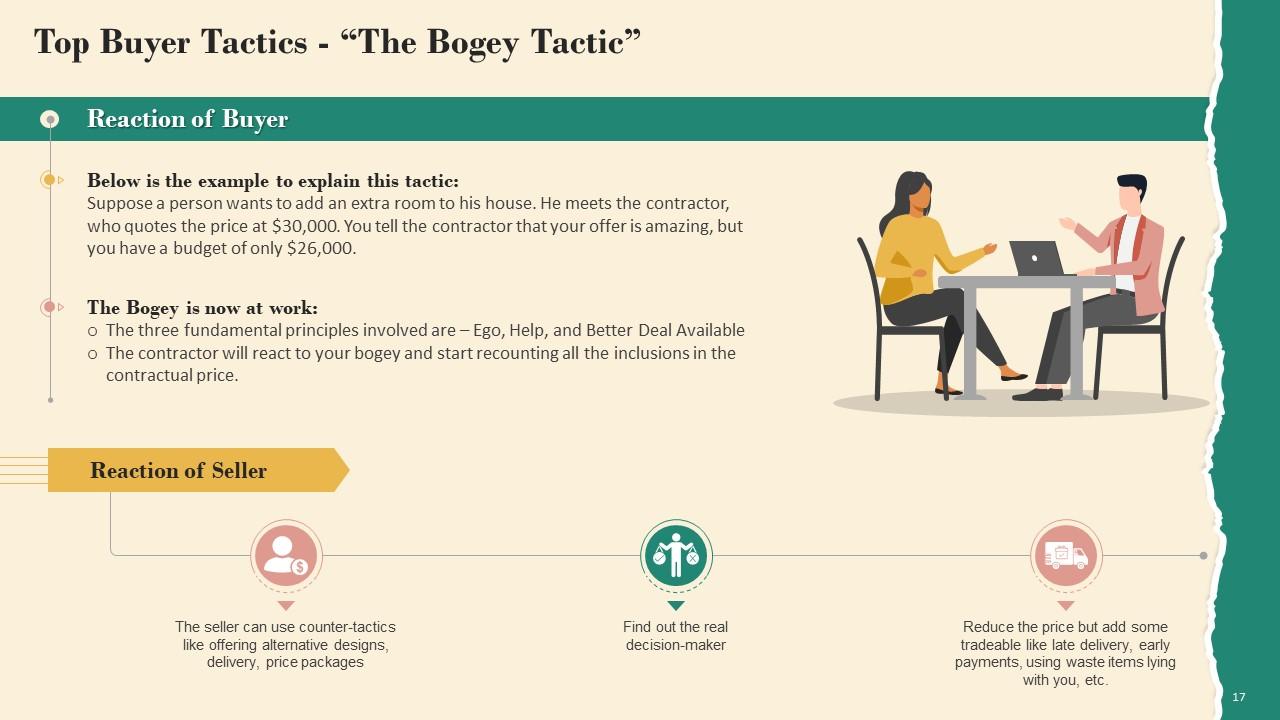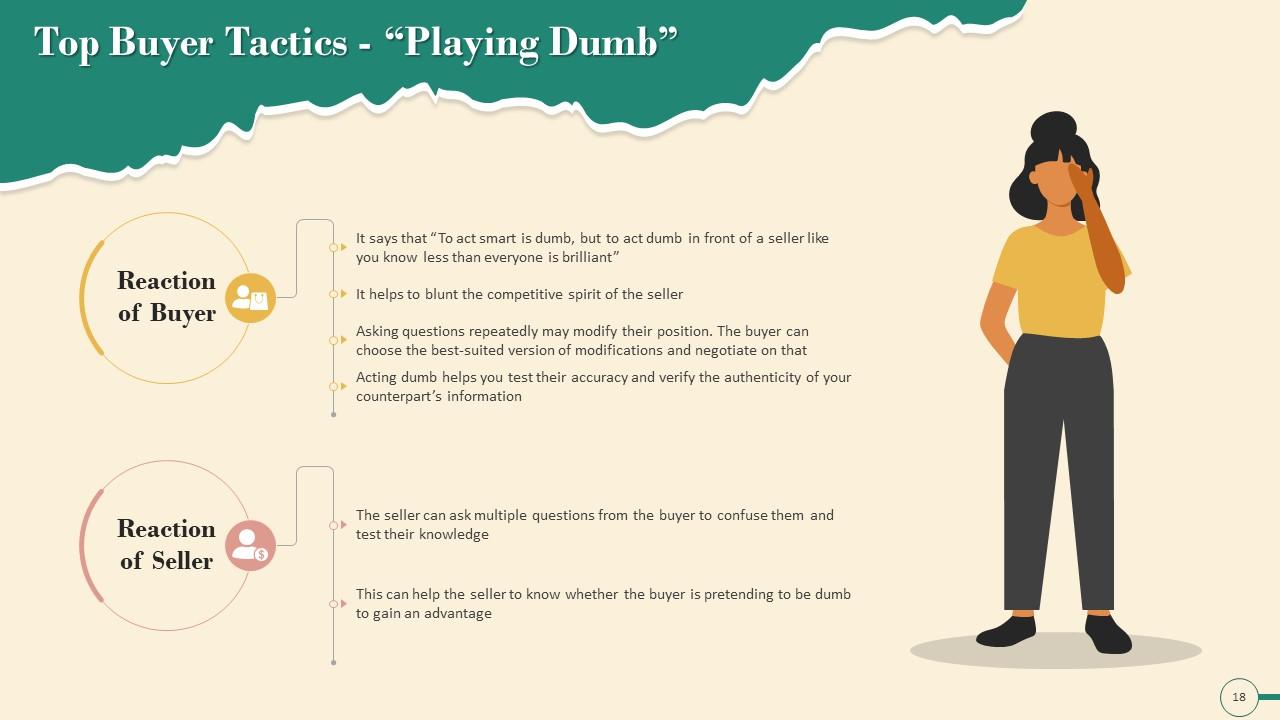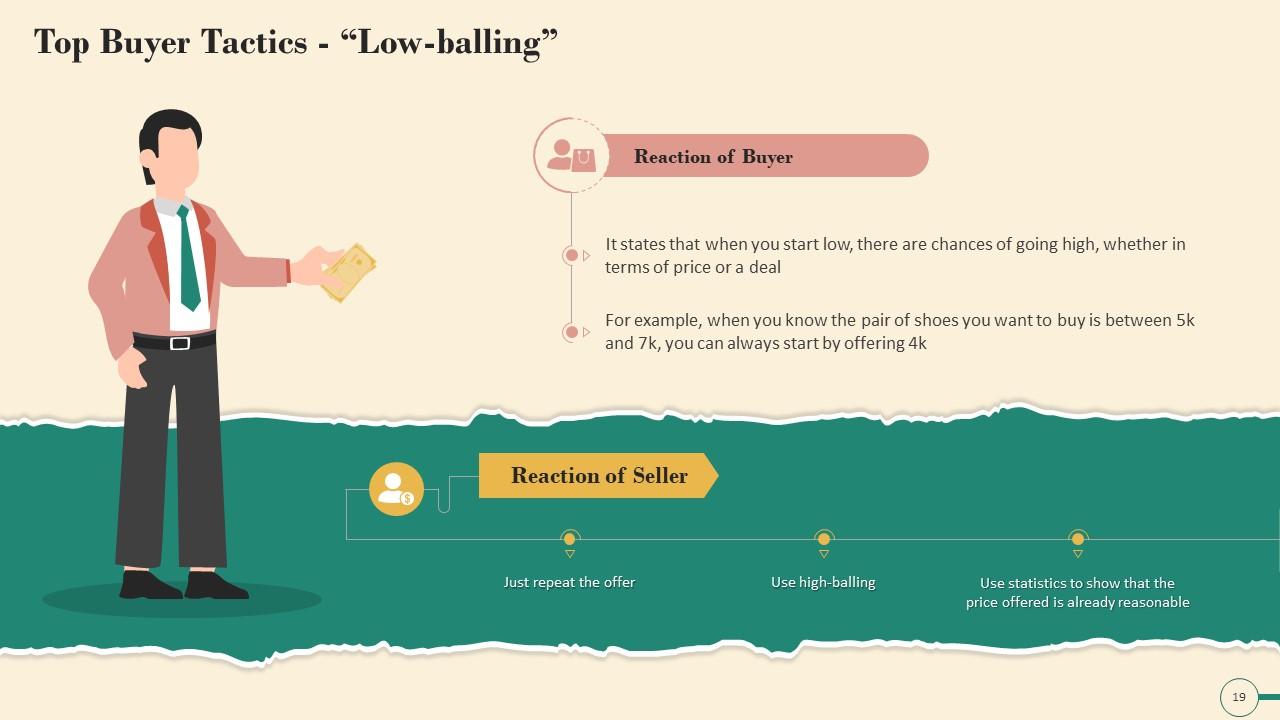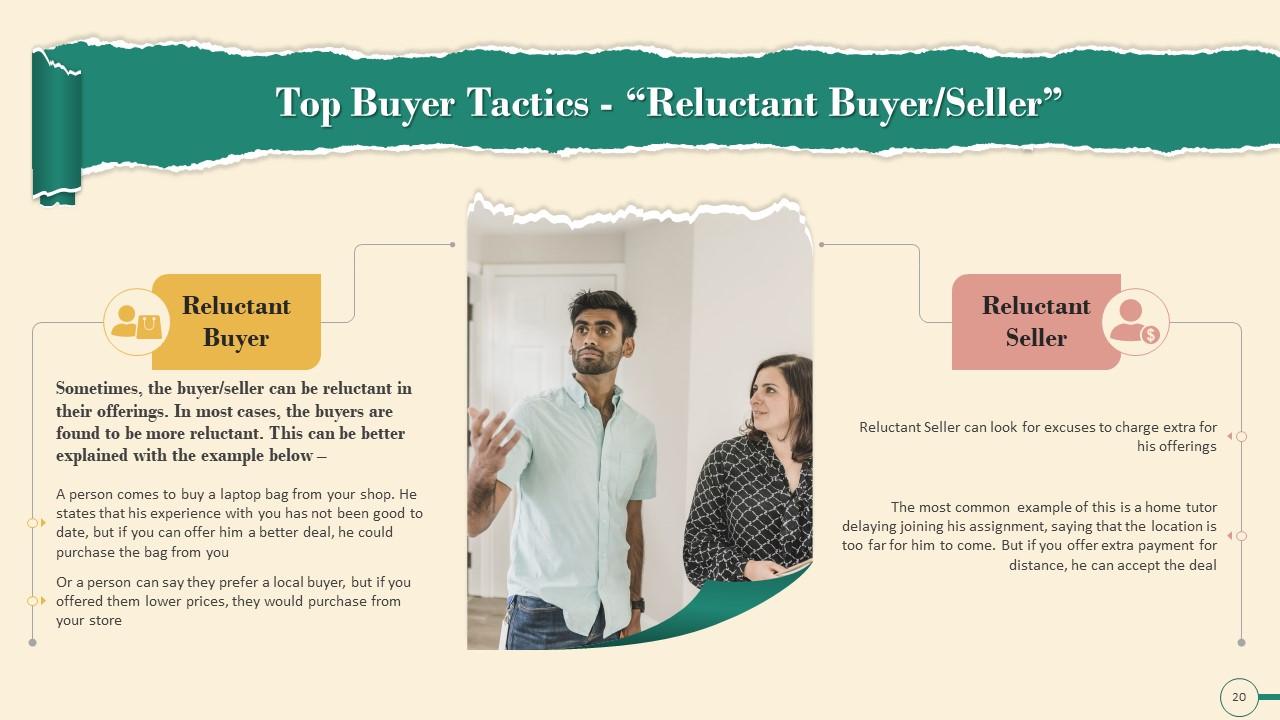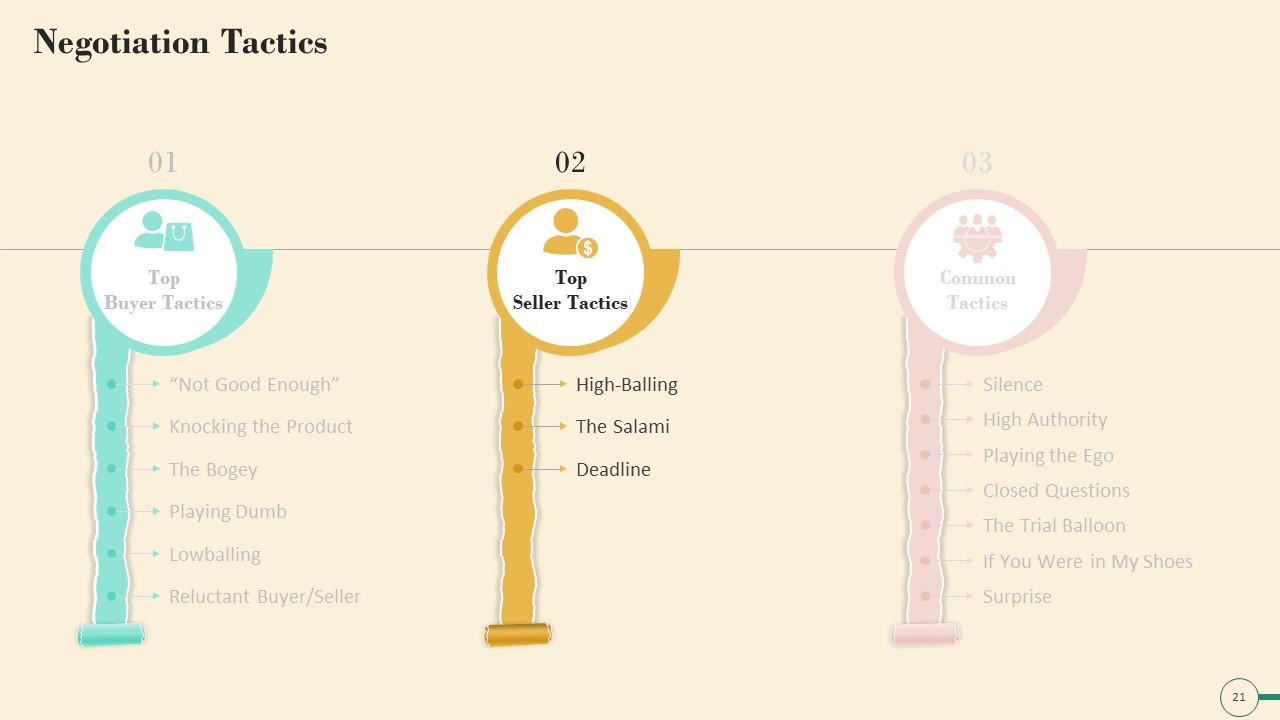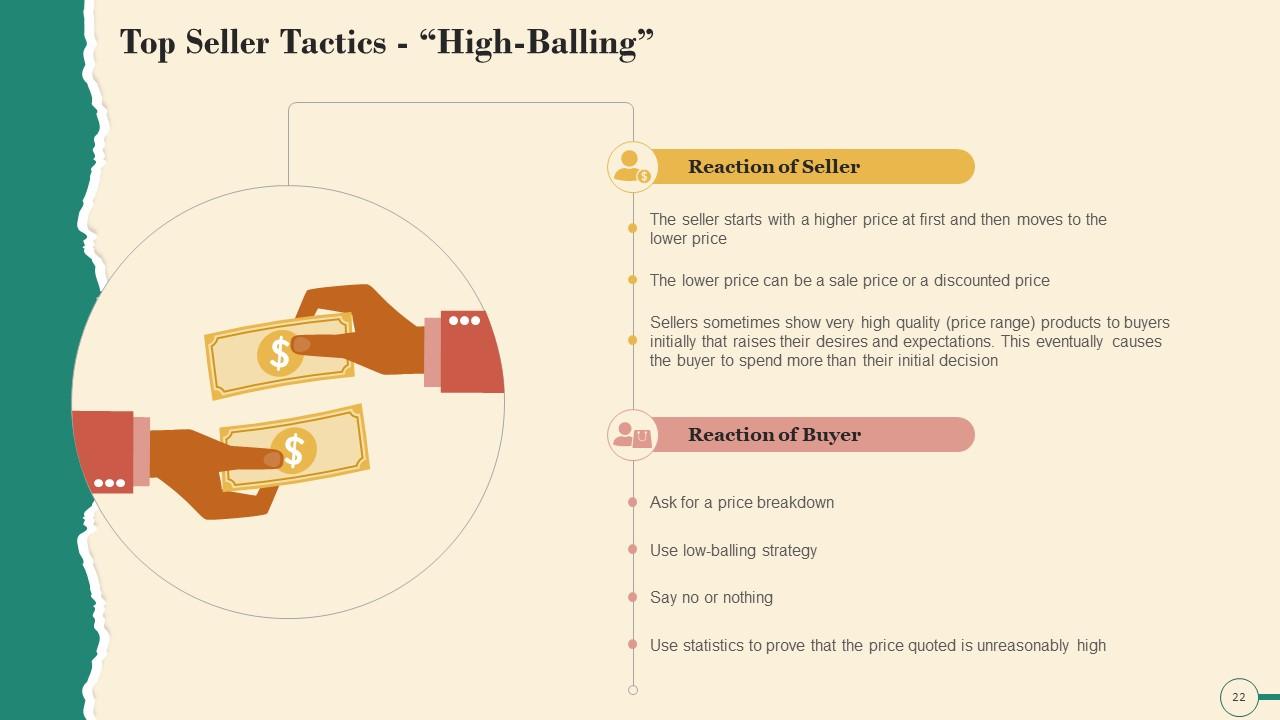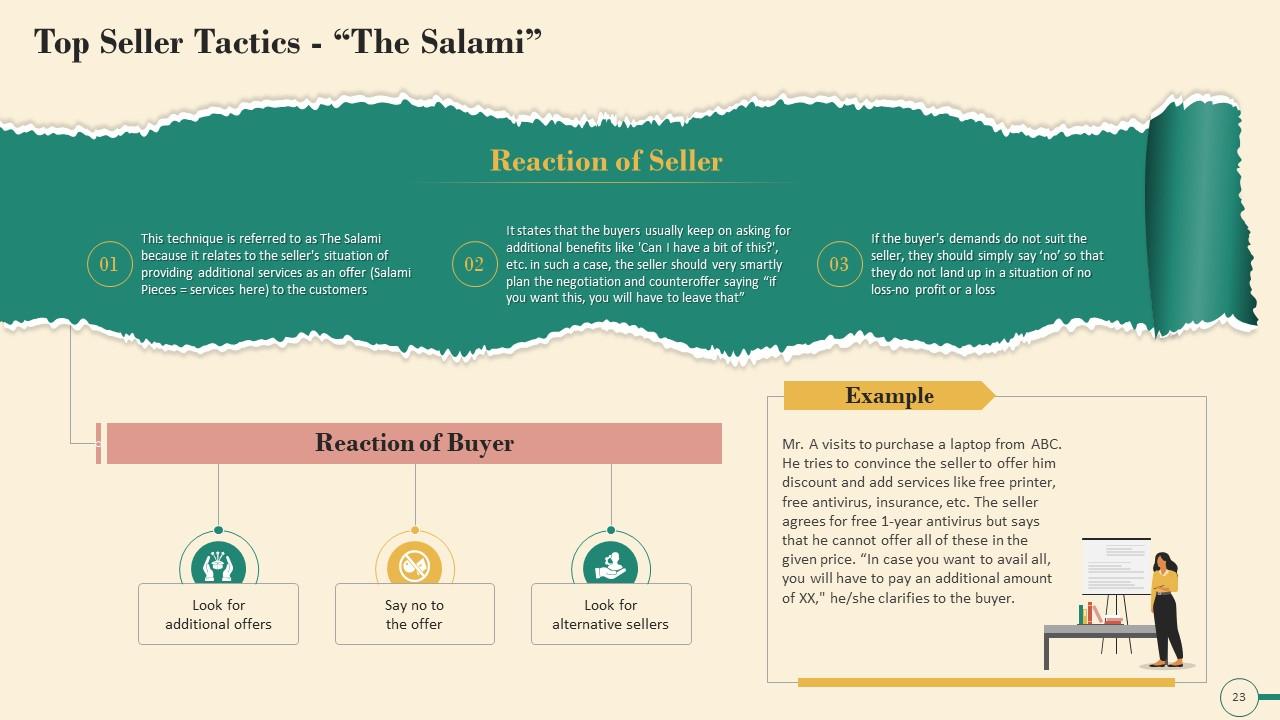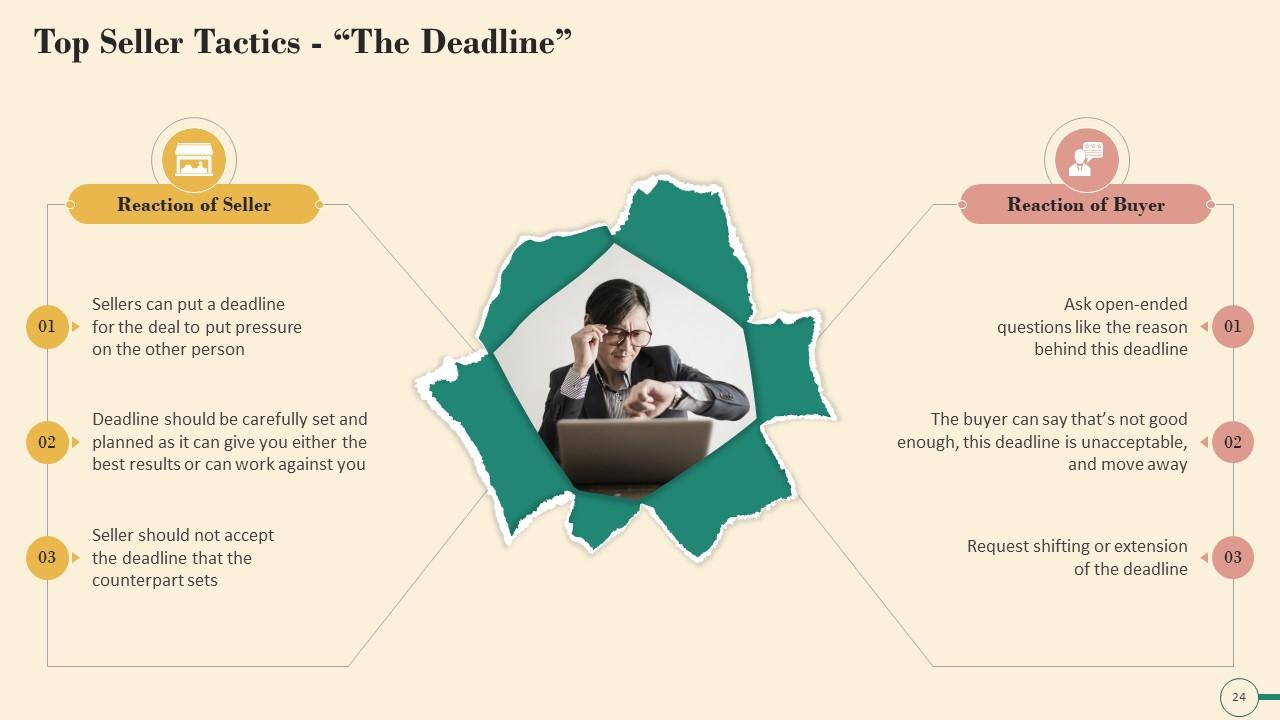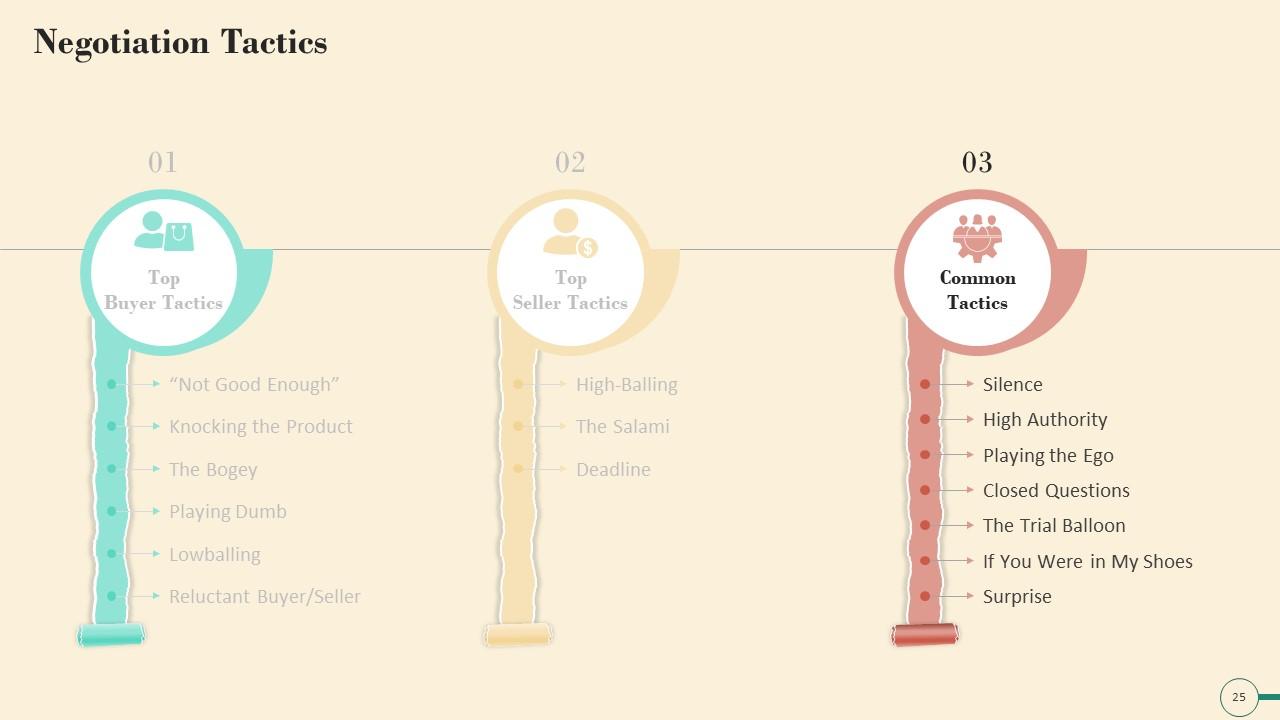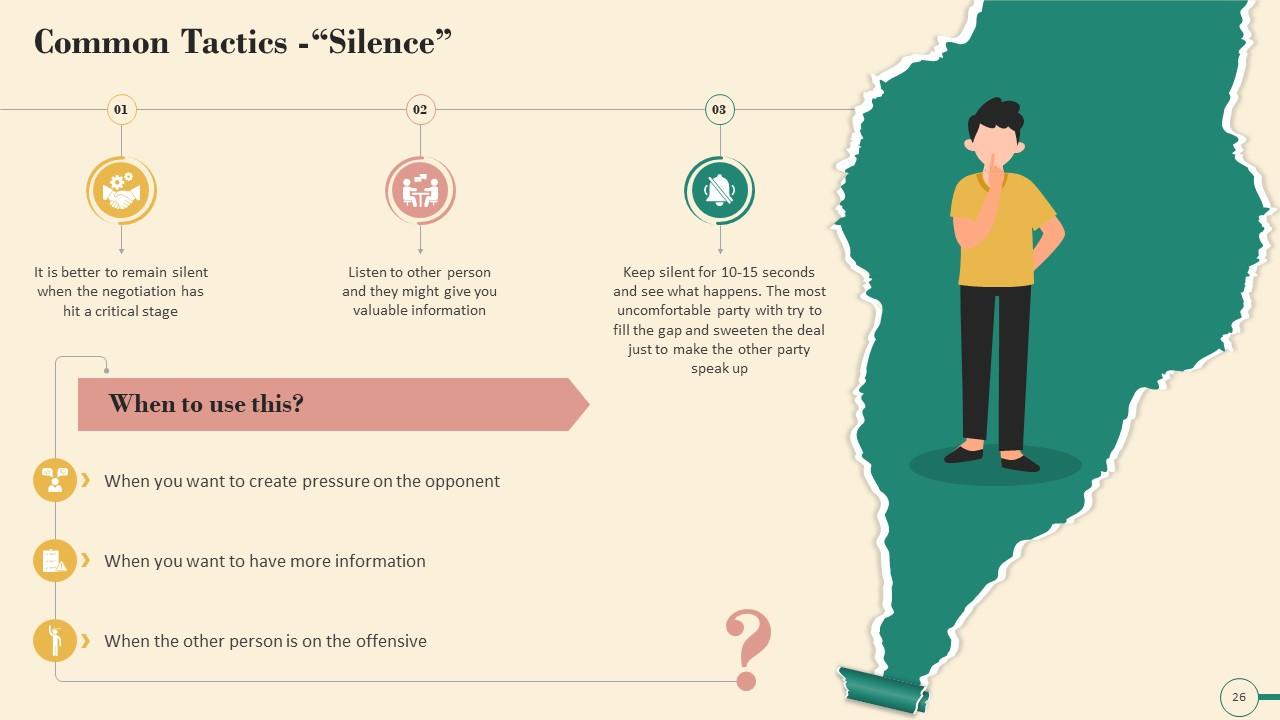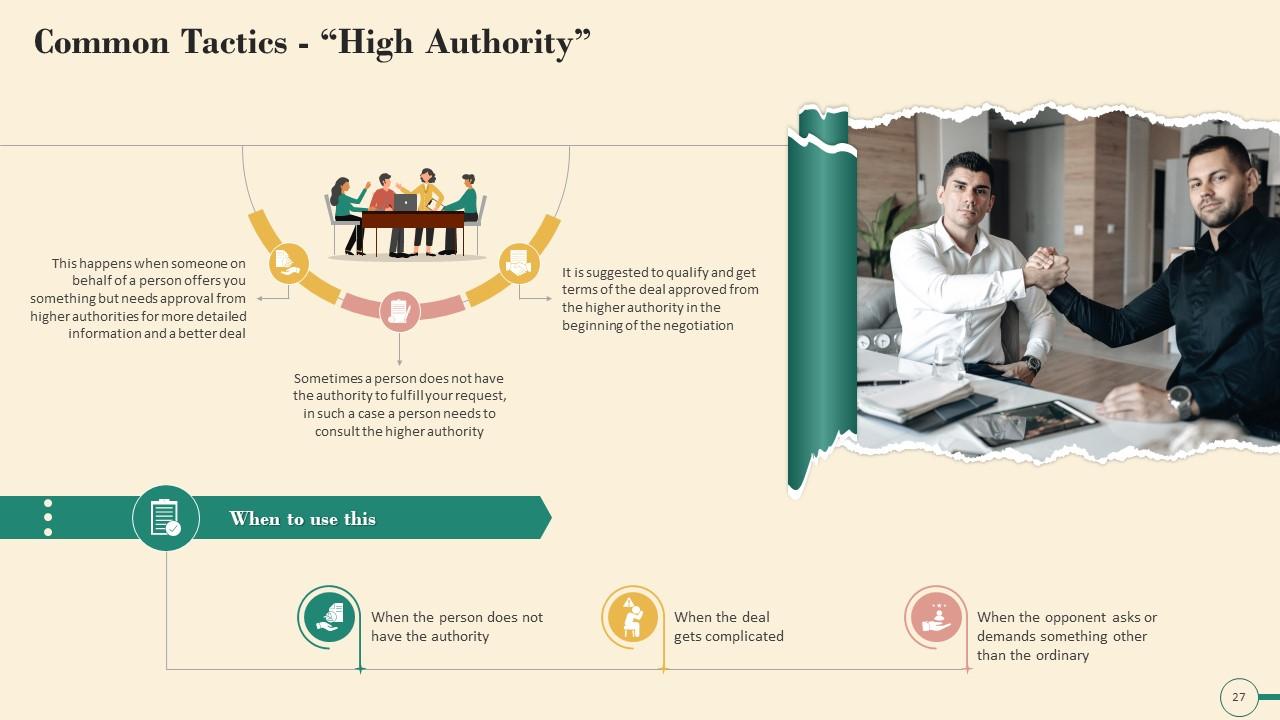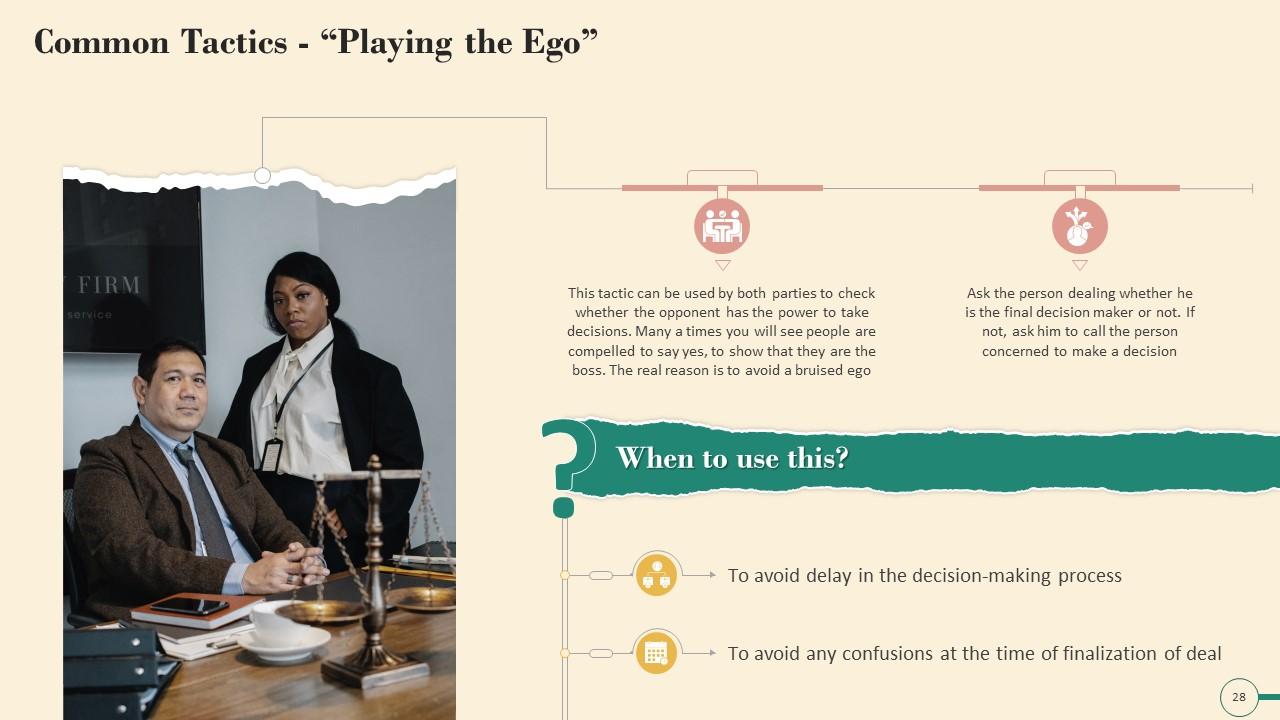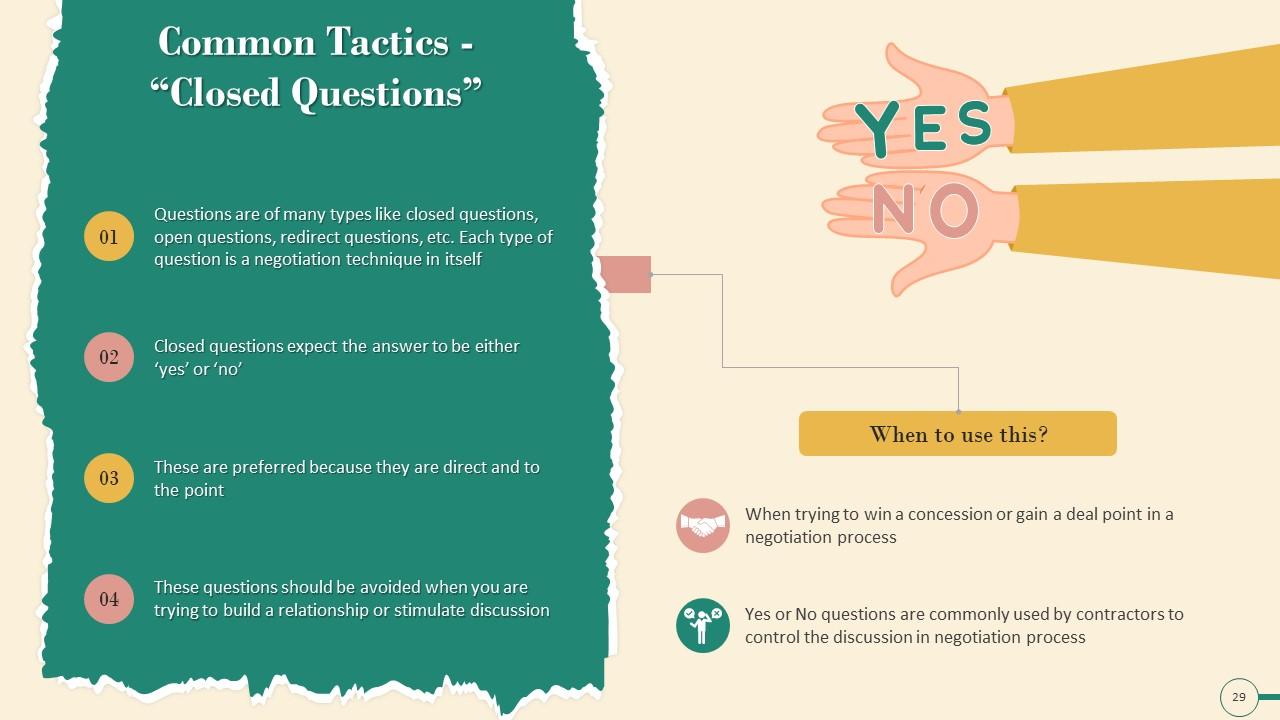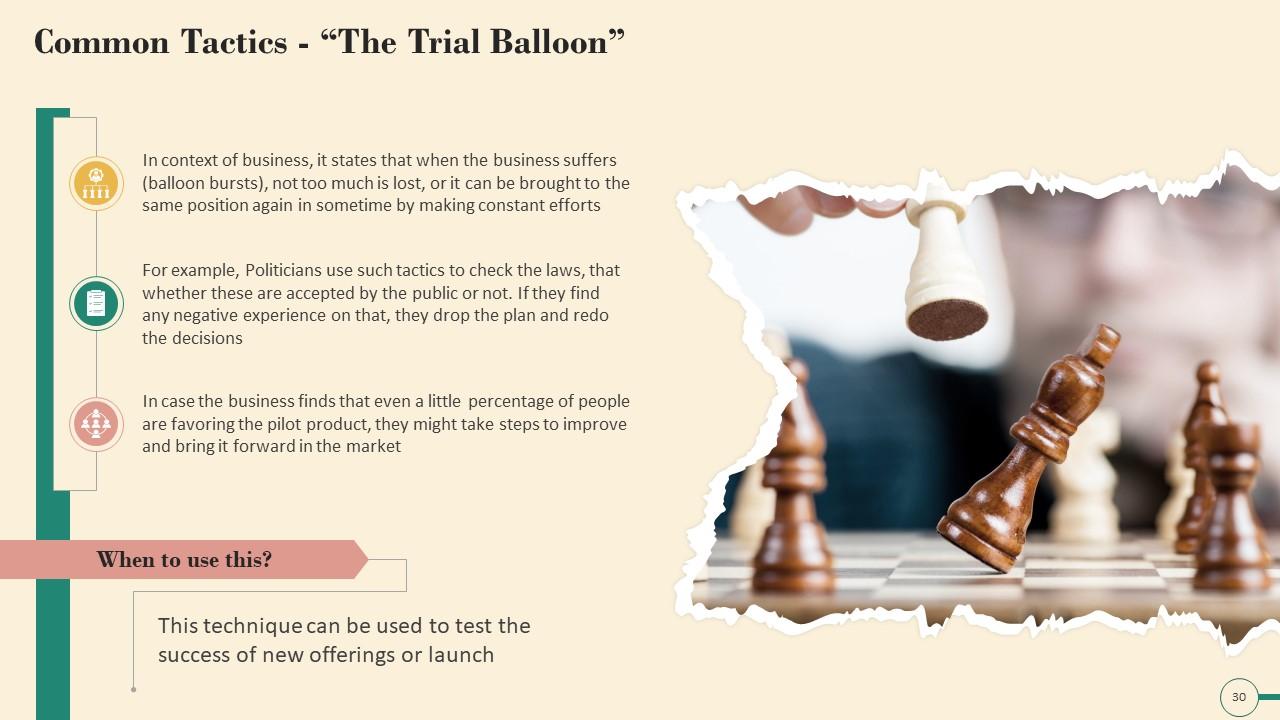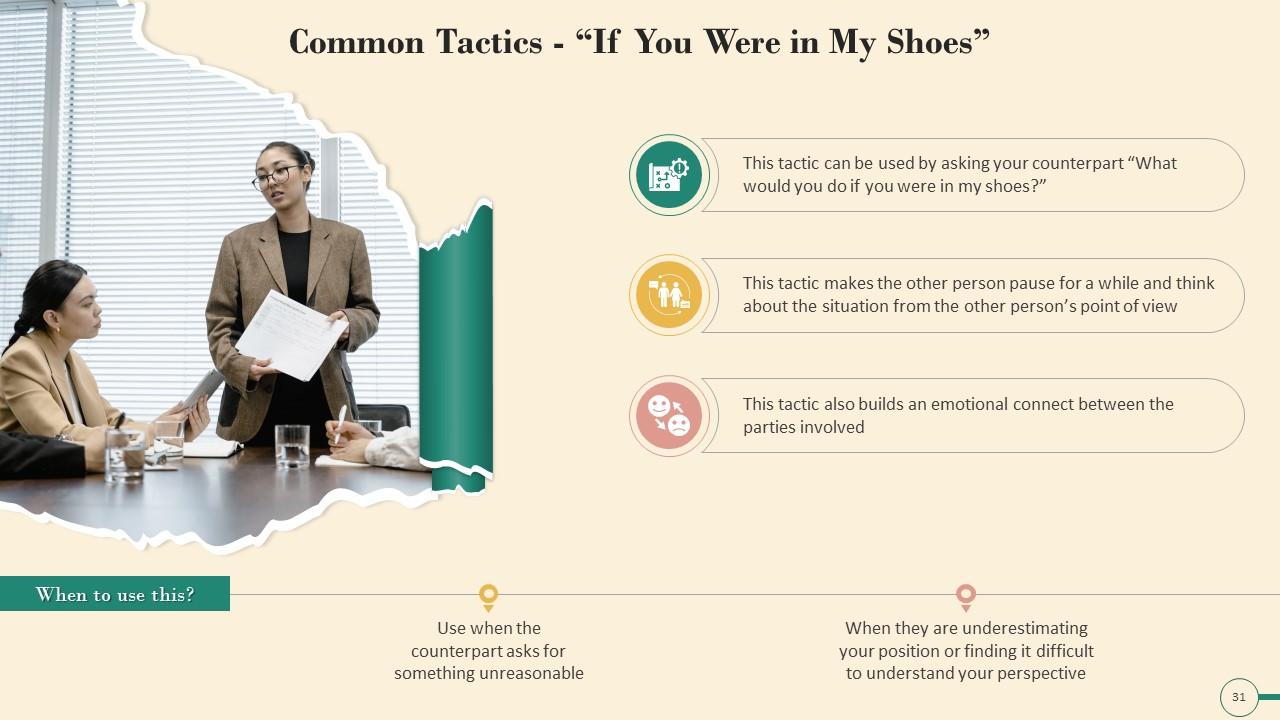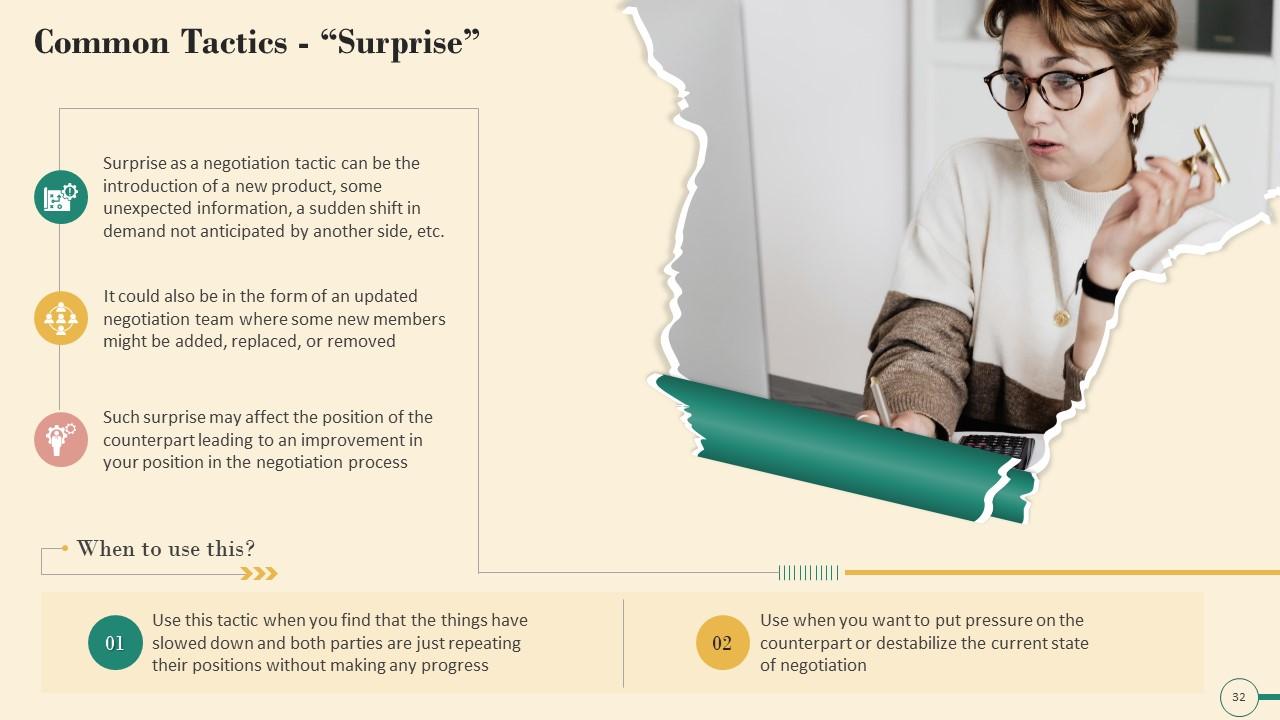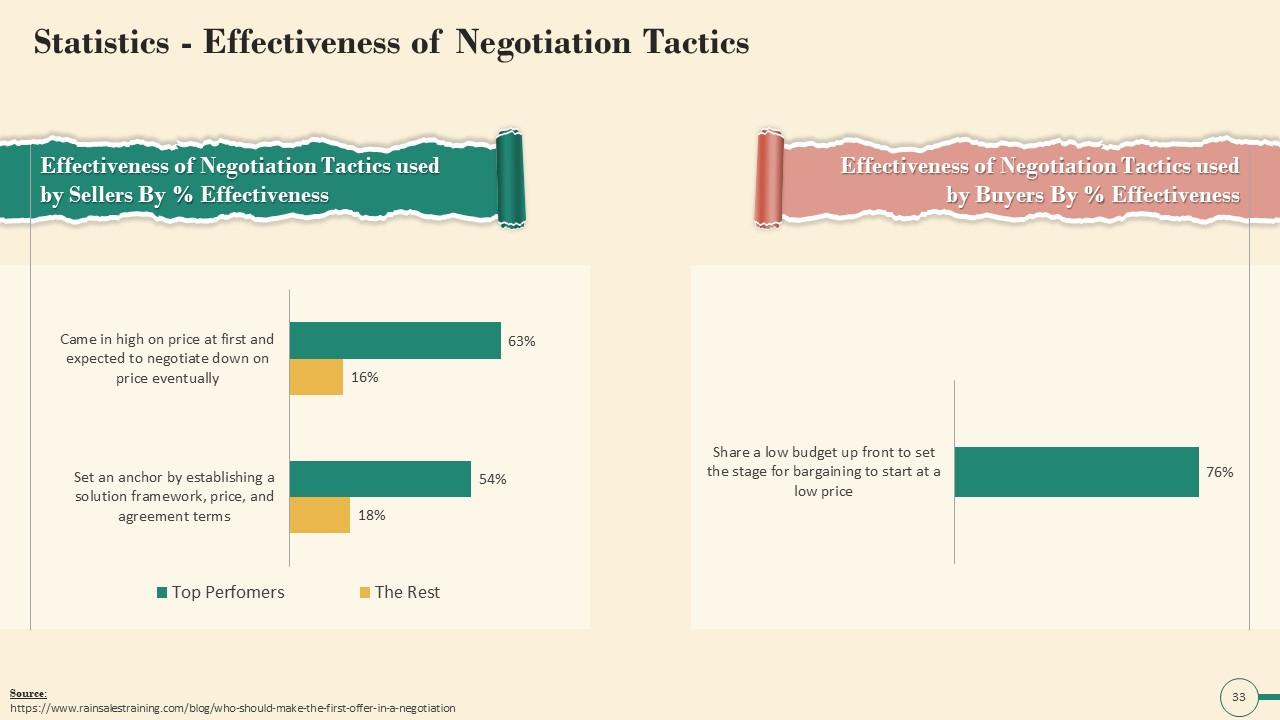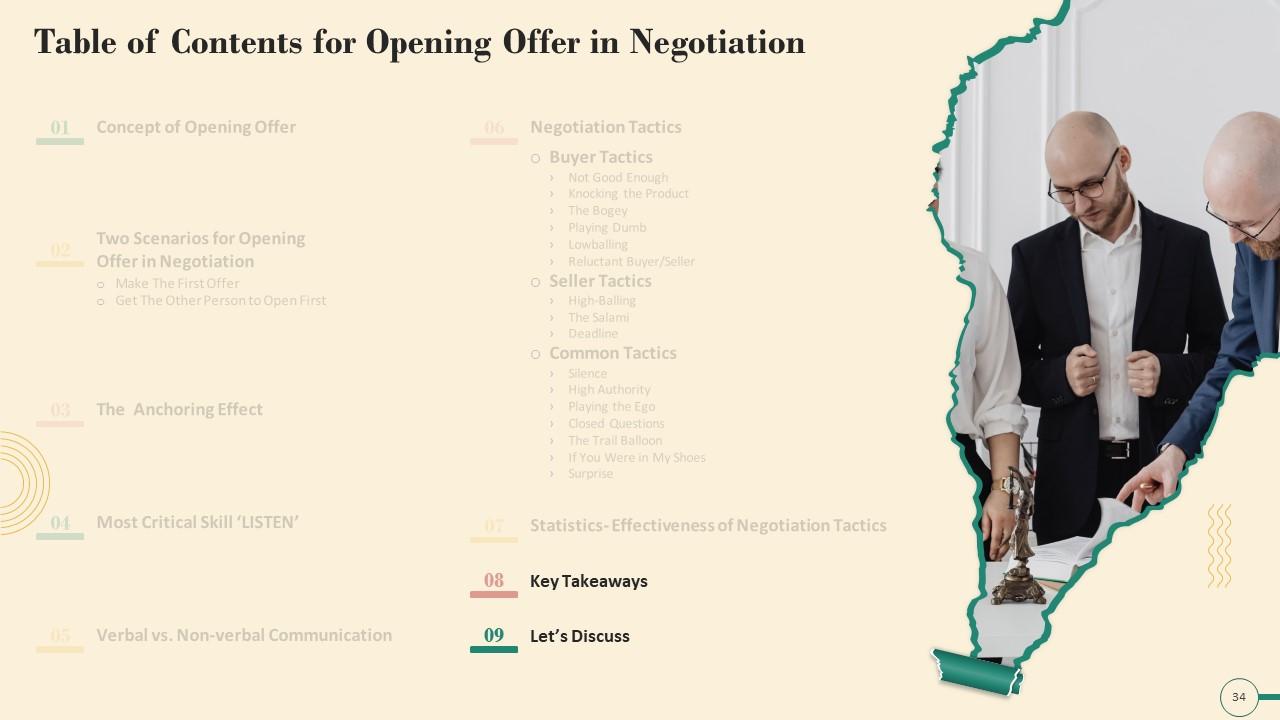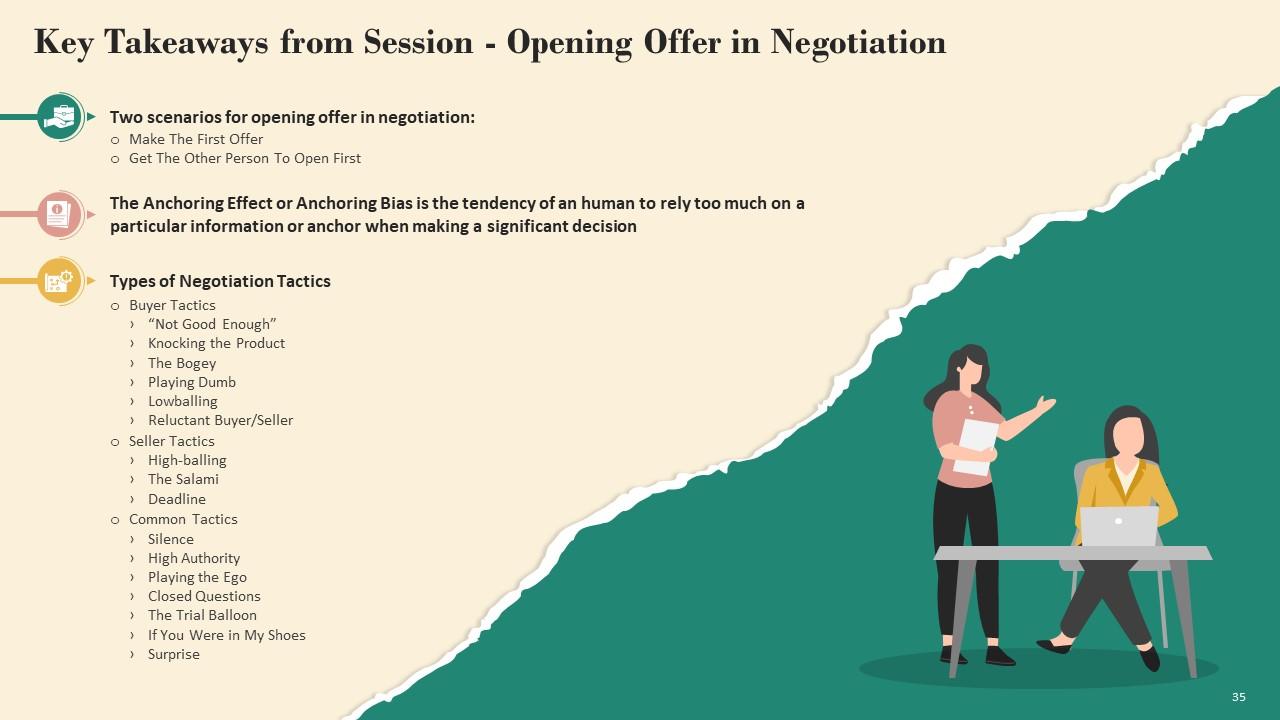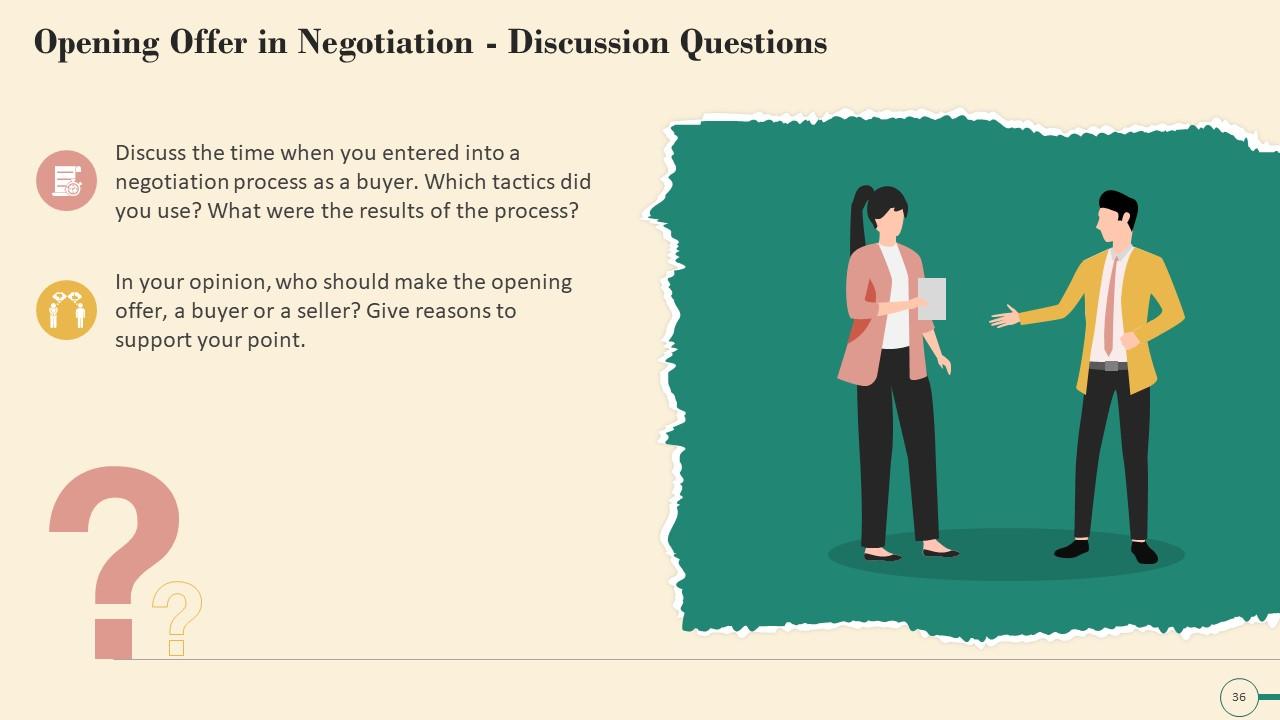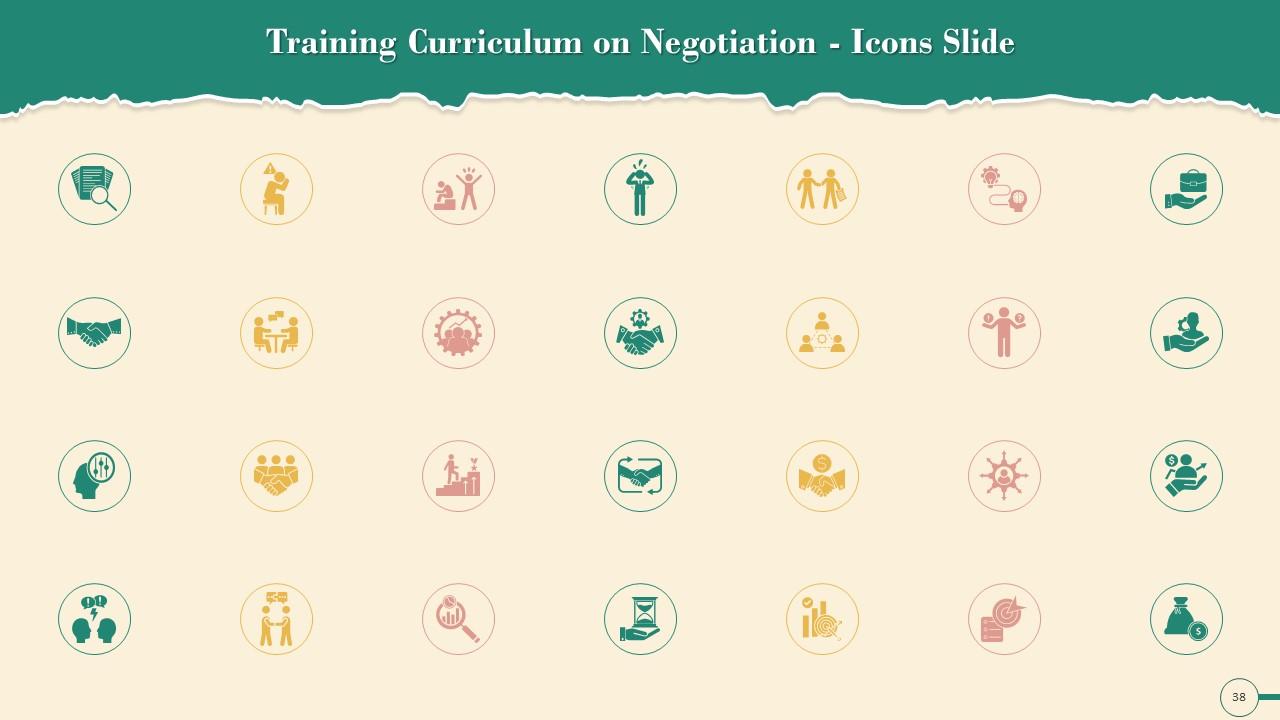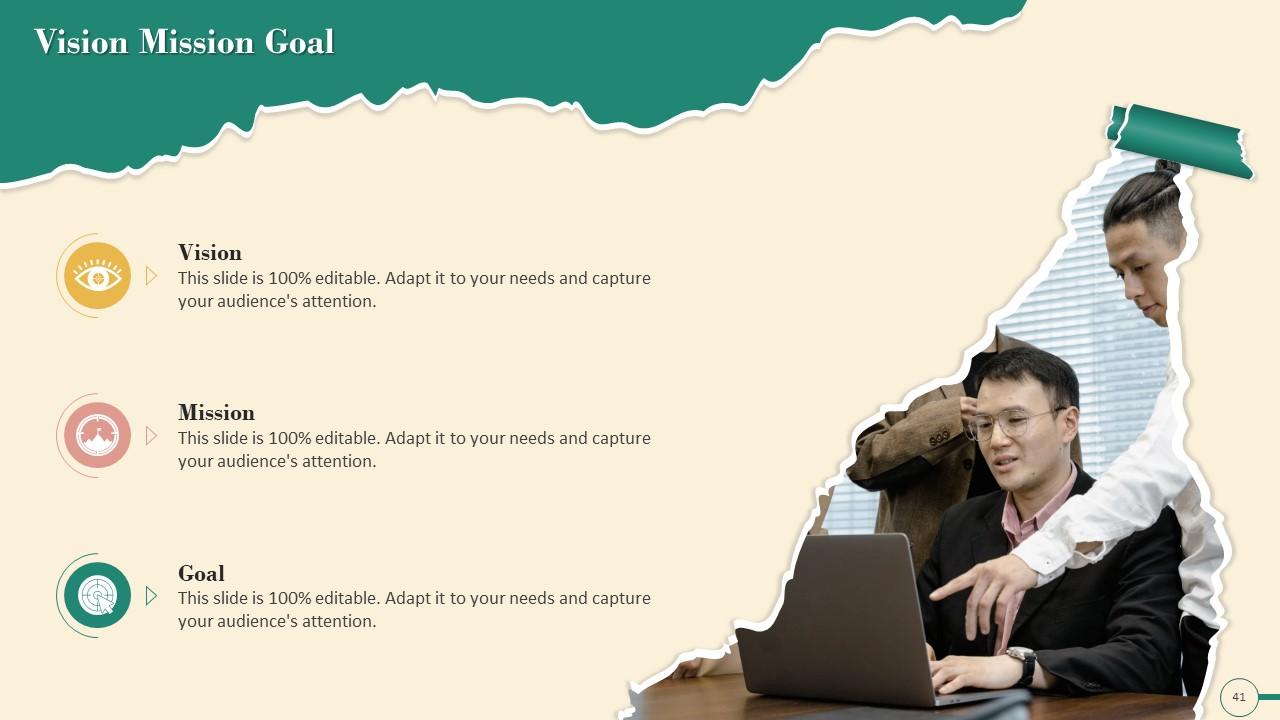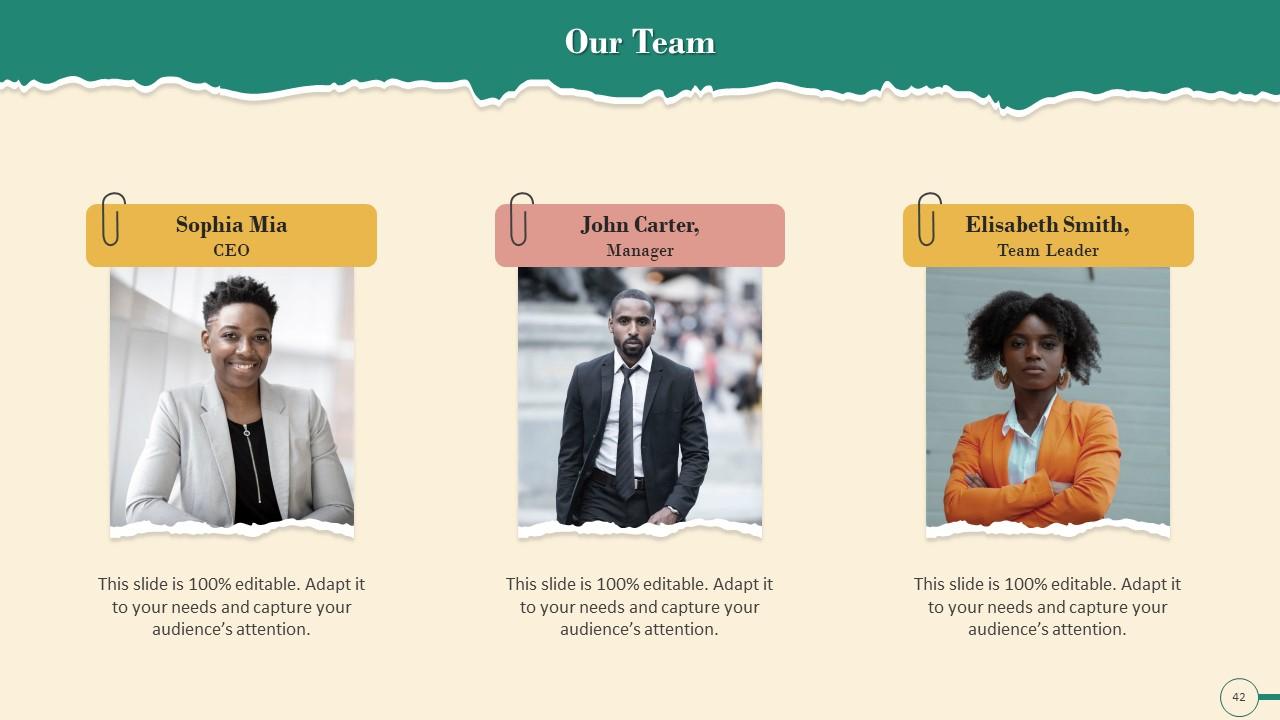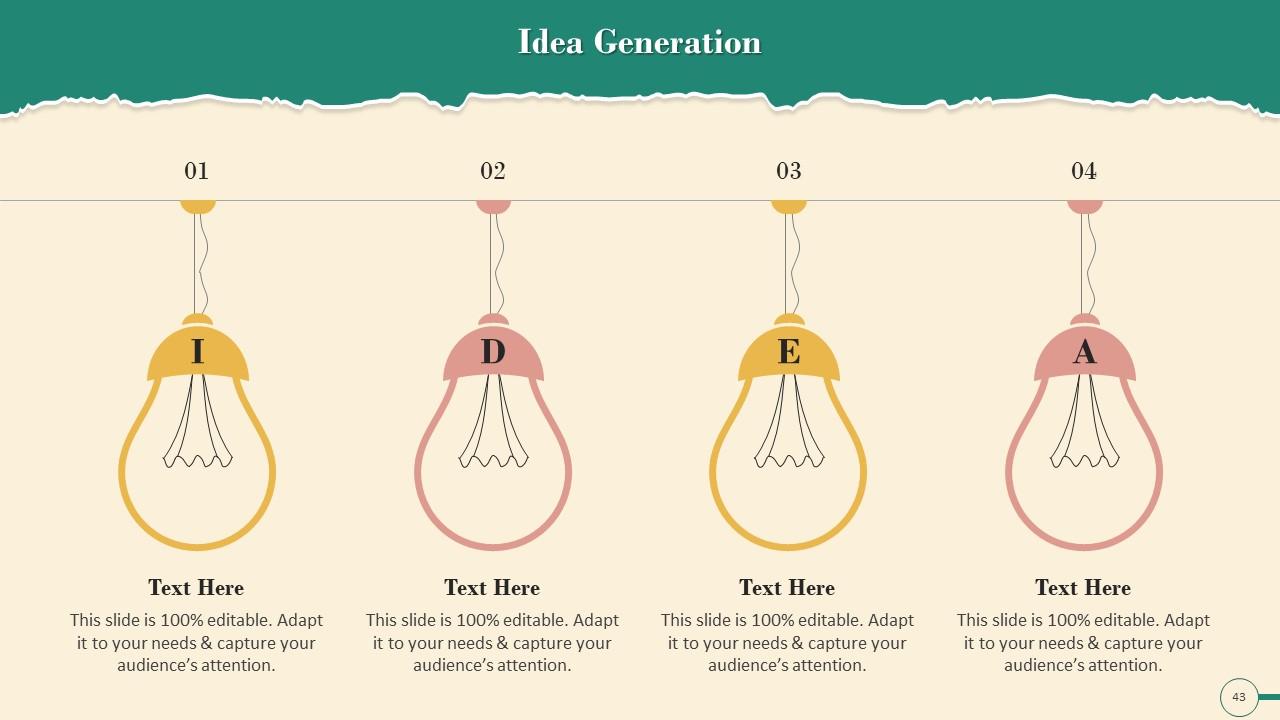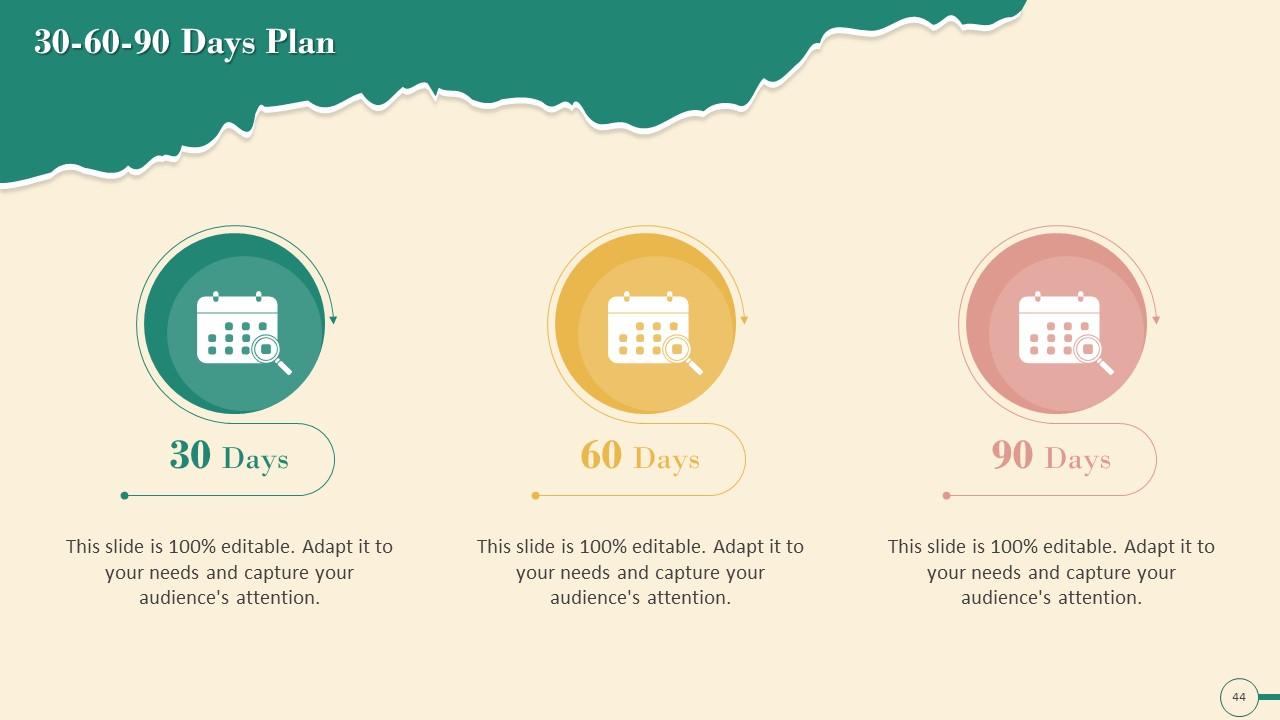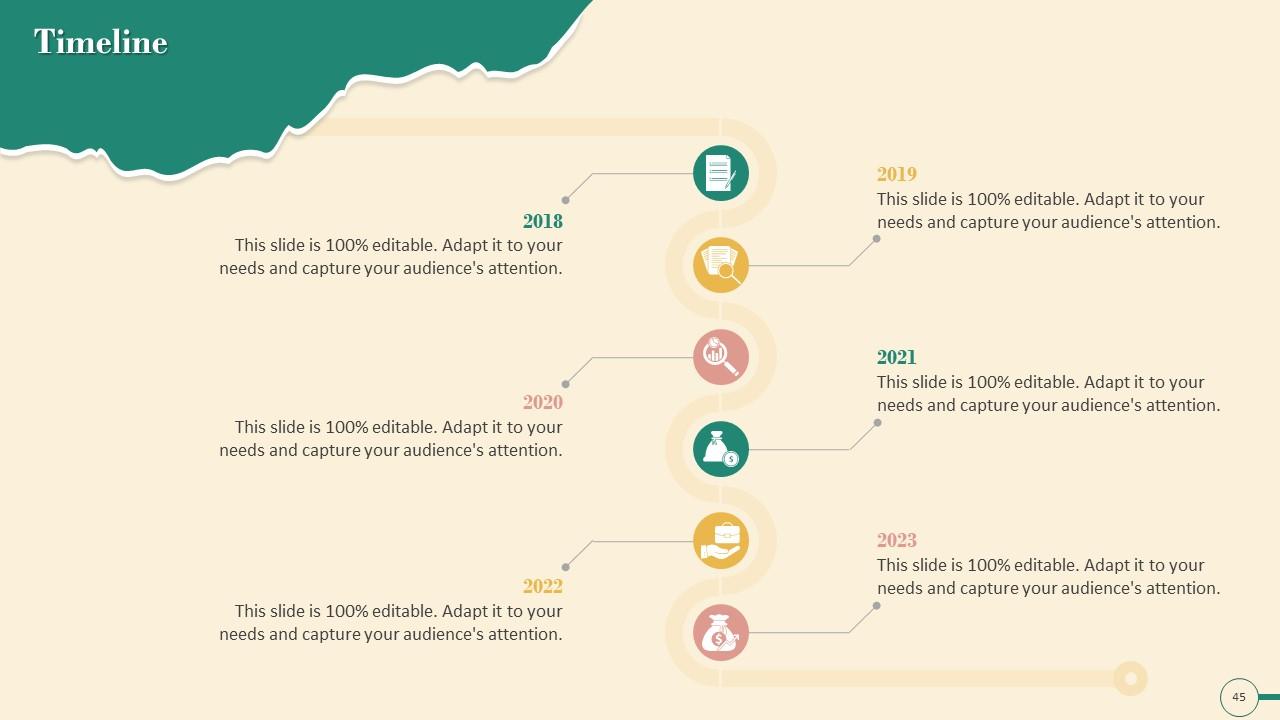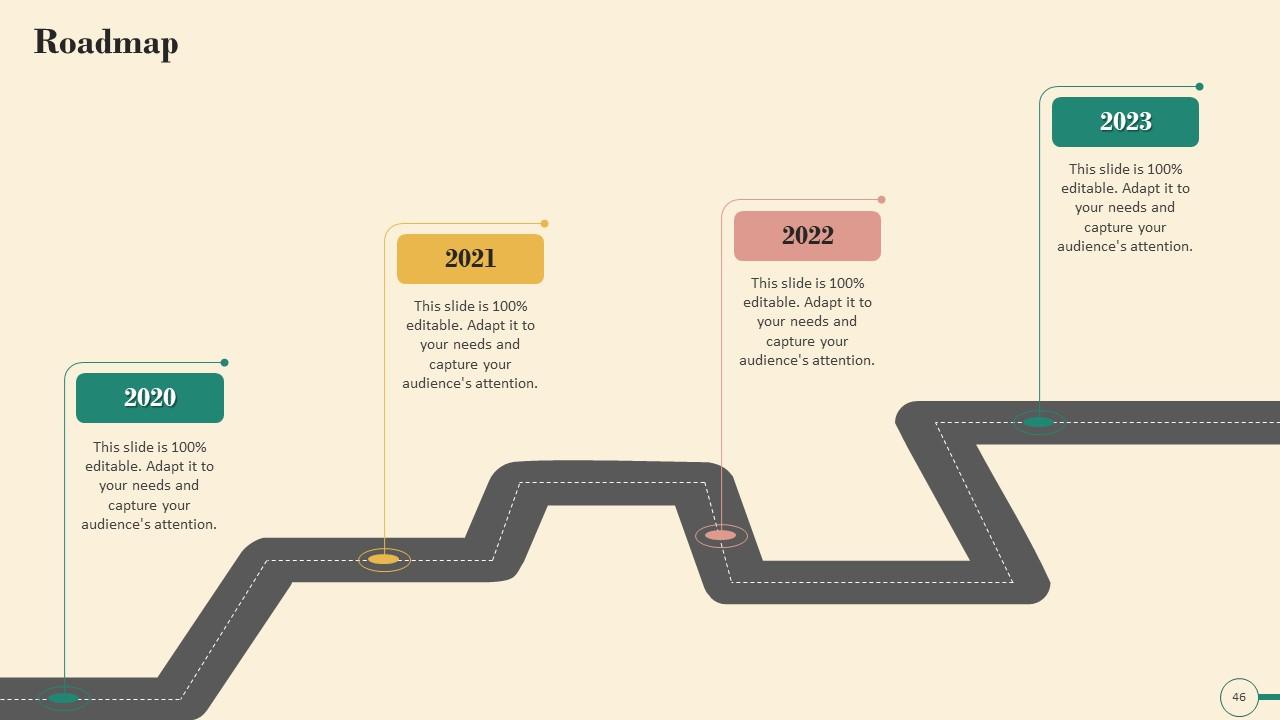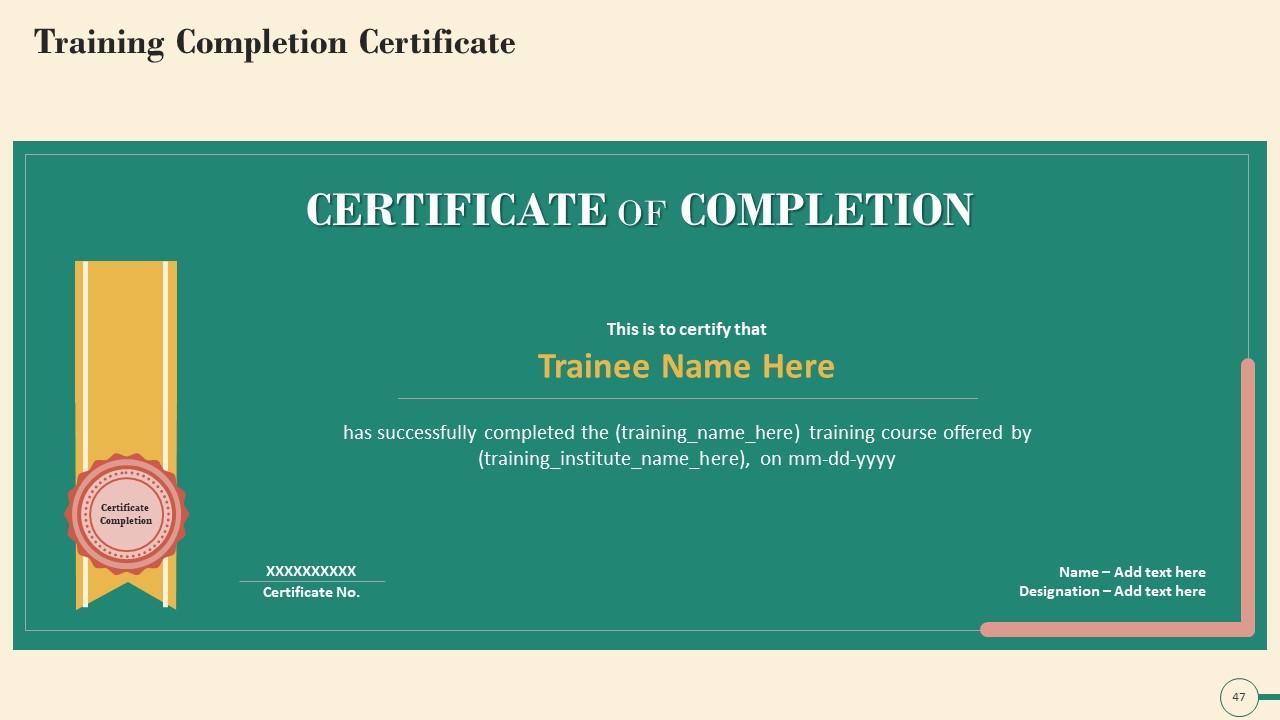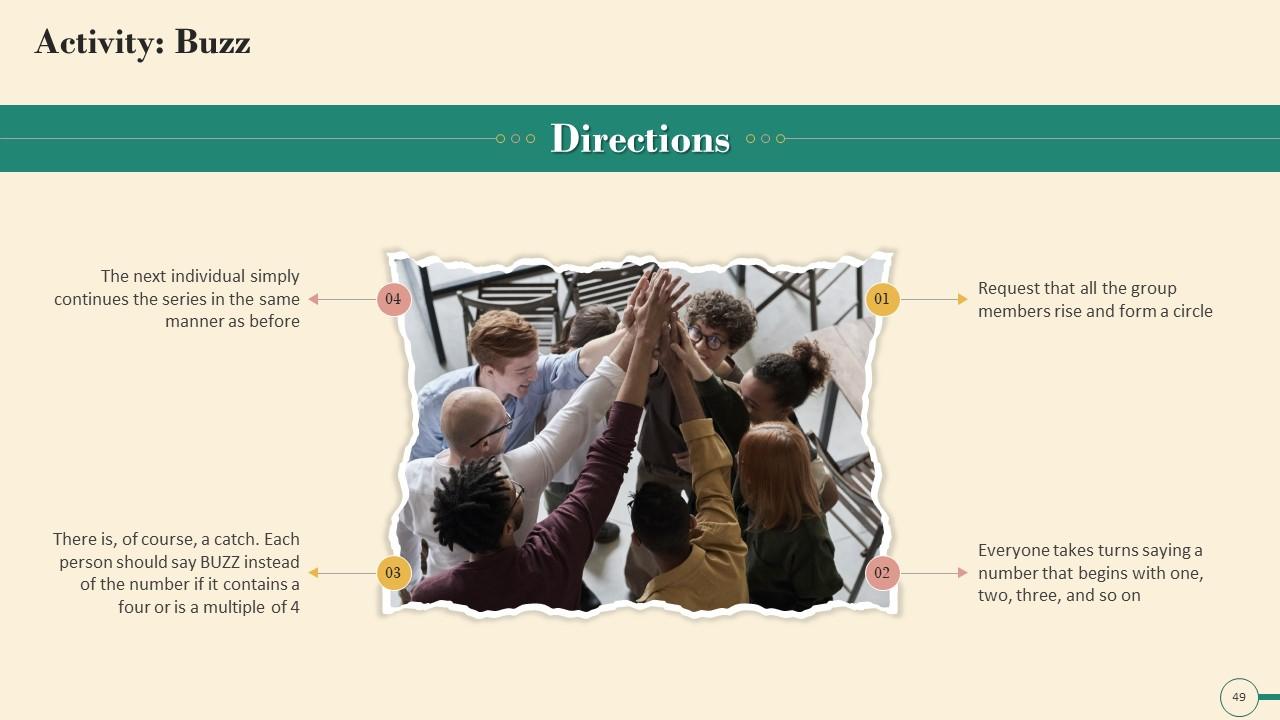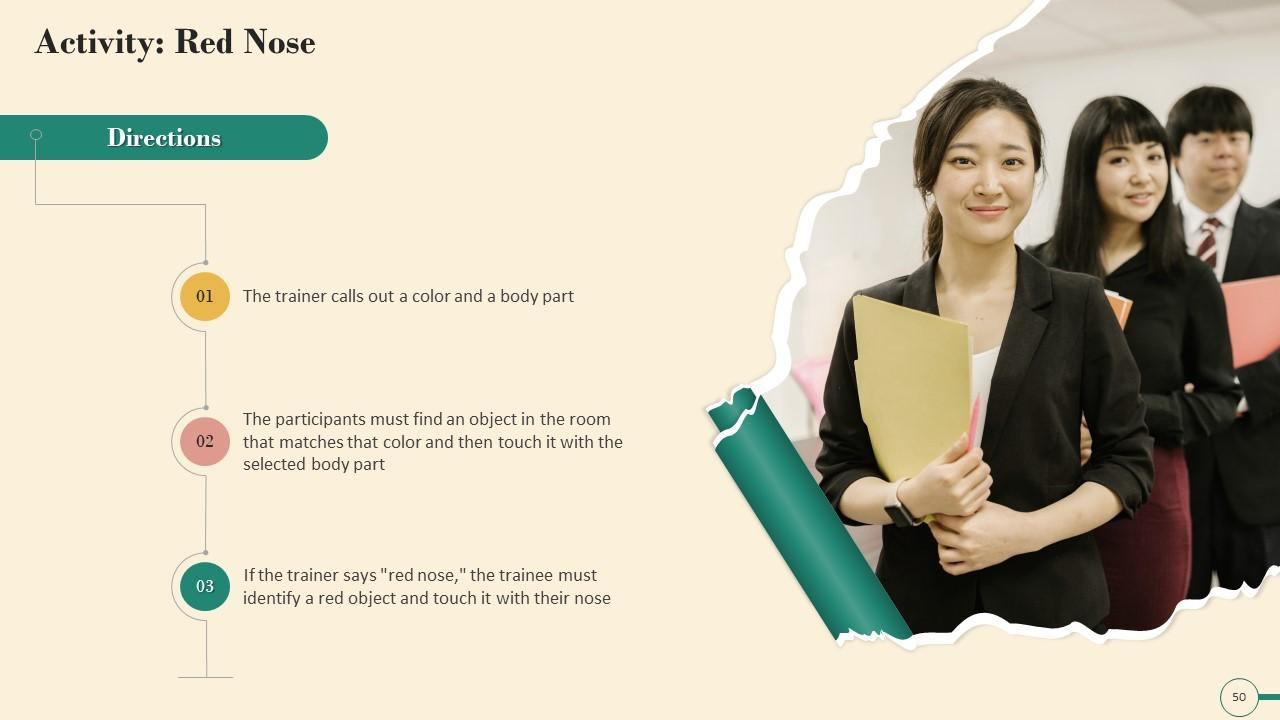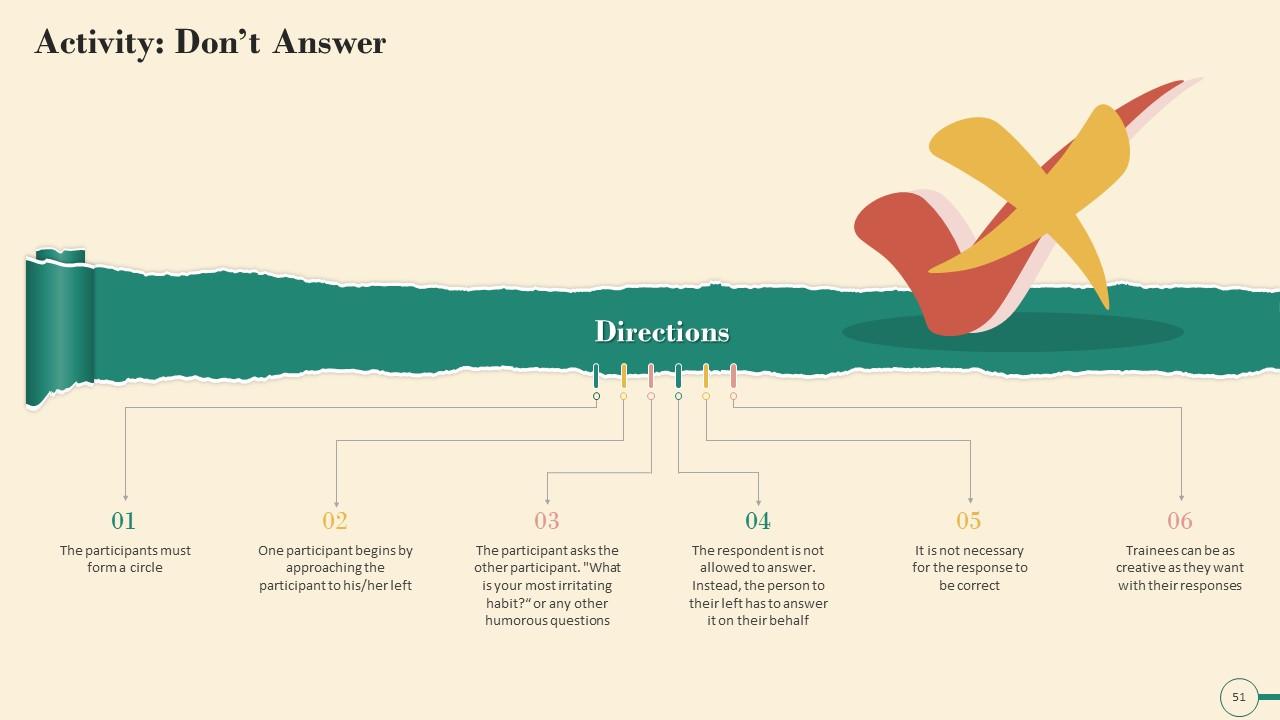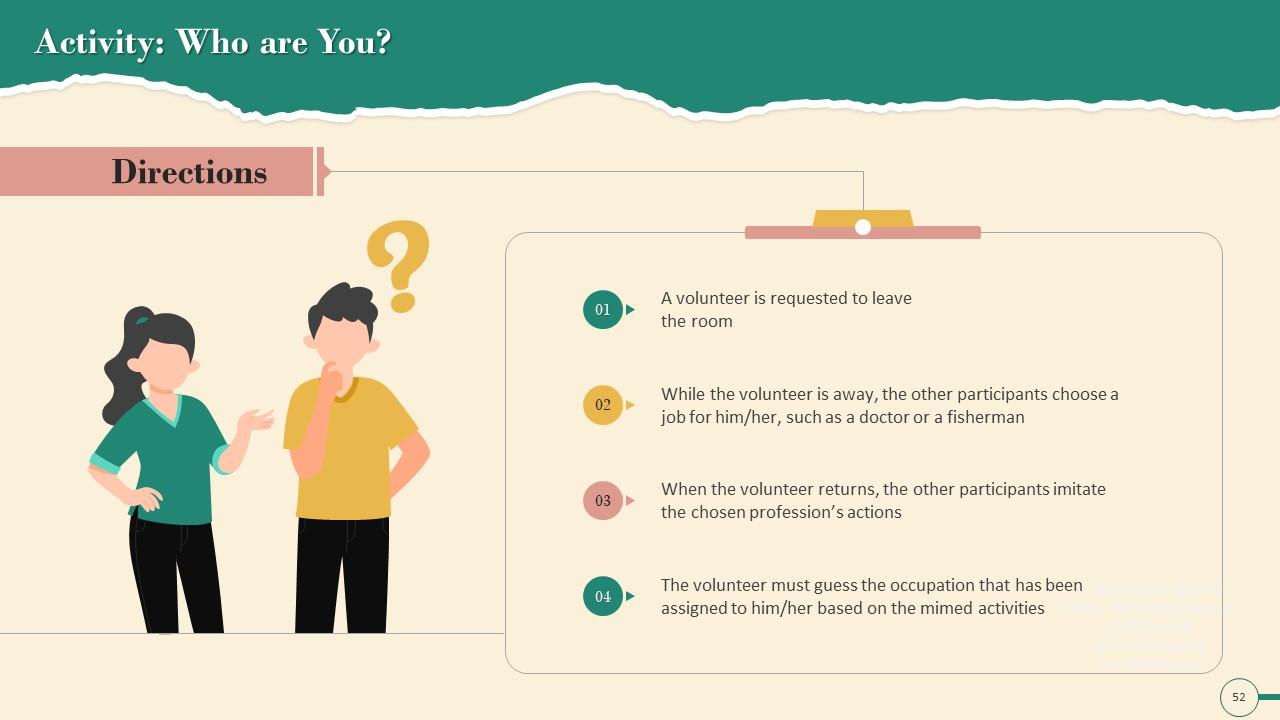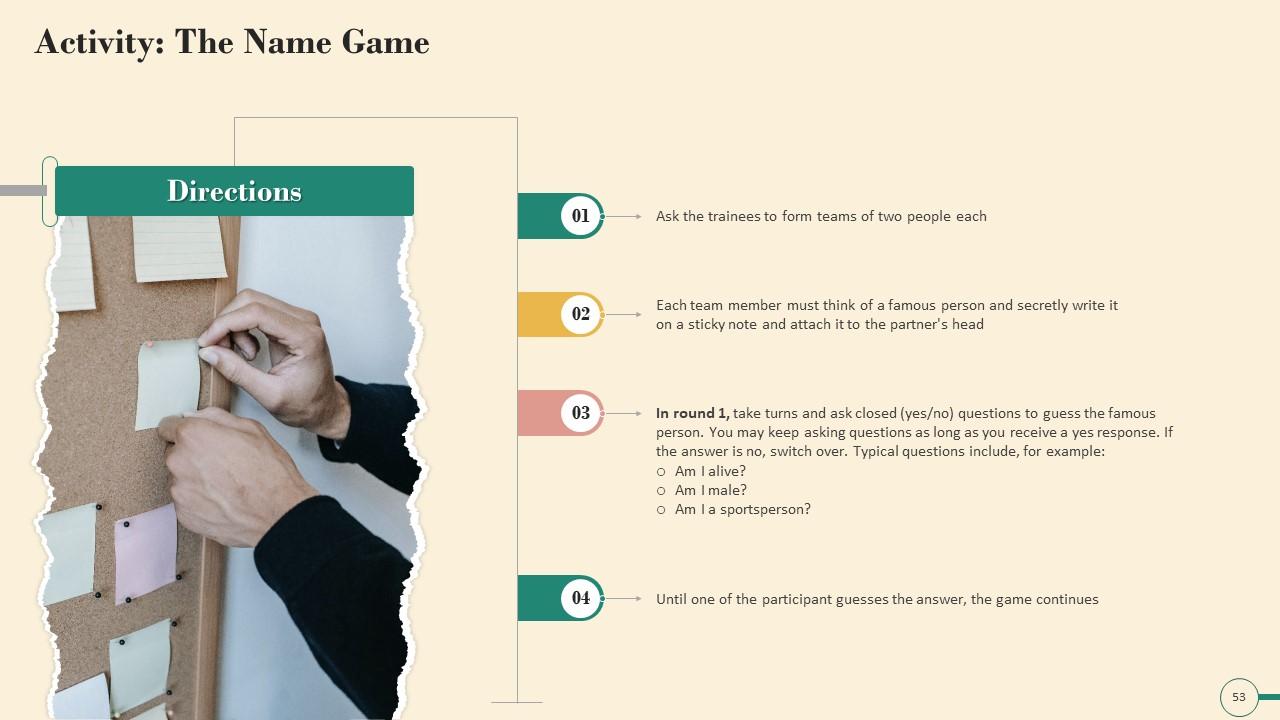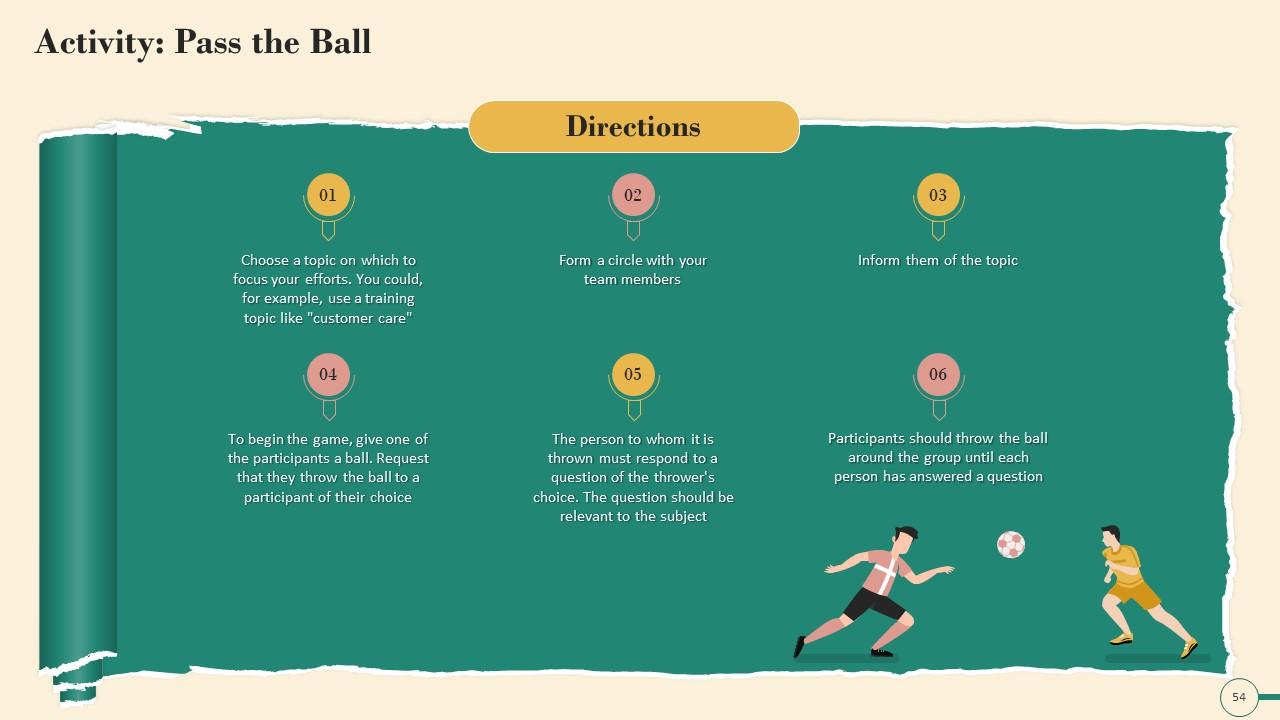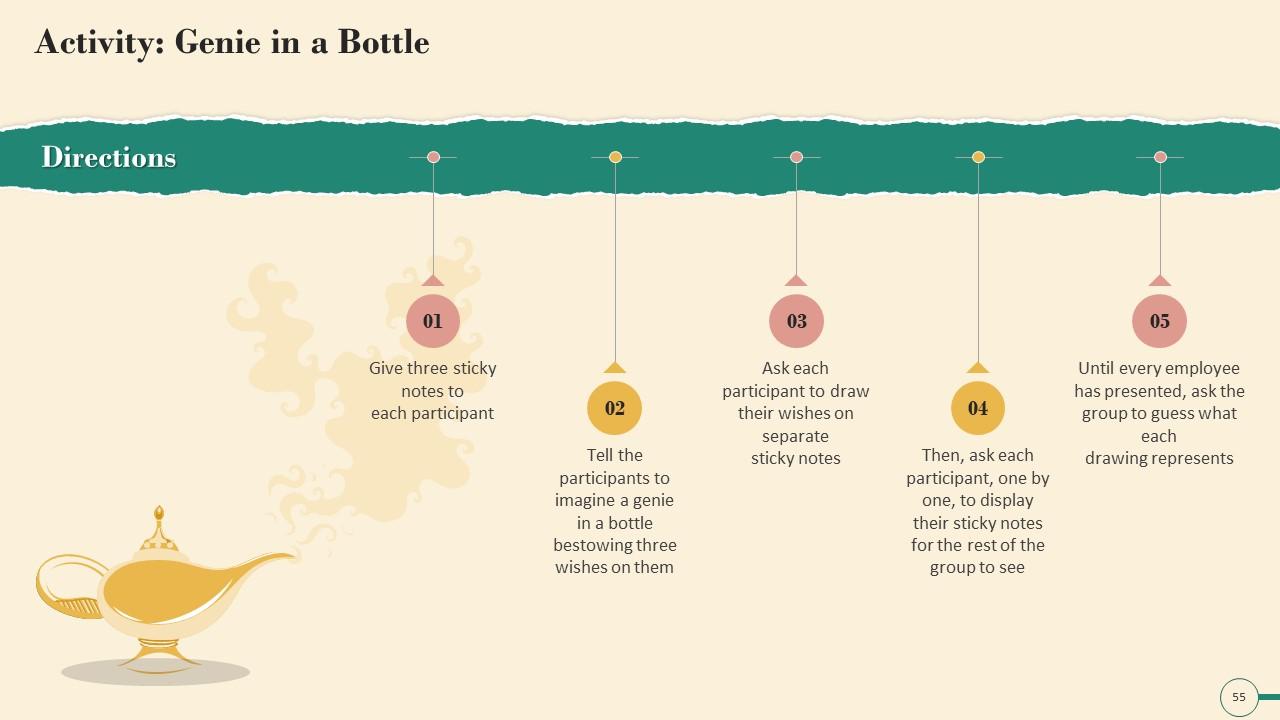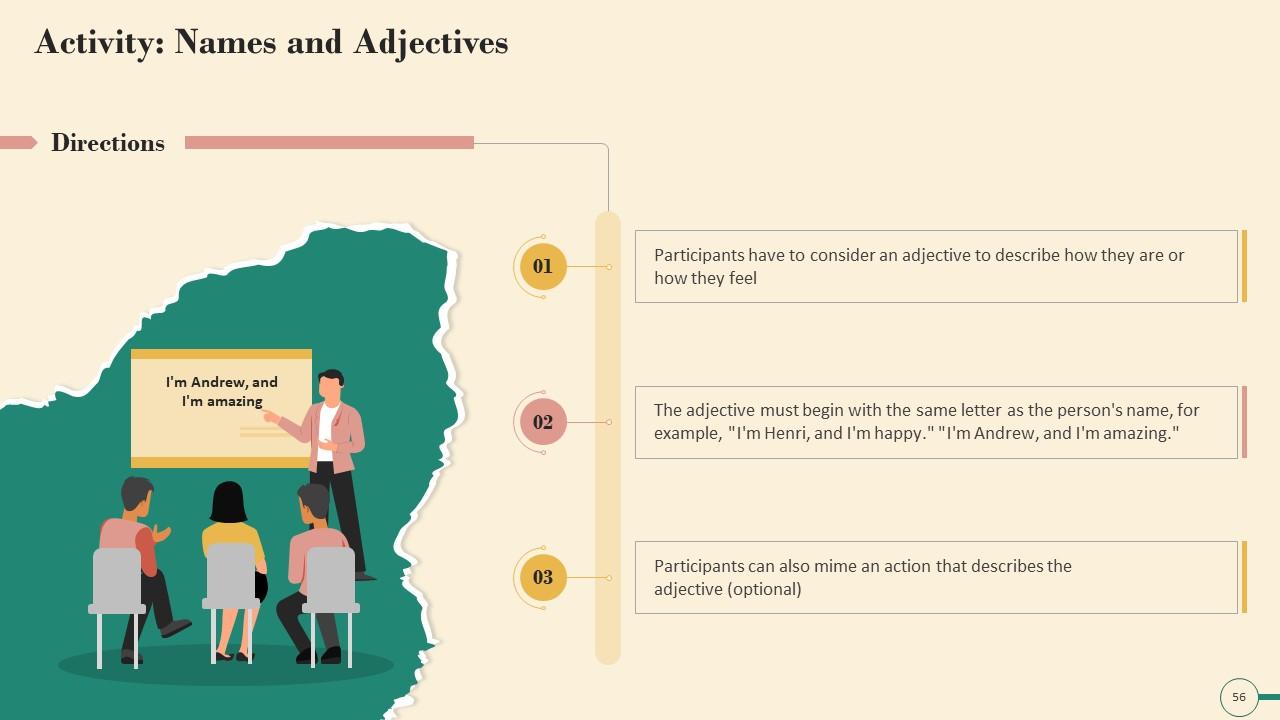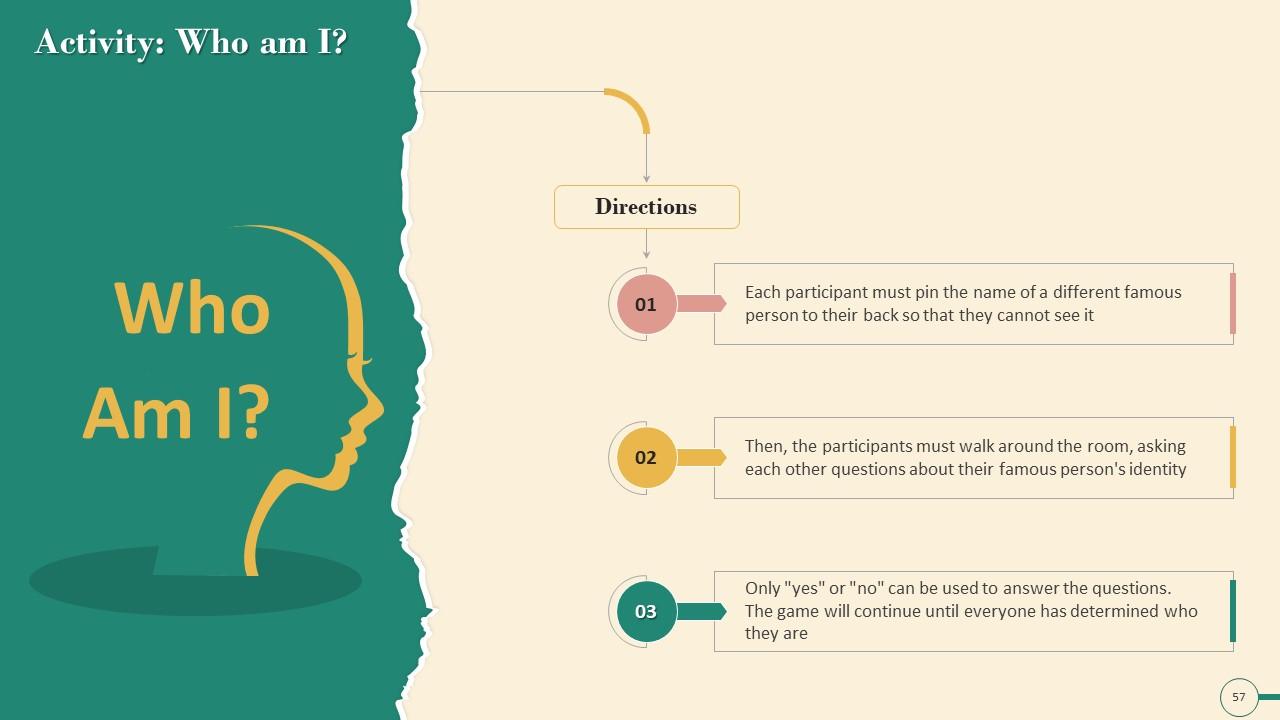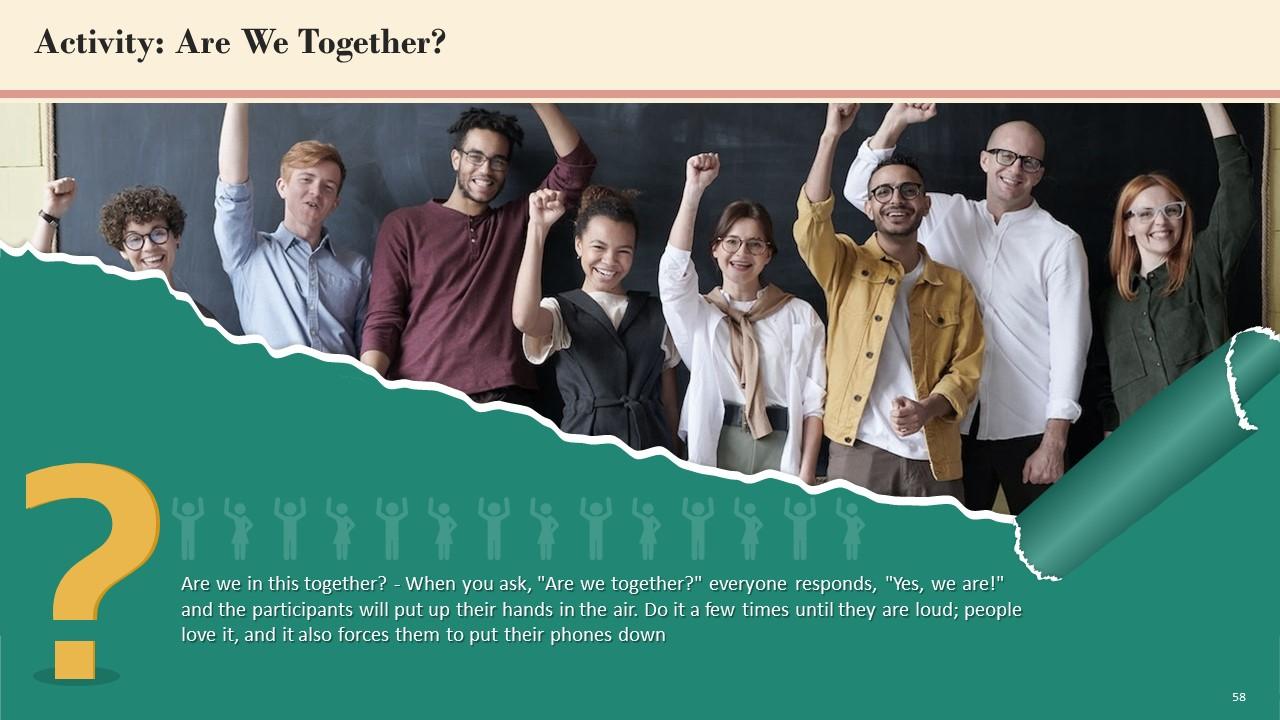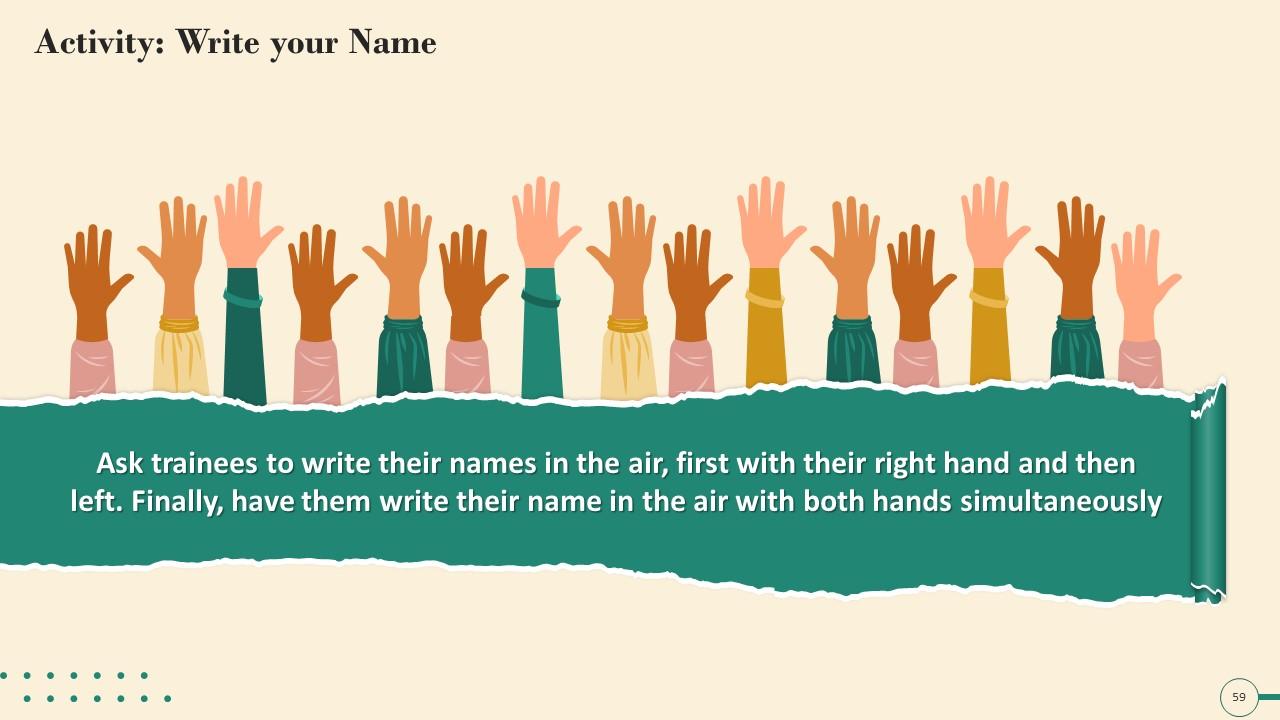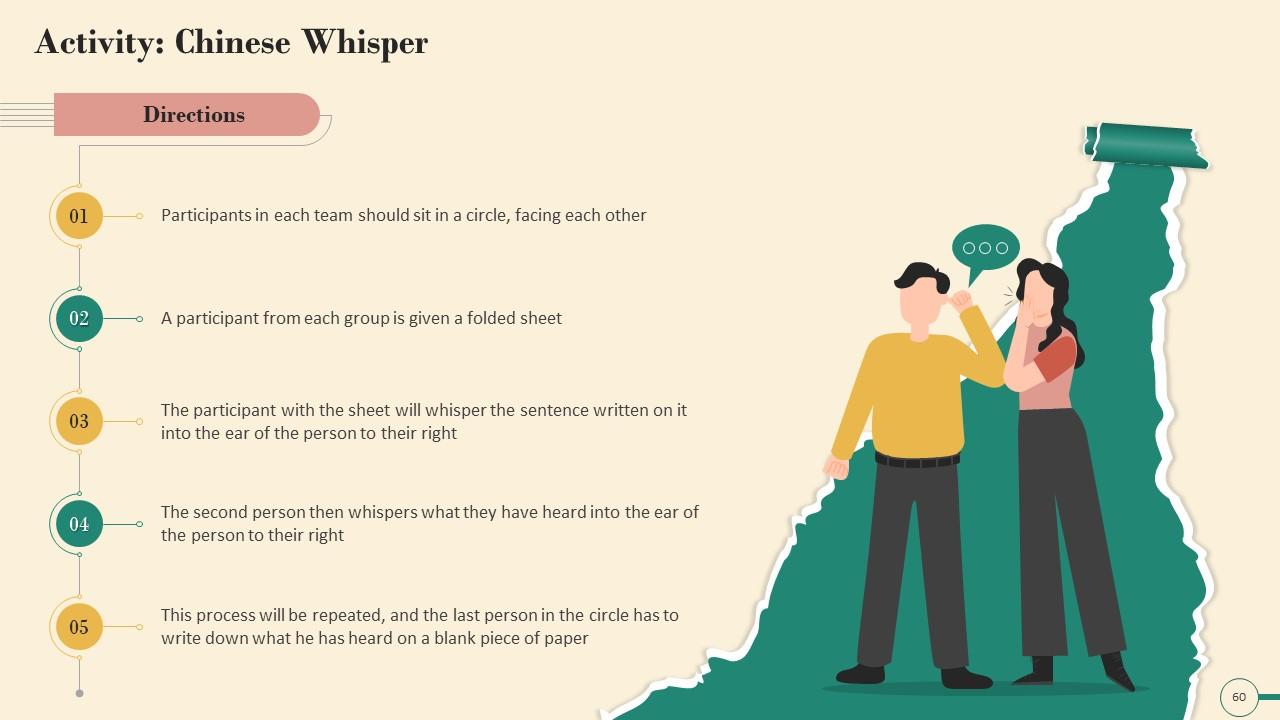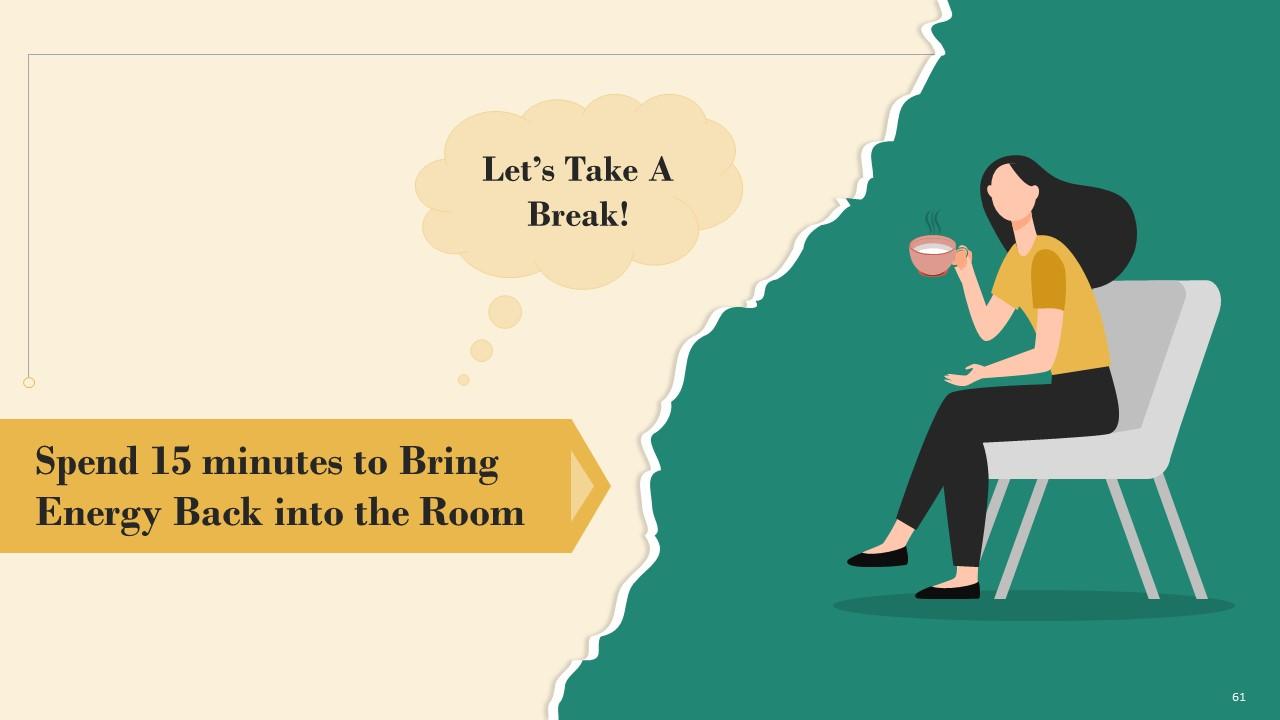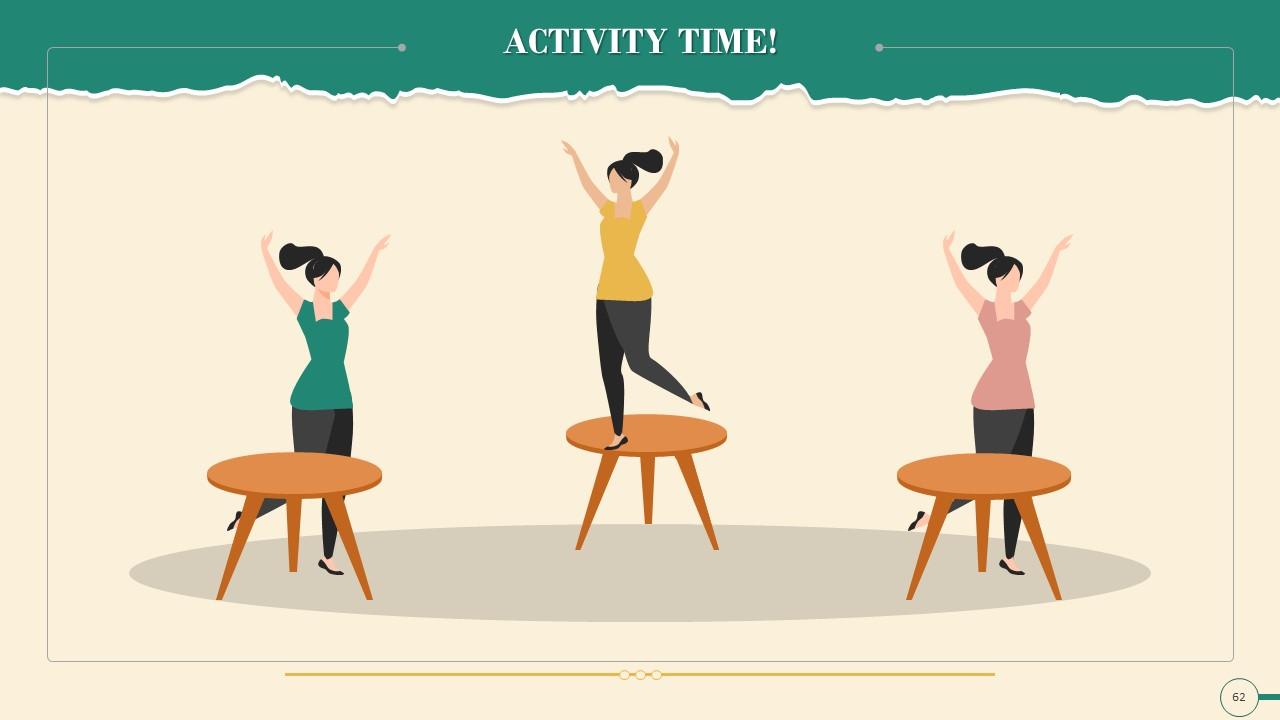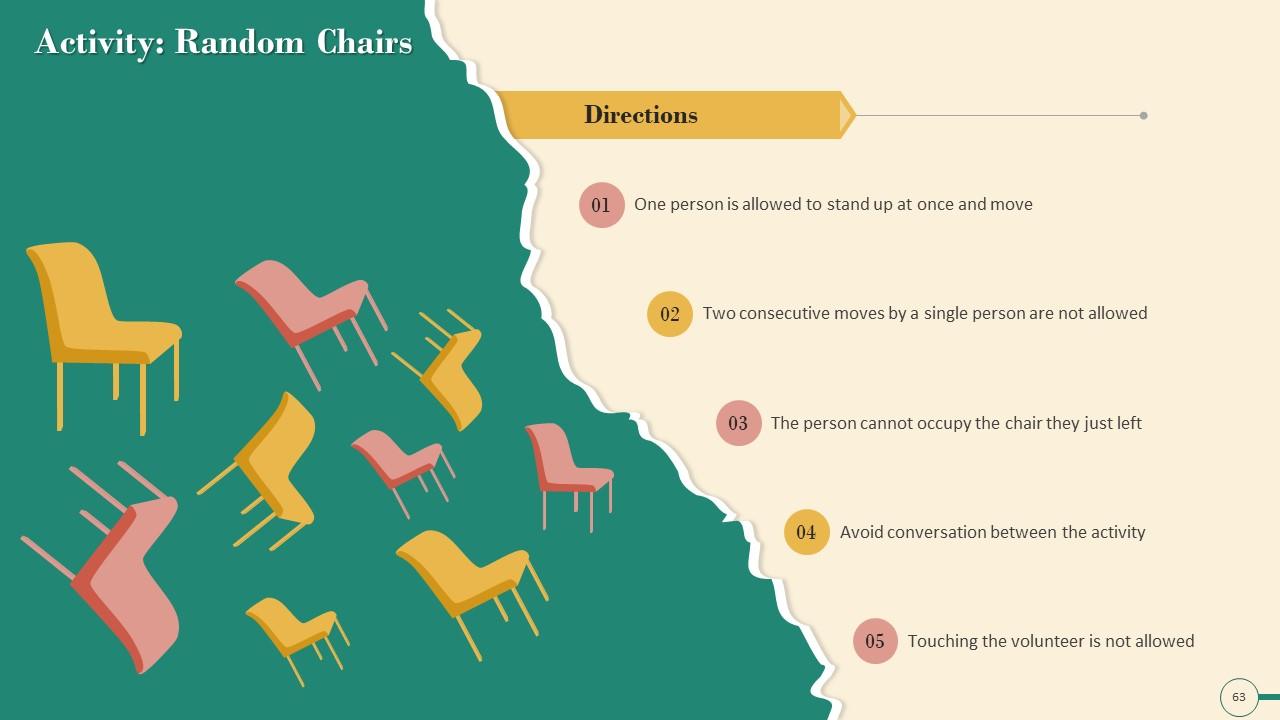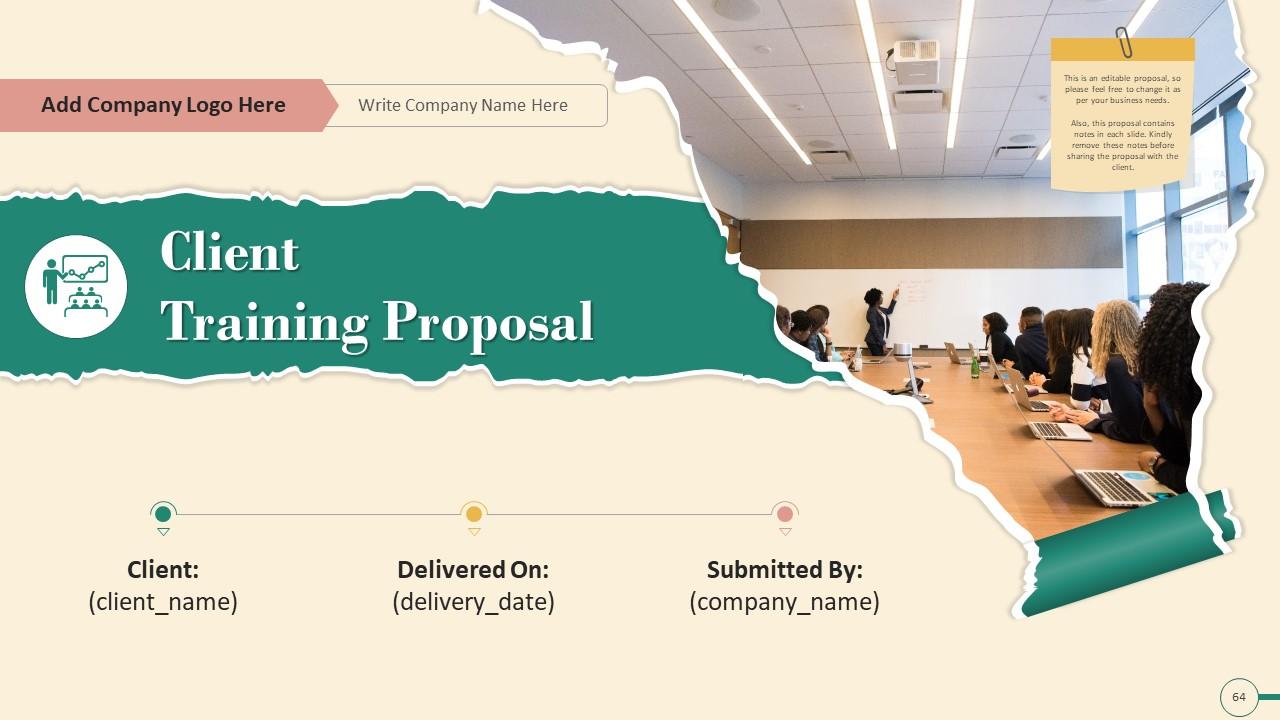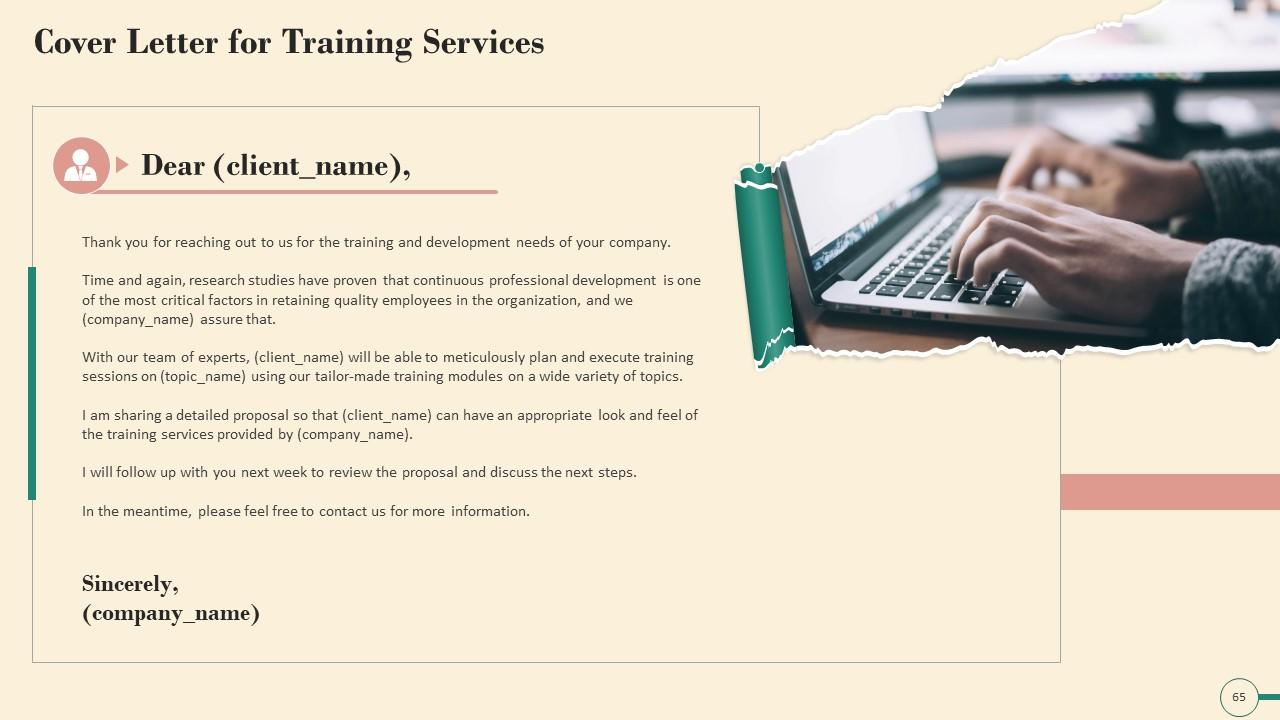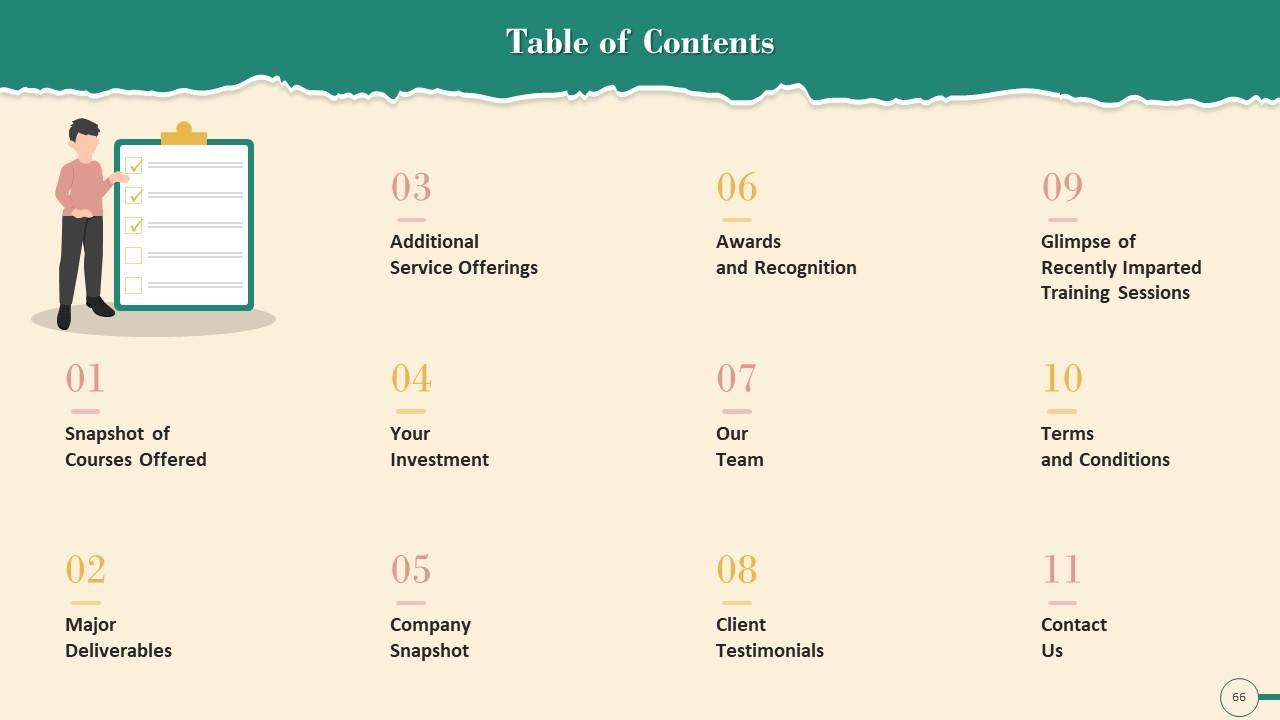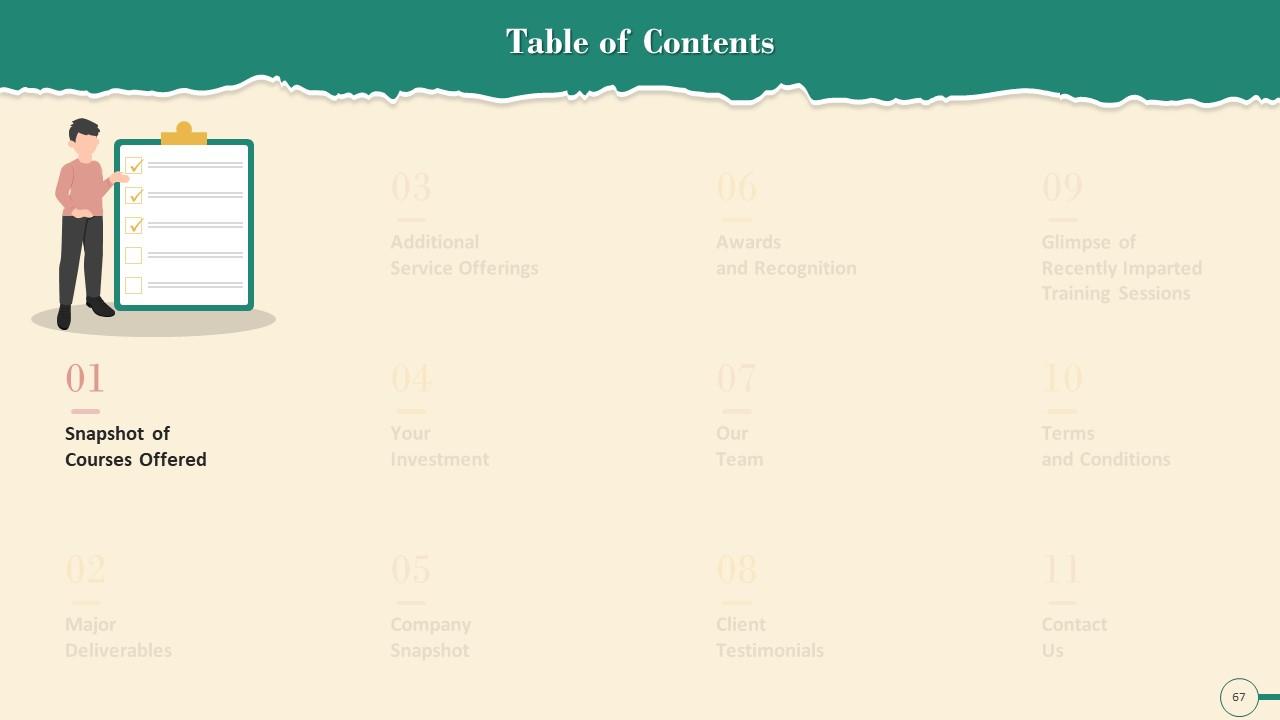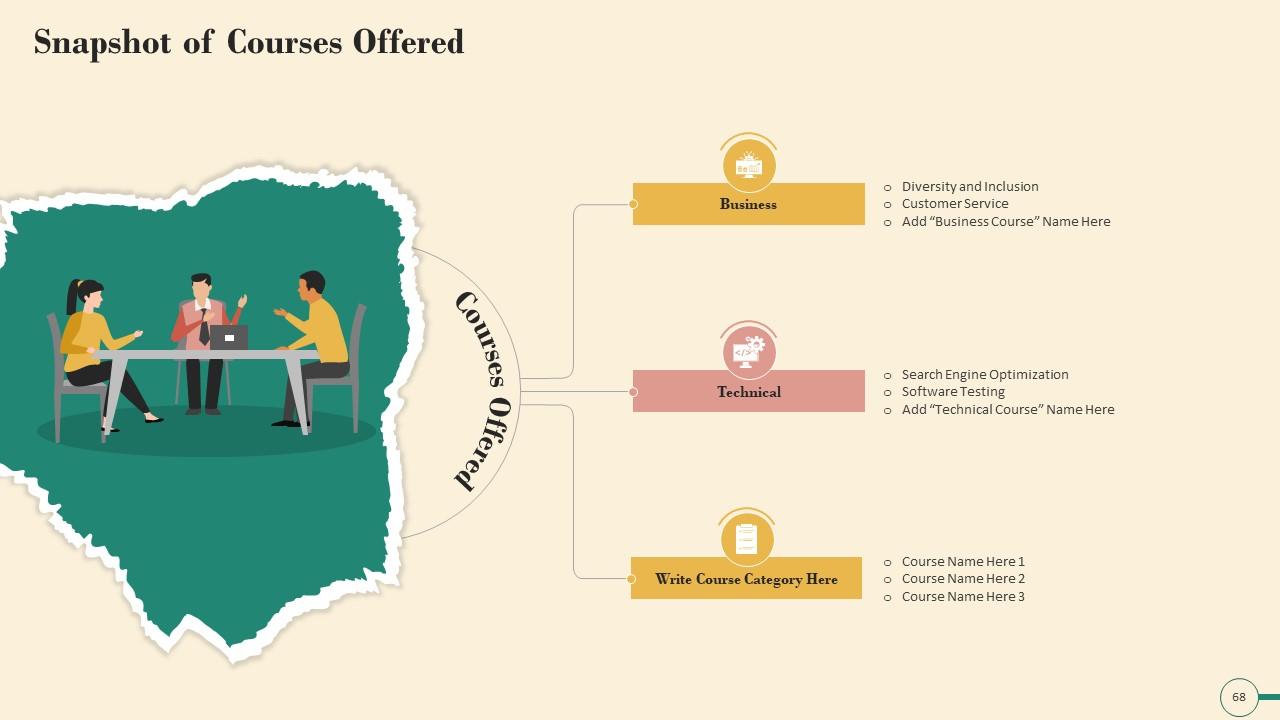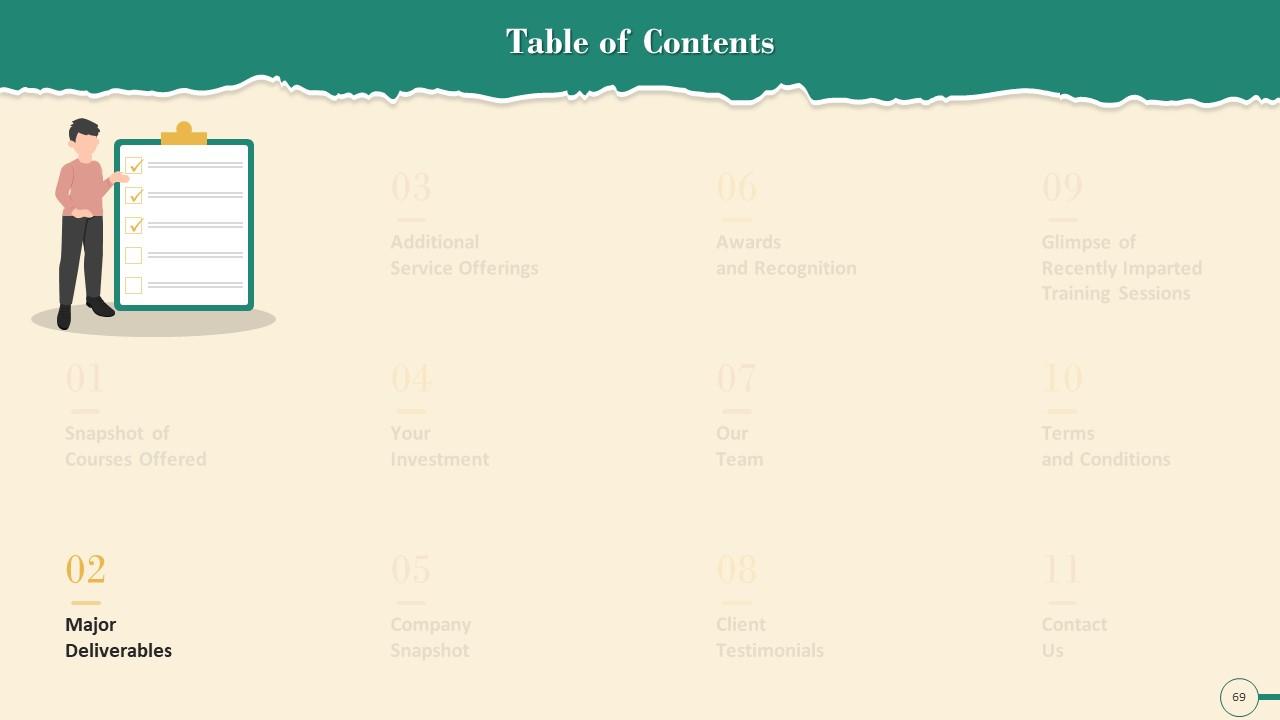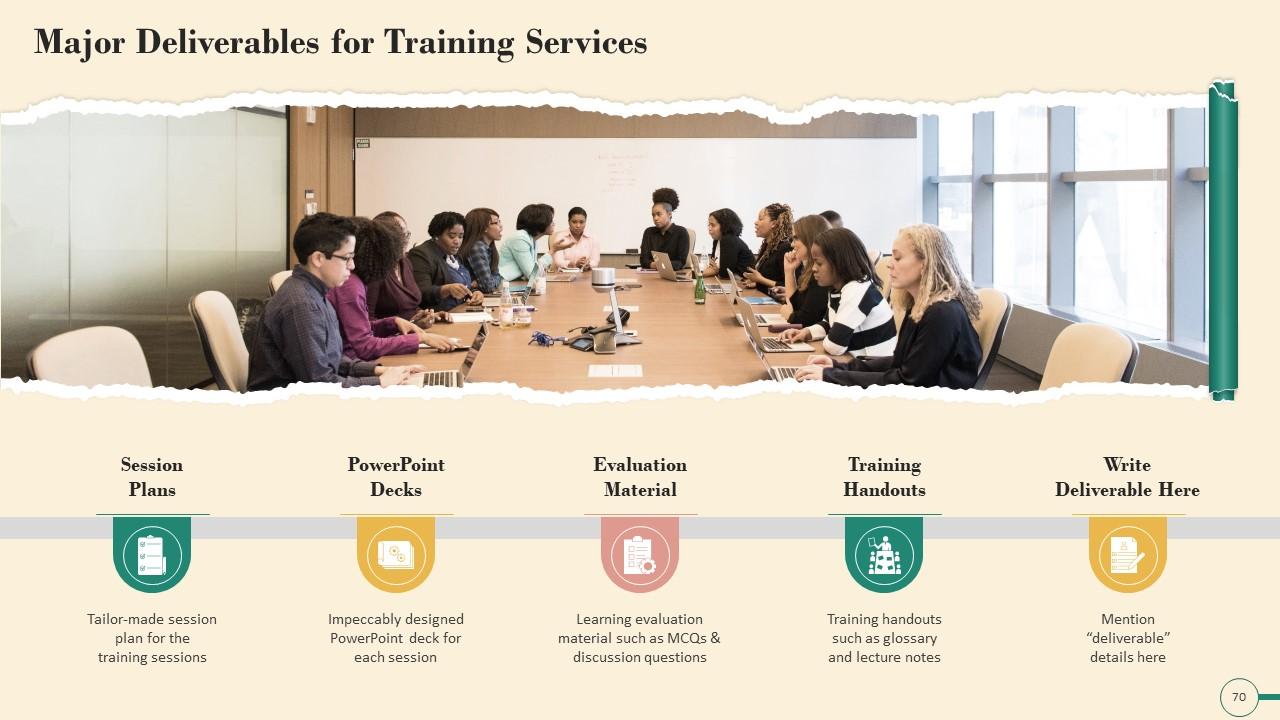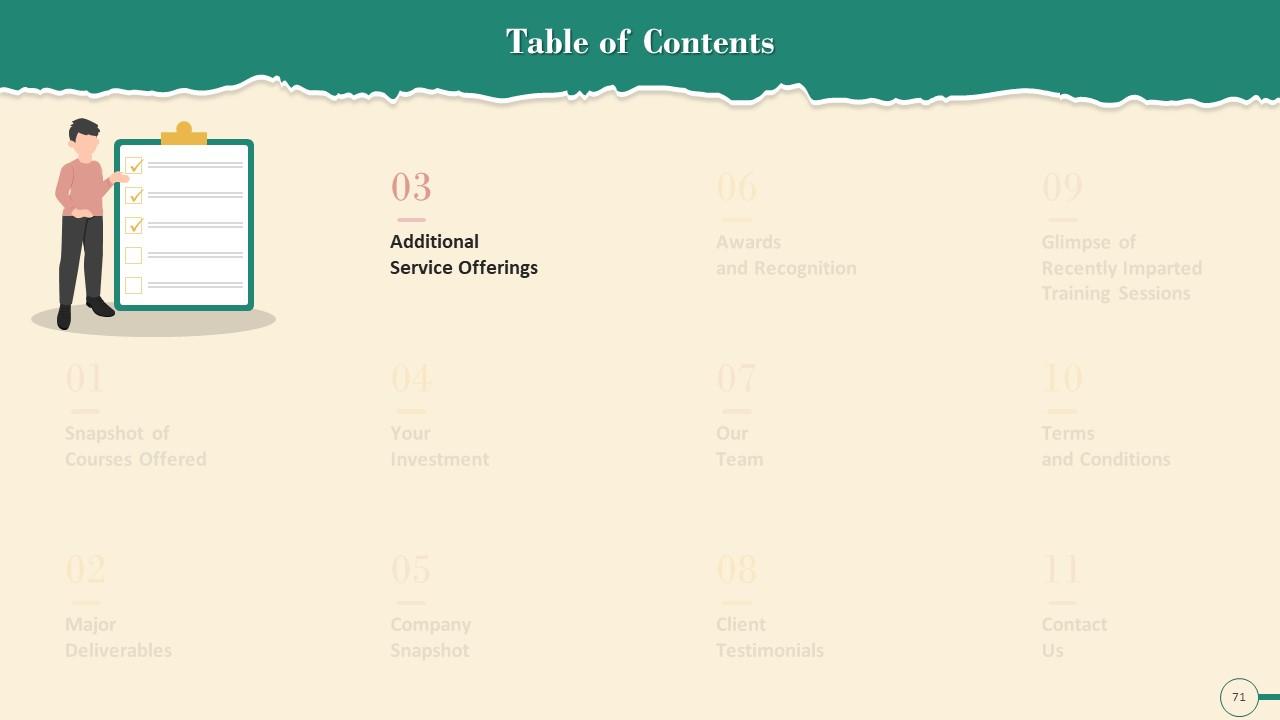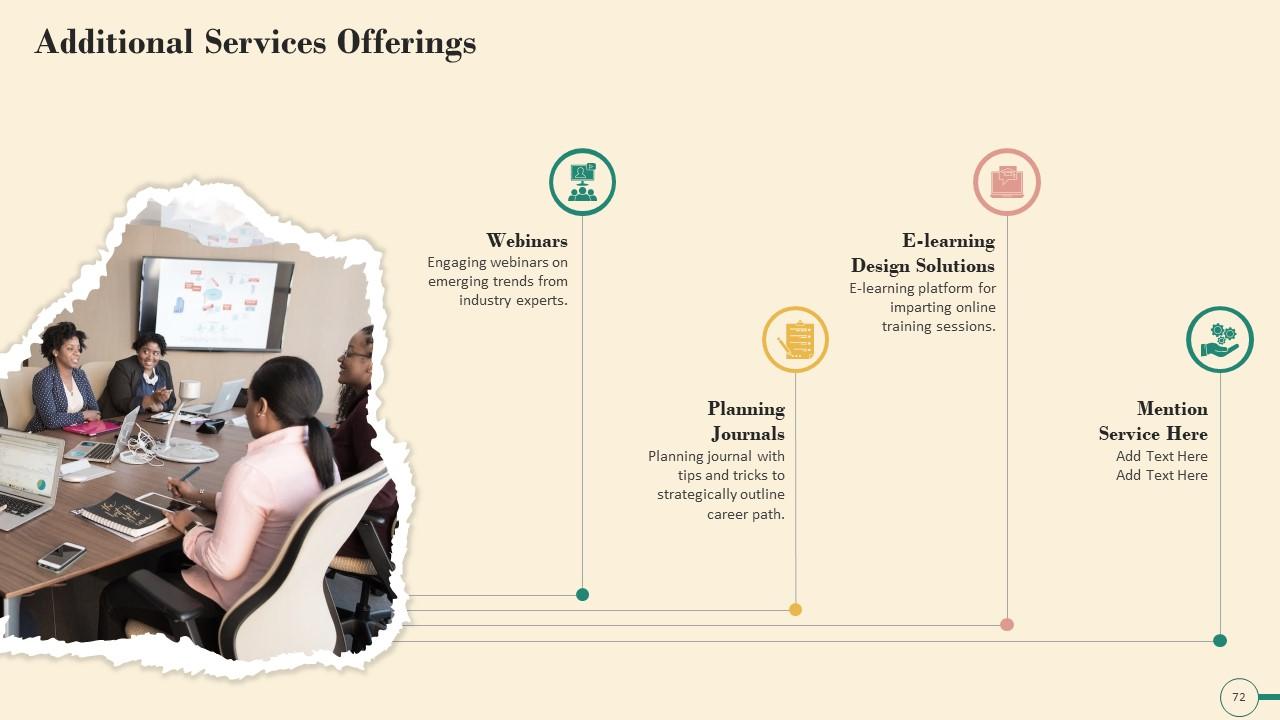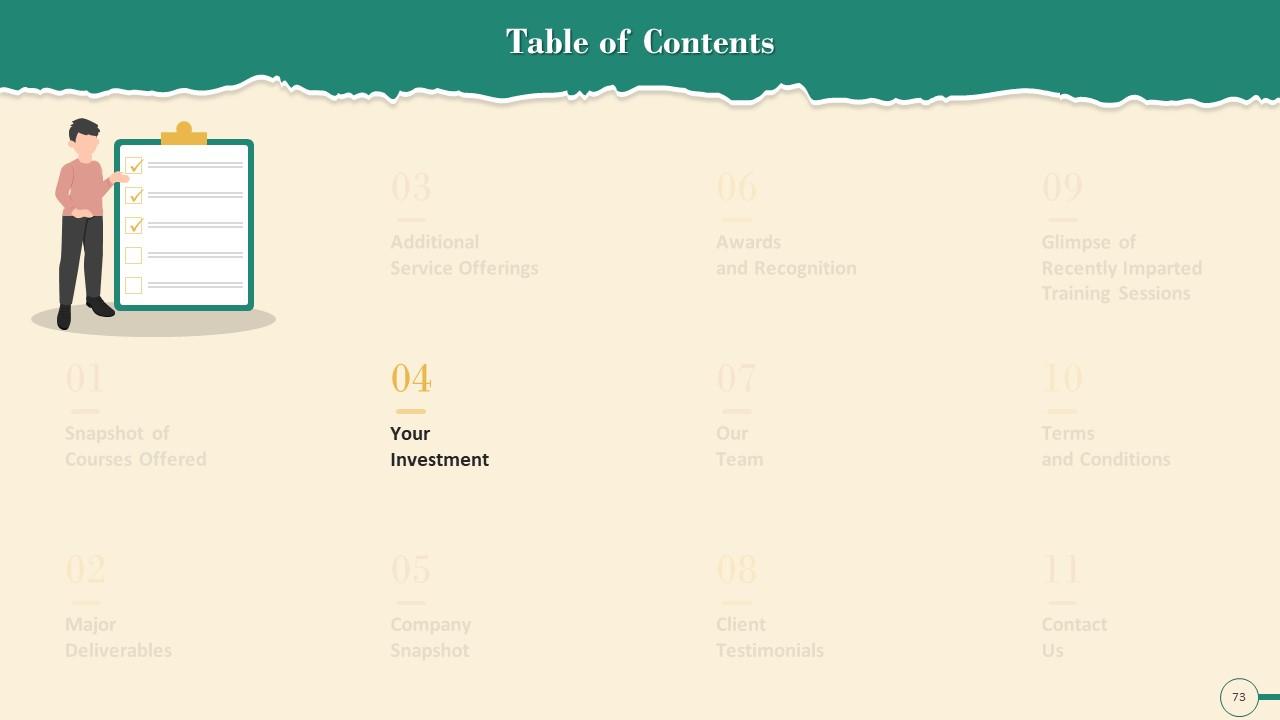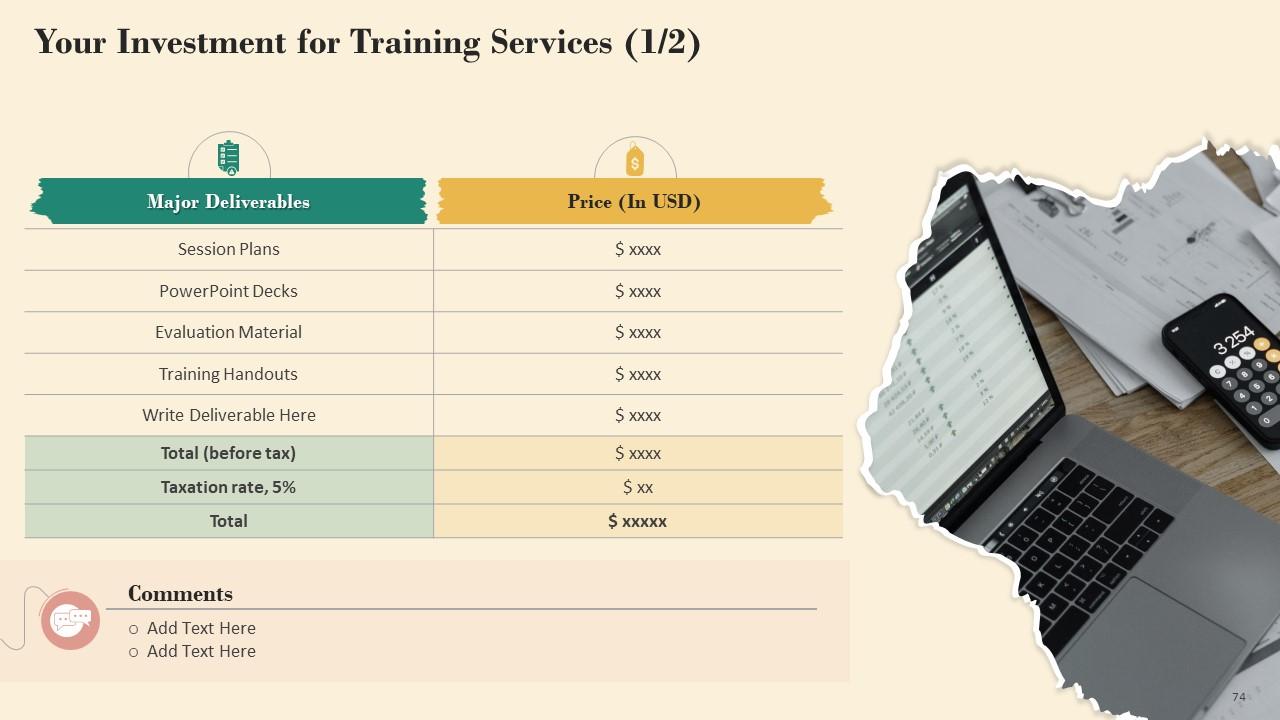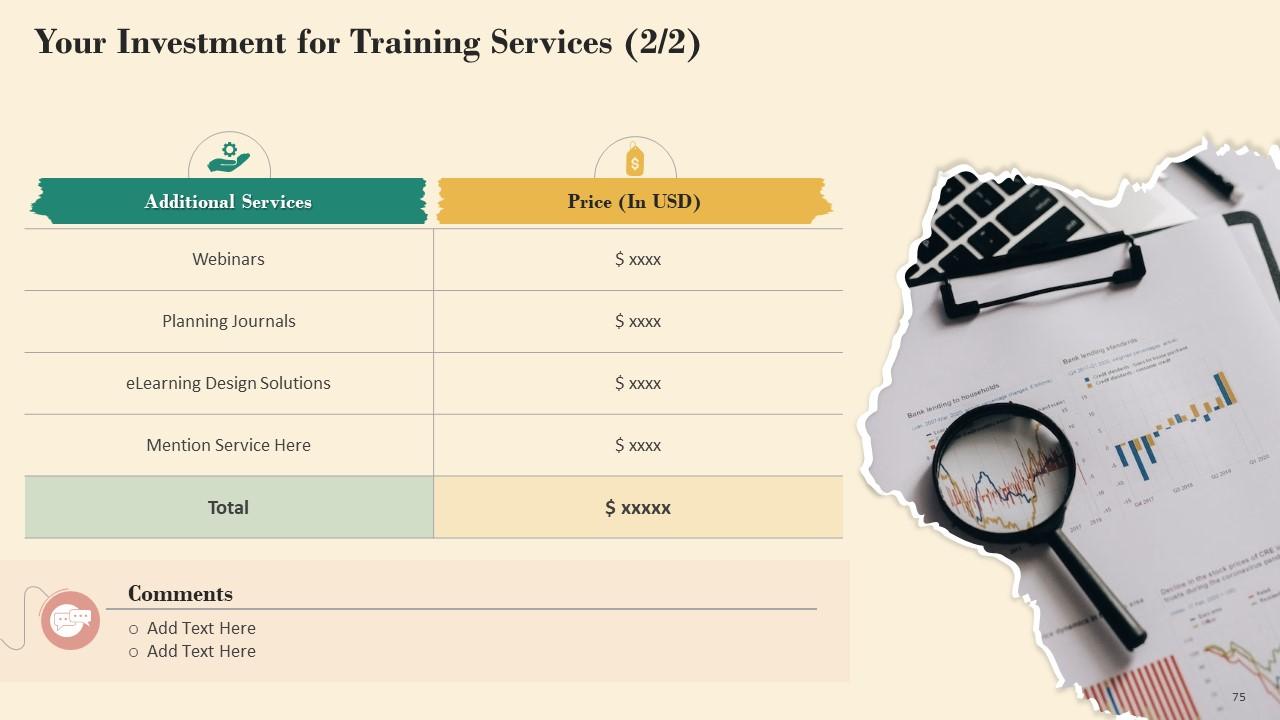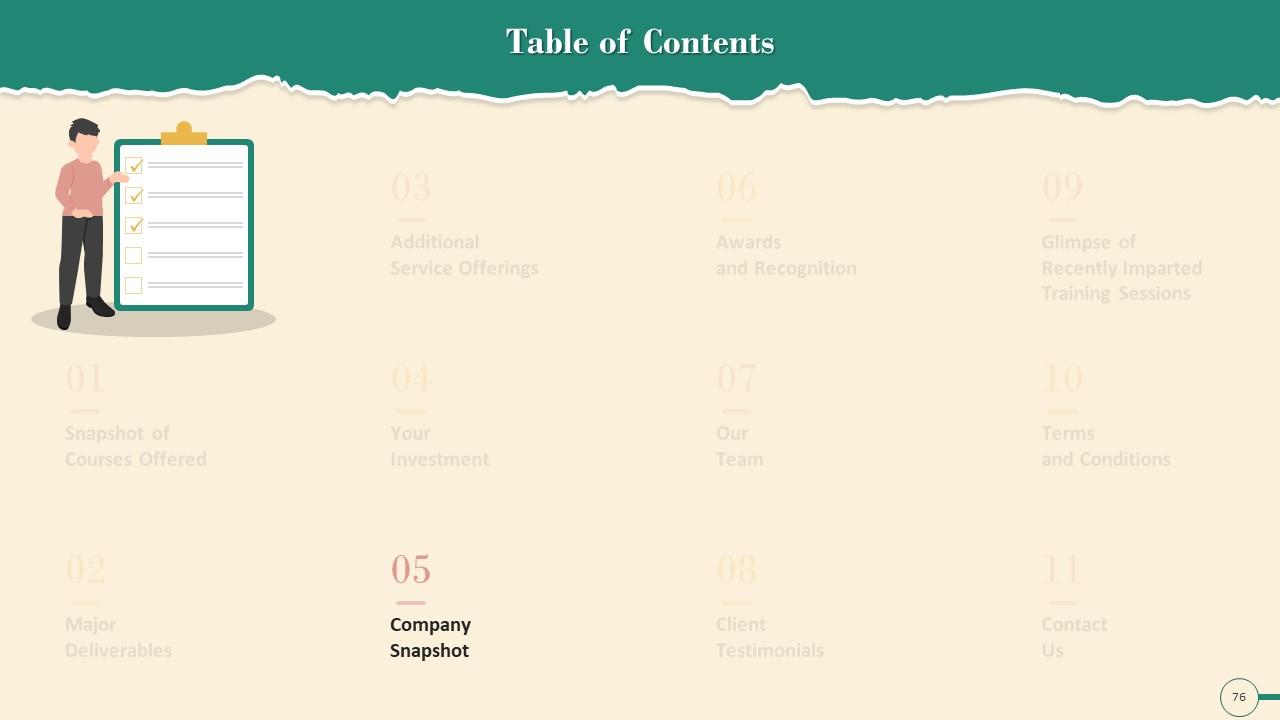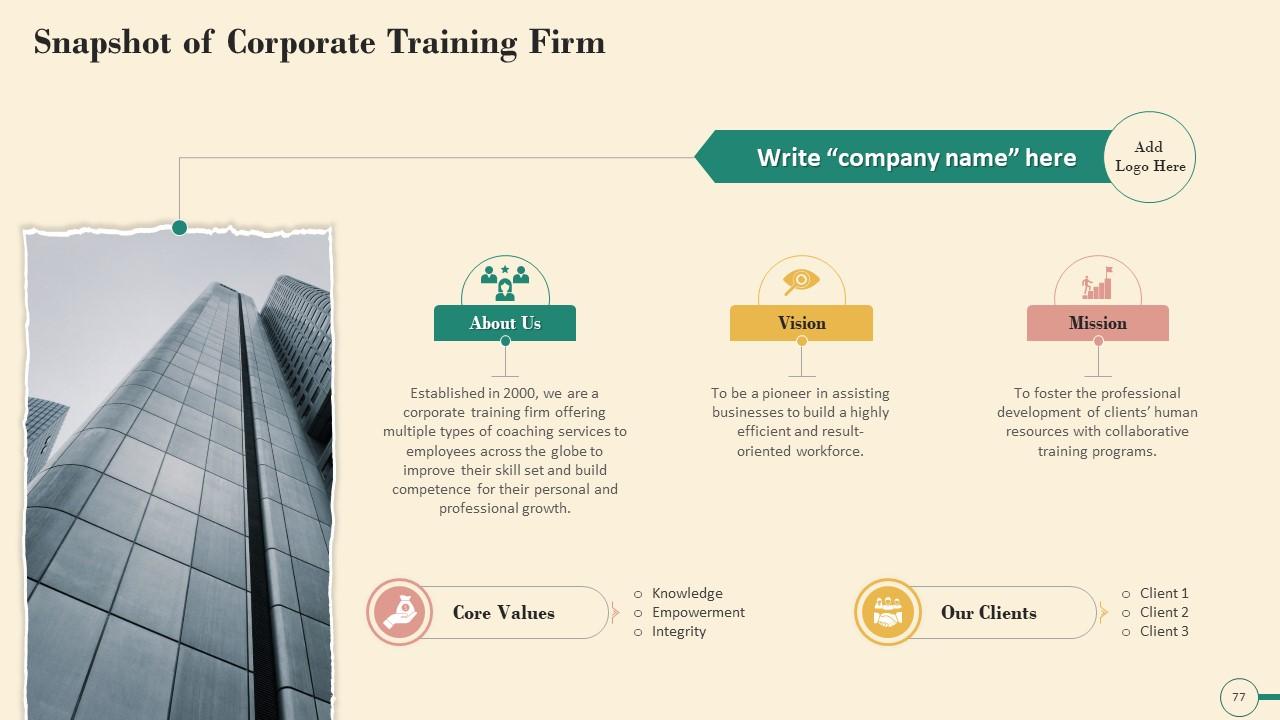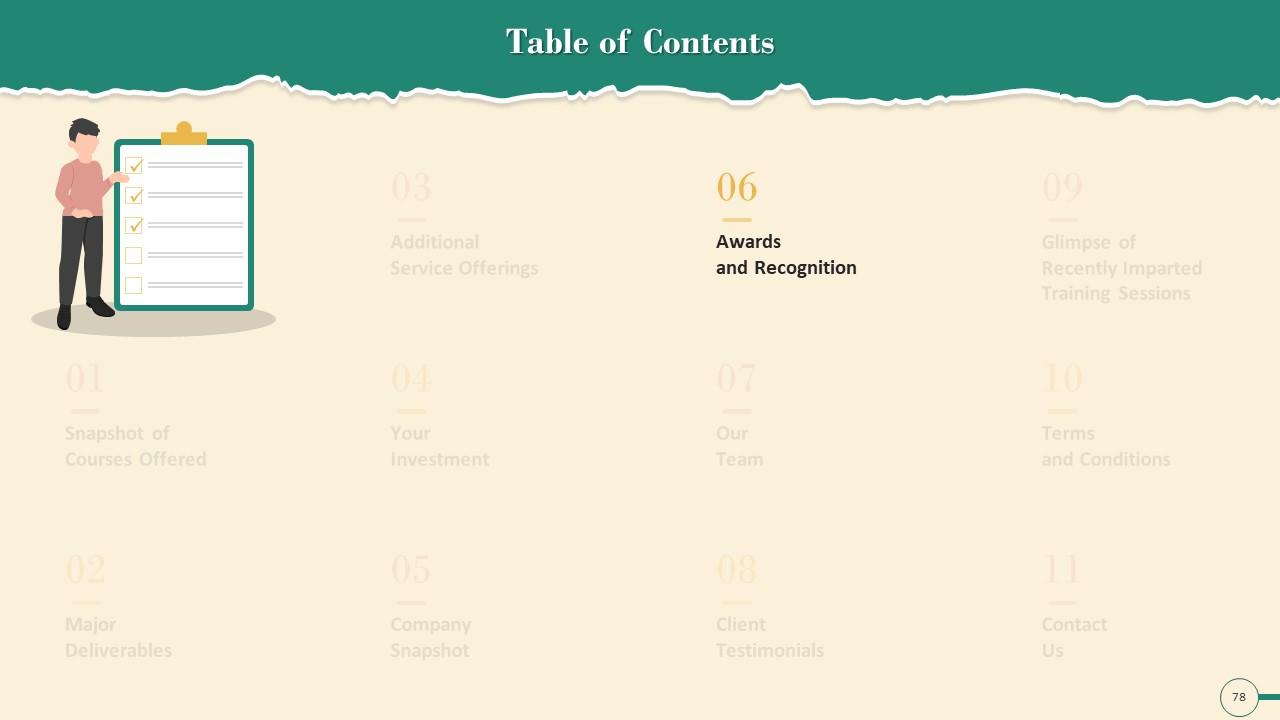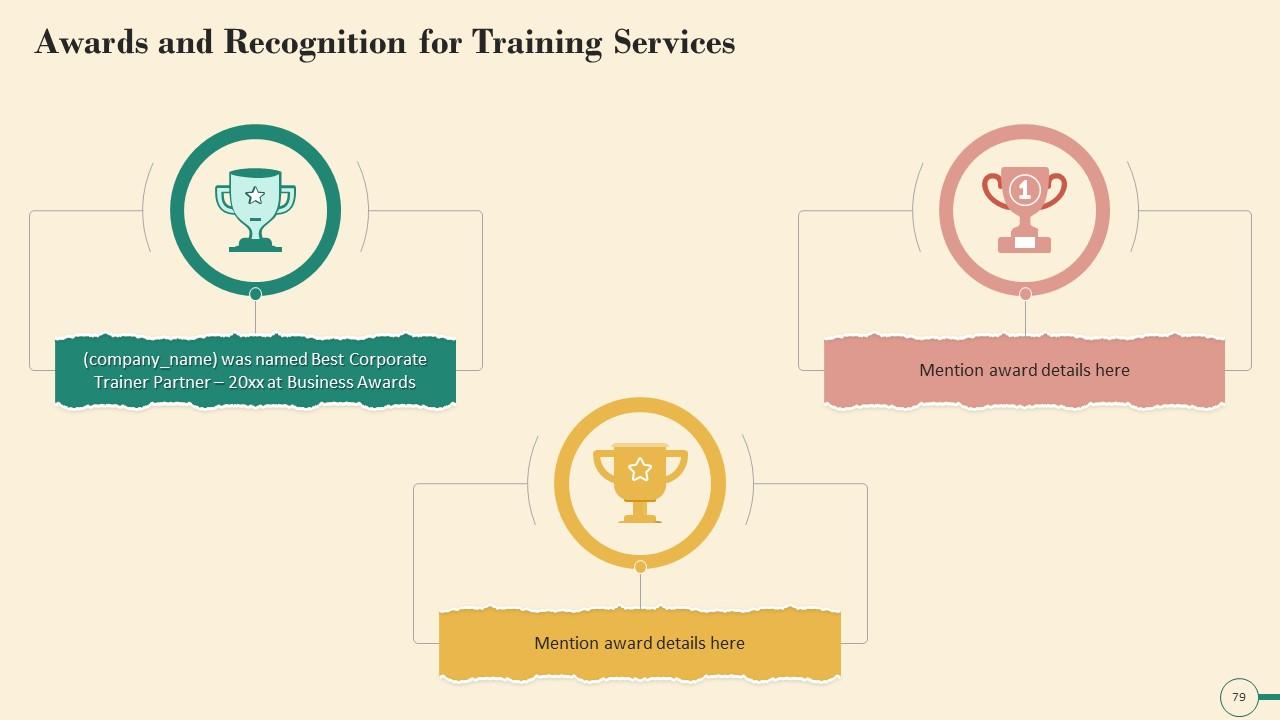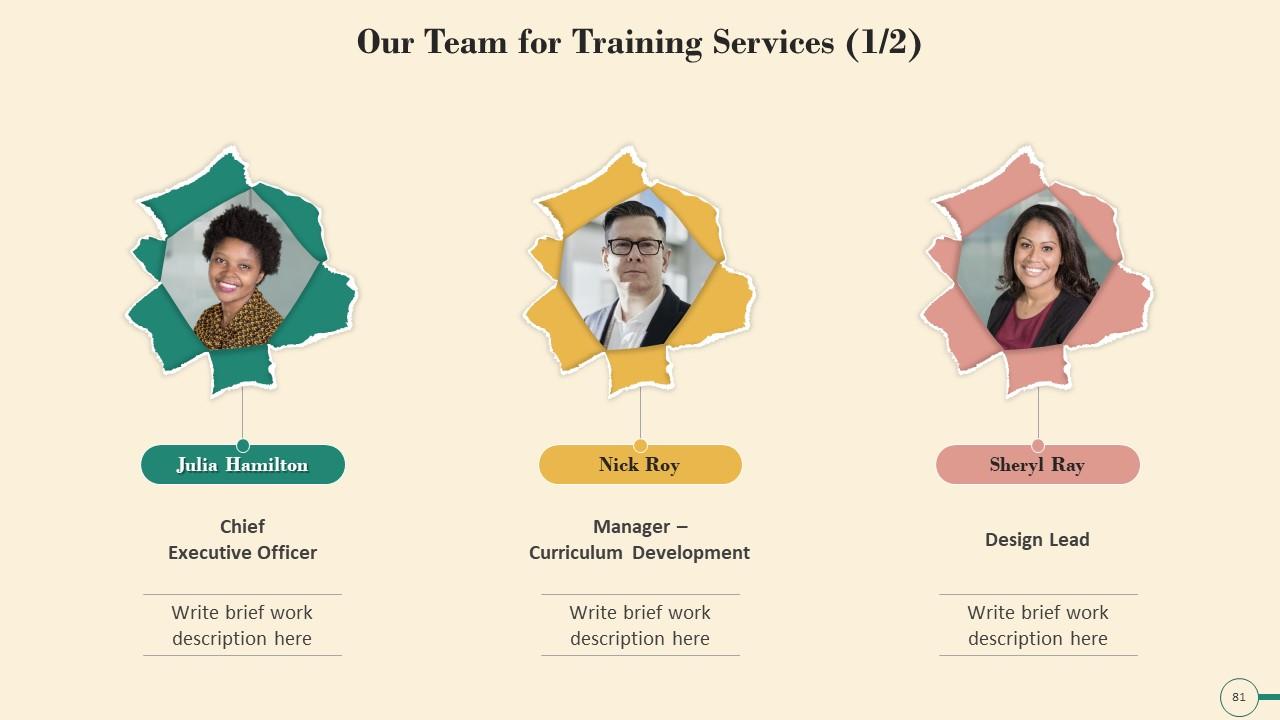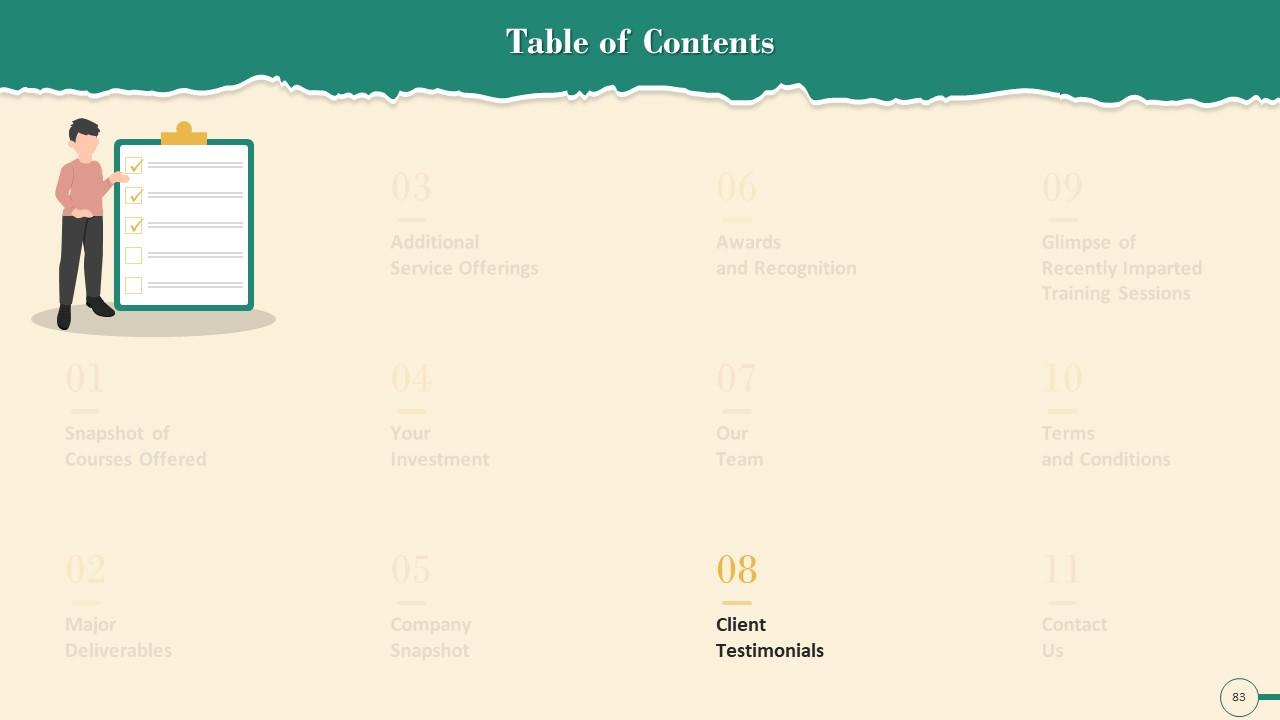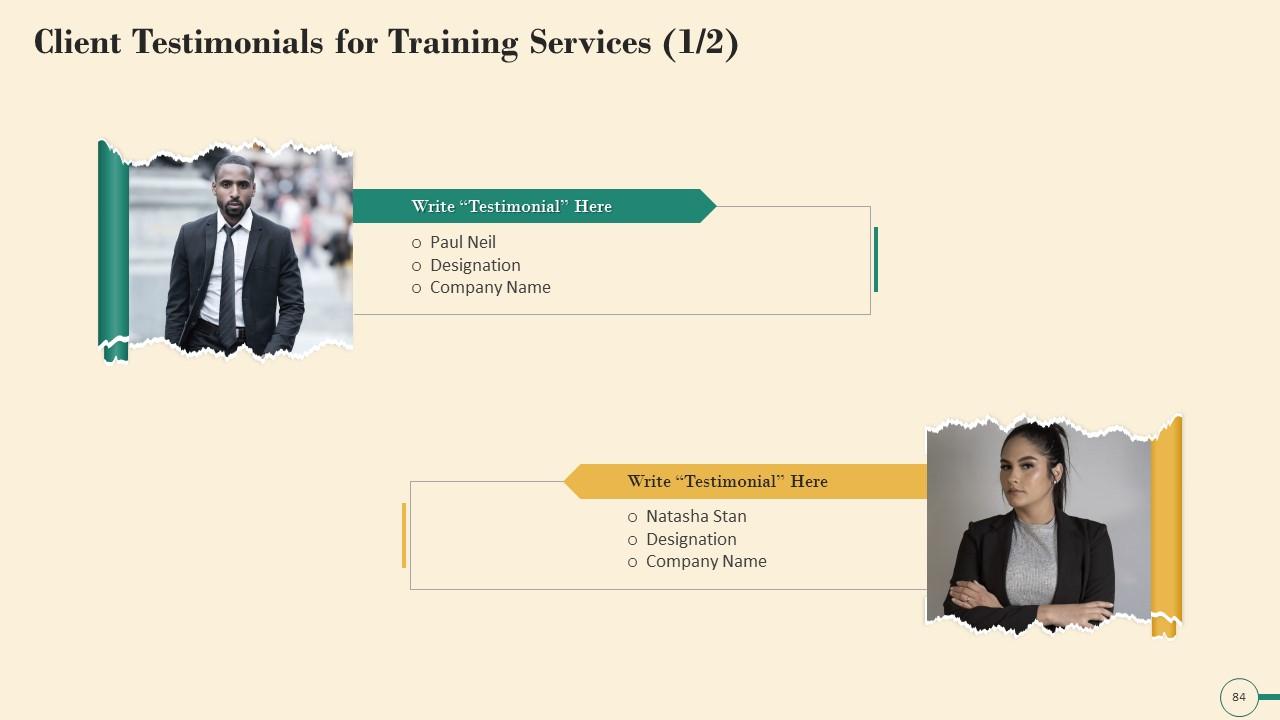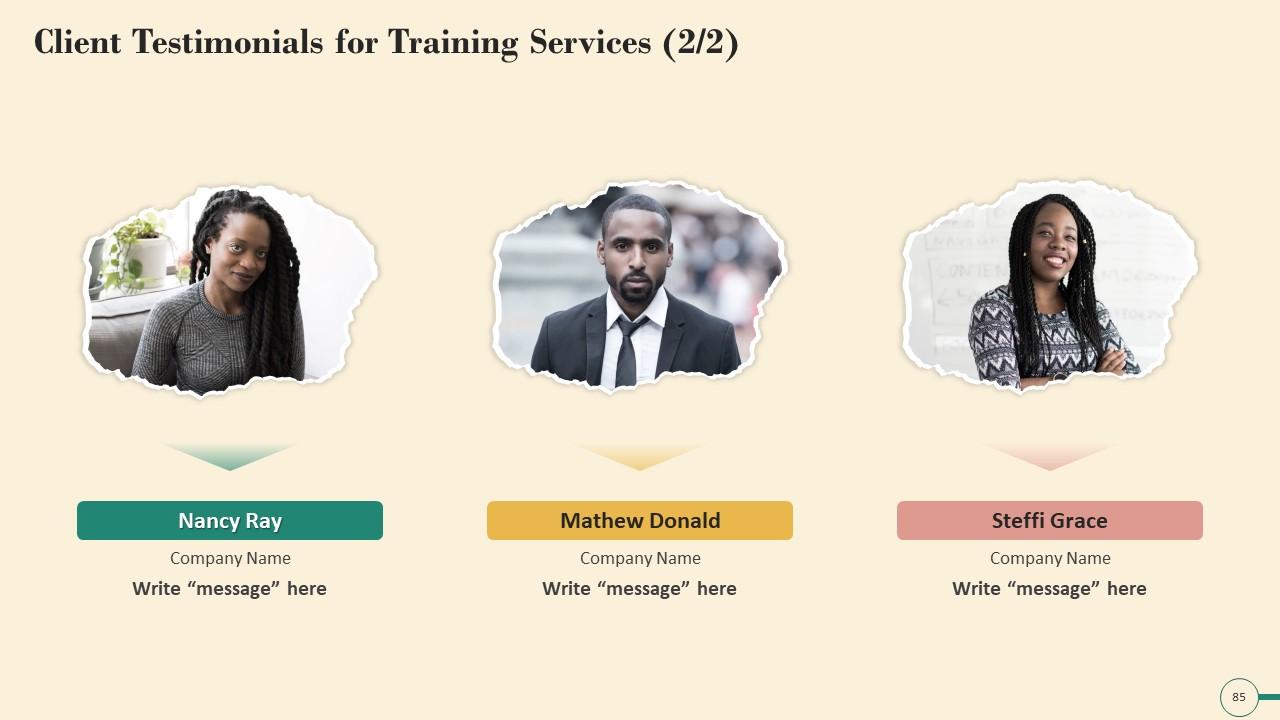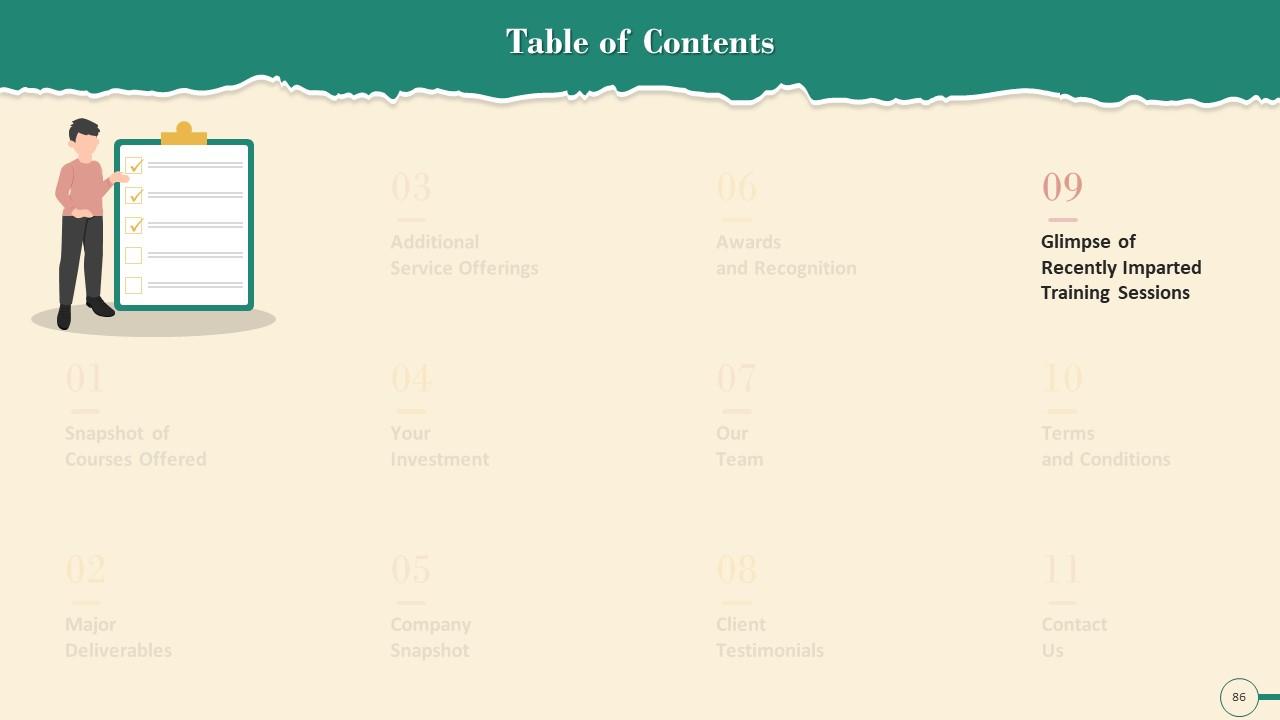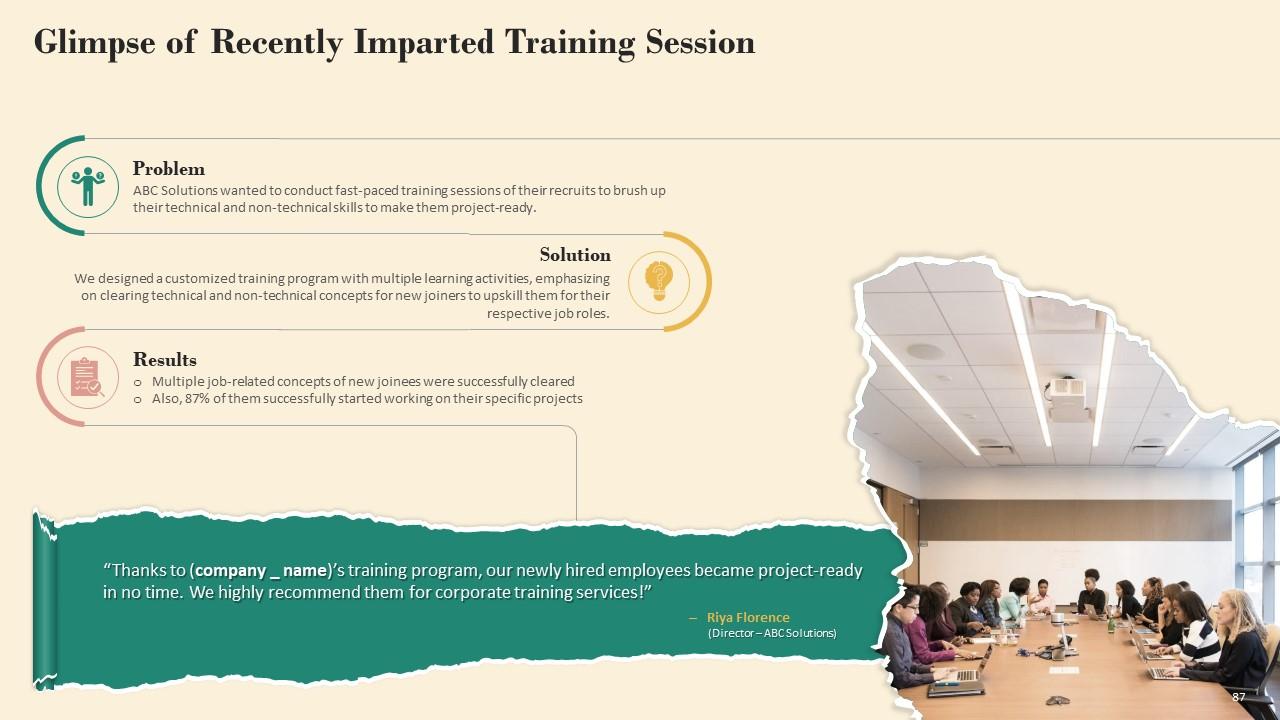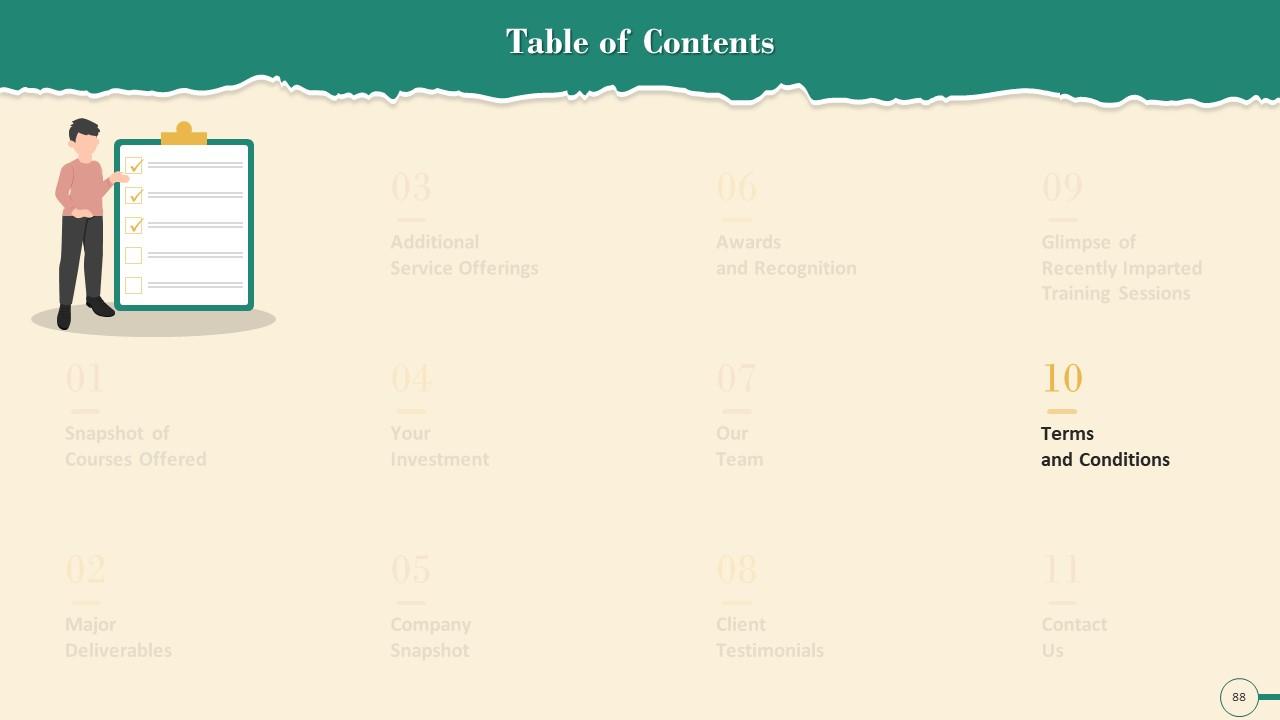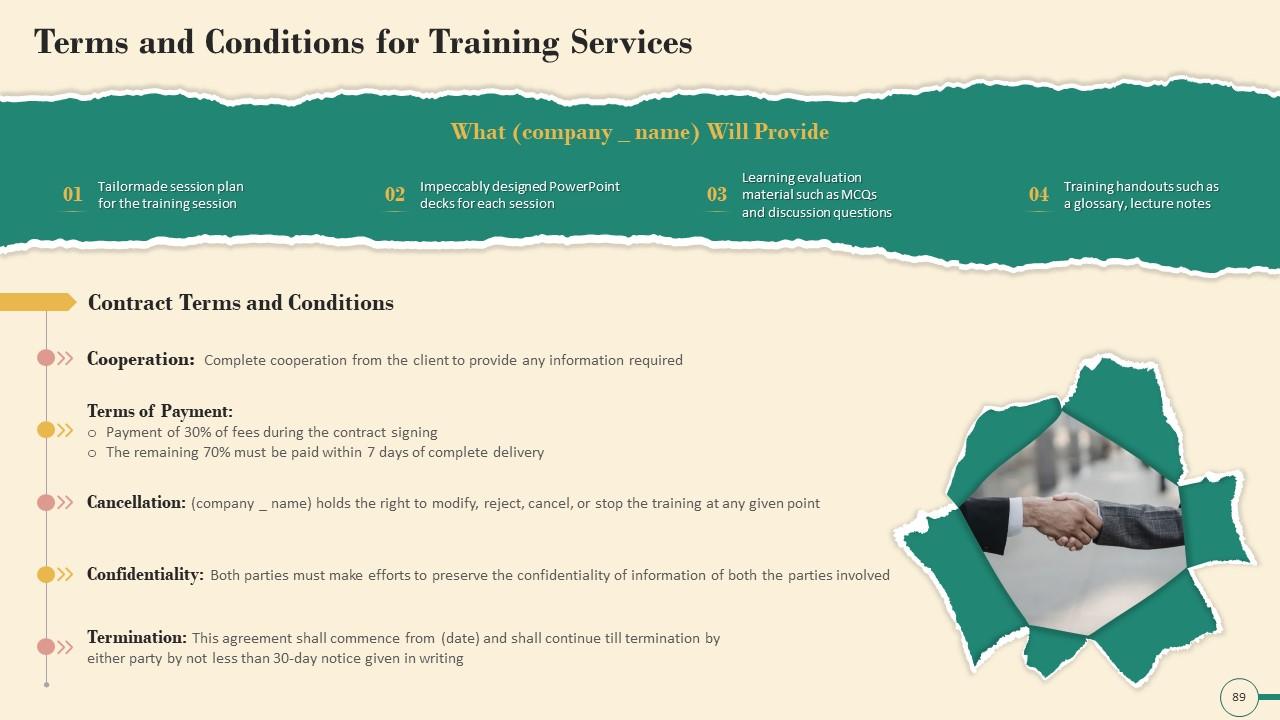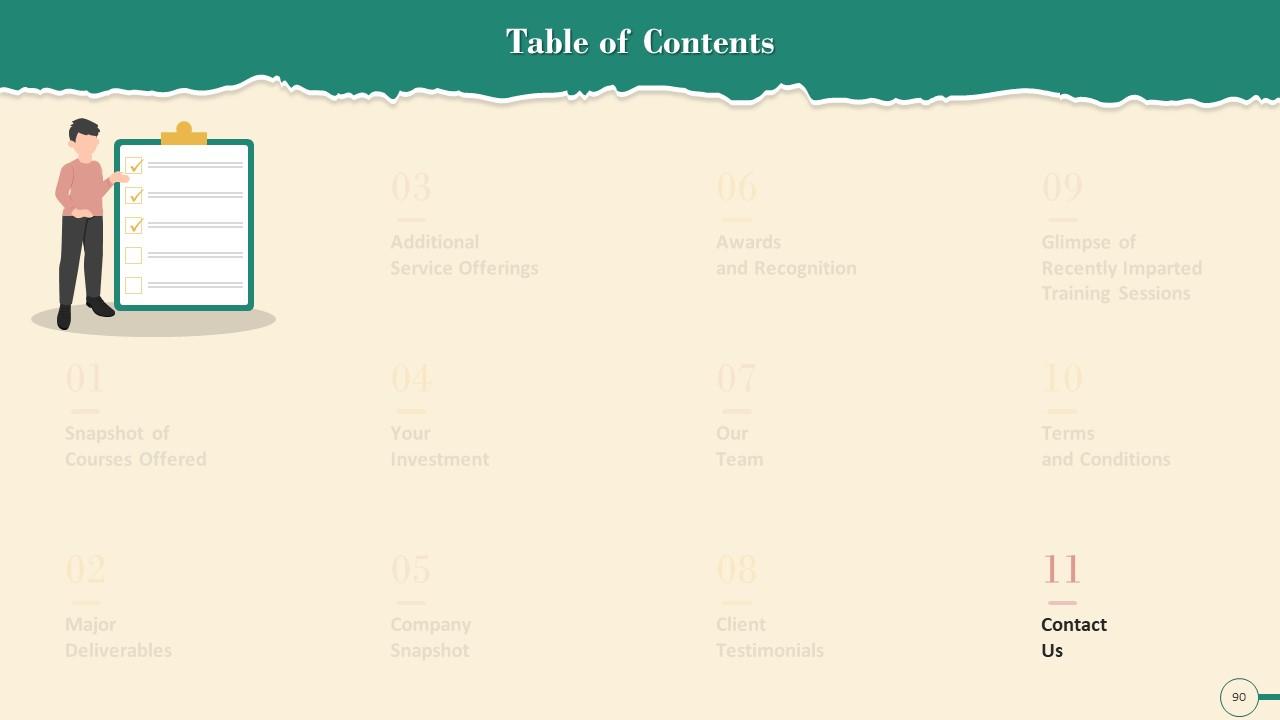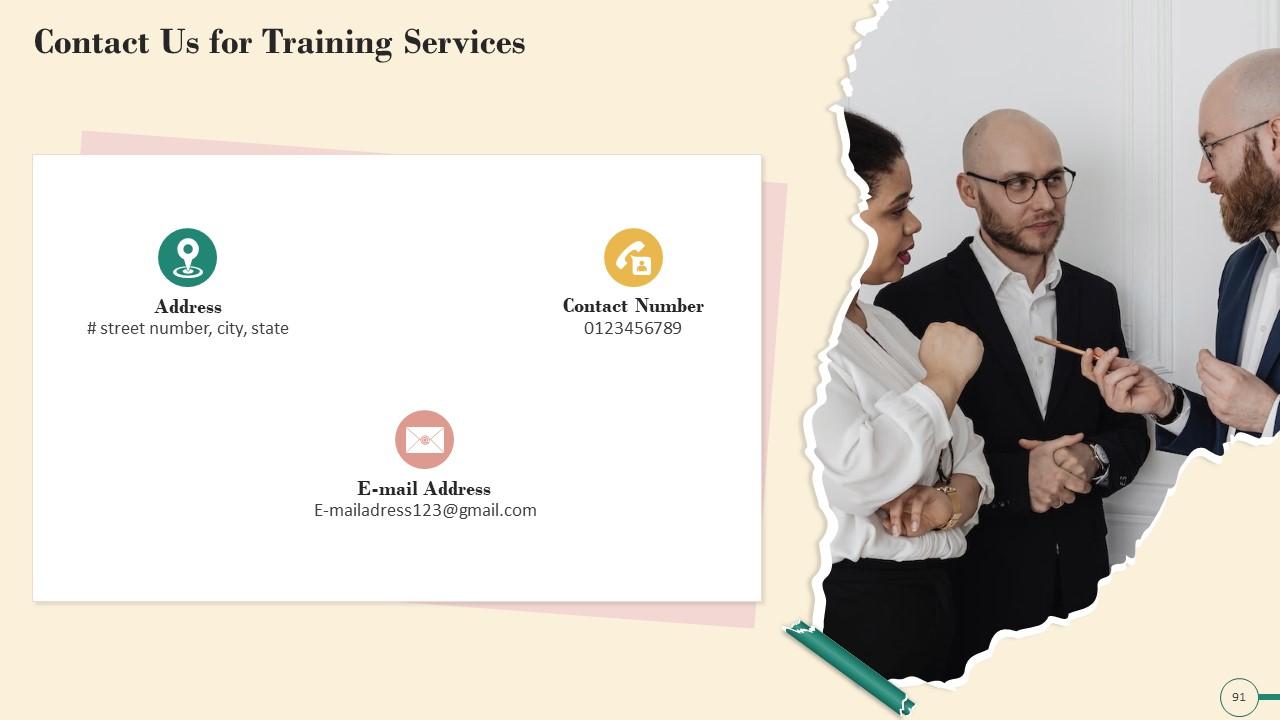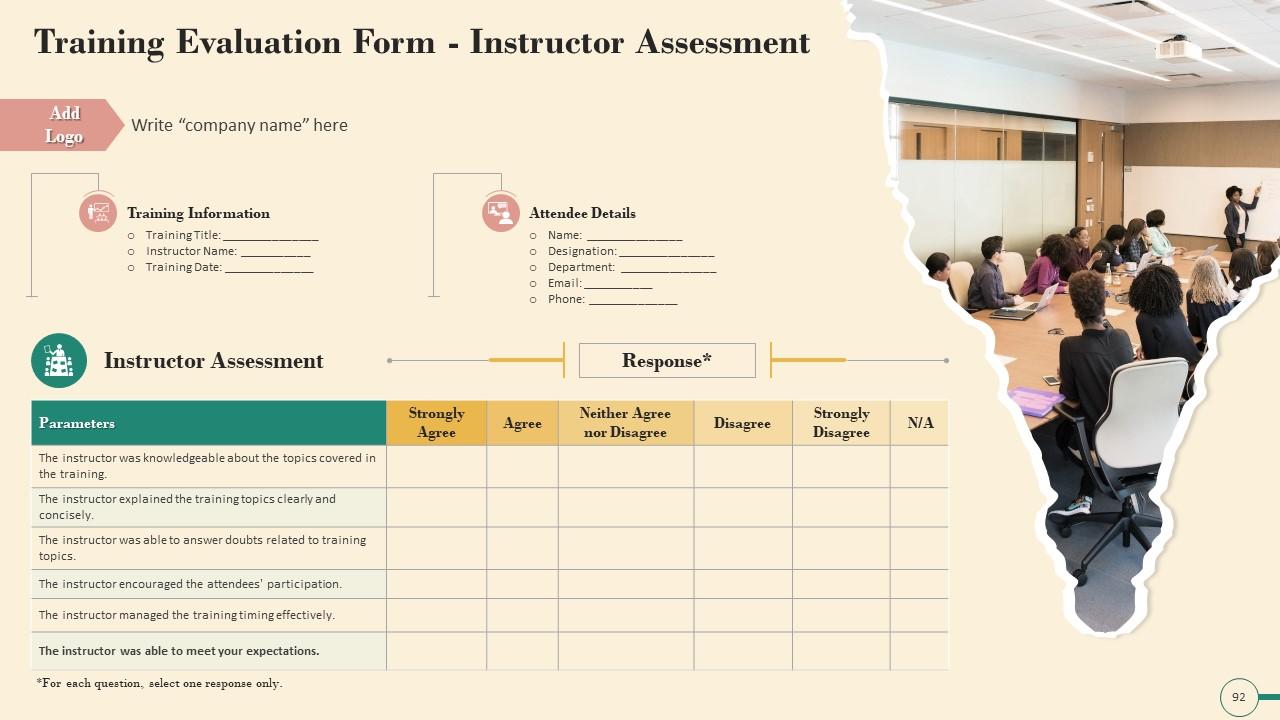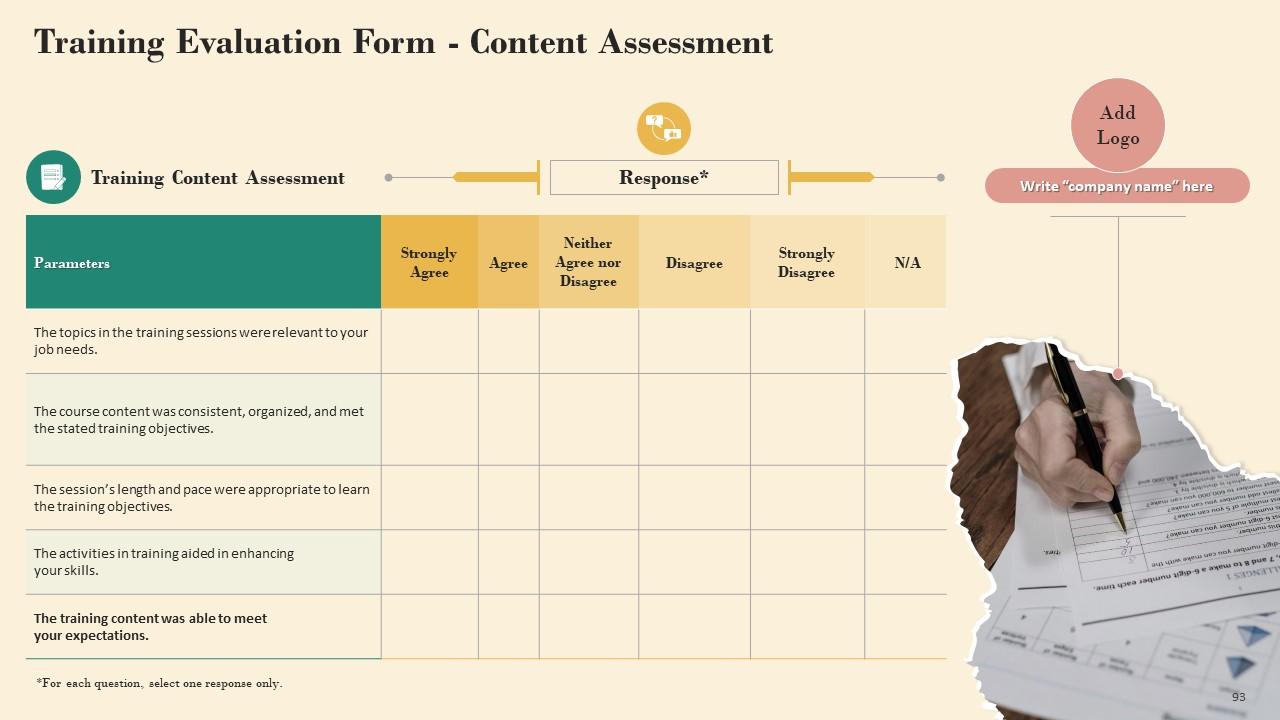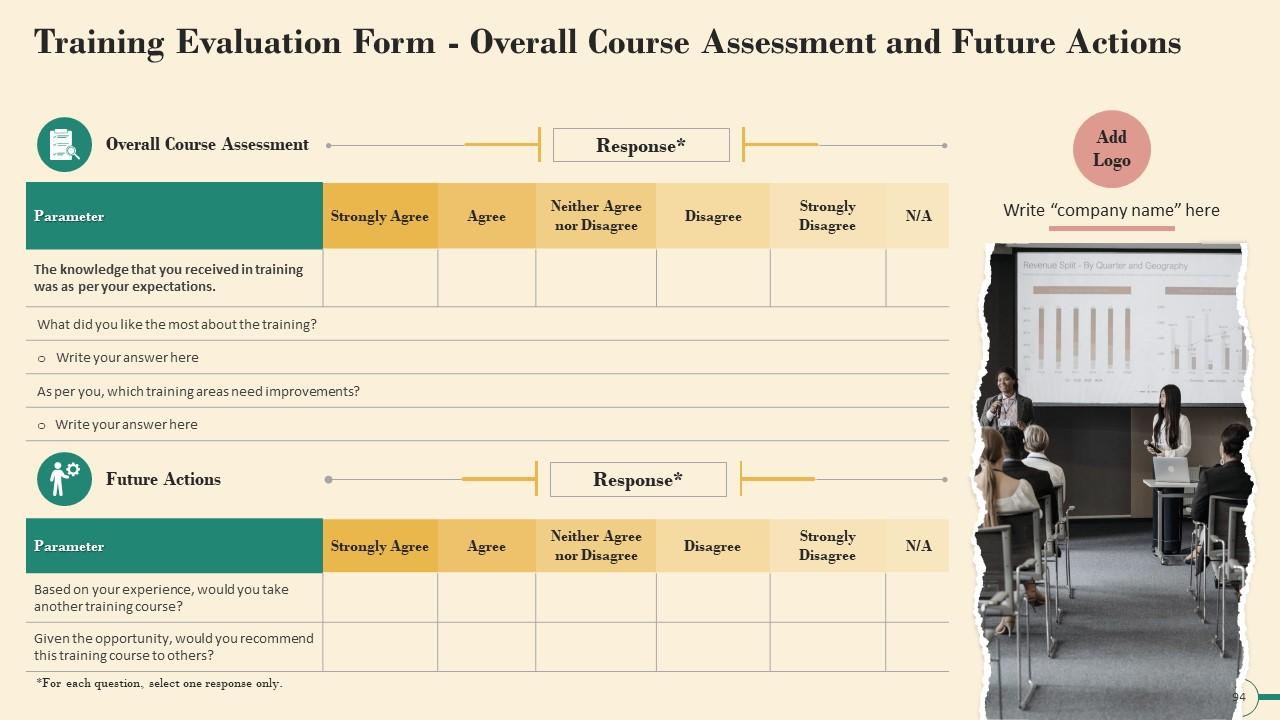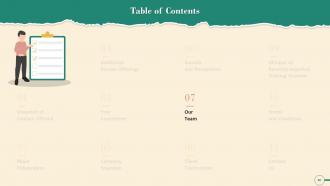Setting The Opening Offer In Negotiation Training Ppt
This training module Setting the Opening Offer in Negotiation, in-detail covers the topics Opening Offer Scenarios Make the First Offer or Get the Other Person to Open First, Anchoring Effect, Role of Active Listening and Non-verbal Communication in Negotiation. Further, it covers Negotiation Tactics for Byers Not Good Enough, Knocking the Product, The Bogey, Playing Dumb, Lowballing, and Reluctant Buyer and Seller and Seller High-Balling, The Salami, and Deadline. Then it contains Common Negotiation Tactics Silence, High Authority, Playing the Ego, Closed Questions, The Trail Balloon, If You Were in My Shoes, and Surprise. It also has Statistics on the Effectiveness of Negotiation Tactics, Key Takeaways, and Discussion Questions related to the topic to make the coaching session more interactive. The deck has PPT slides on About Us, Vision, Mission, Goal, 30-60-90 Days Plan, Timeline, Roadmap, Training Completion Certificate, and Energizer Activities. It also includes a Client Proposal and Assessment Form for training evaluation.
This training module Setting the Opening Offer in Negotiation, in-detail covers the topics Opening Offer Scenarios Make the..
- Google Slides is a new FREE Presentation software from Google.
- All our content is 100% compatible with Google Slides.
- Just download our designs, and upload them to Google Slides and they will work automatically.
- Amaze your audience with SlideTeam and Google Slides.
-
Want Changes to This PPT Slide? Check out our Presentation Design Services
- WideScreen Aspect ratio is becoming a very popular format. When you download this product, the downloaded ZIP will contain this product in both standard and widescreen format.
-

- Some older products that we have may only be in standard format, but they can easily be converted to widescreen.
- To do this, please open the SlideTeam product in Powerpoint, and go to
- Design ( On the top bar) -> Page Setup -> and select "On-screen Show (16:9)” in the drop down for "Slides Sized for".
- The slide or theme will change to widescreen, and all graphics will adjust automatically. You can similarly convert our content to any other desired screen aspect ratio.
Compatible With Google Slides

Get This In WideScreen
You must be logged in to download this presentation.
PowerPoint presentation slides
Presenting Training Deck on Setting the Opening Offer in Negotiation. This presentation deck contains 94 well-researched and uniquely designed slides. These slides are 100 percent made in PowerPoint and are compatible with all screen types and monitors. They also support Google Slides. Premium Customer Support available. Suitable for use by managers, employees, and organizations. These slides are easily customizable. You can edit the color, text, icon, and font size to suit your requirements.
People who downloaded this PowerPoint presentation also viewed the following :
Content of this Powerpoint Presentation
Slide 4
This slide explains the concept of opening offer in the negotiation process. Opening Offer in a negotiation process provides a preliminary insight around the bargaining zone and the possibility of agreements than can take place in this process. The opening bid should be the best possible outcome according to you that you hope to achieve in the negotiation process.
Slide 5
This slide mentions the two scenarios for opening offer in negotiation. The rules are – Make the first offer or Get the other person to open first.
Slide 6
This slide elaborates on the relevance of making the first offer in negotiation. Research suggests that it is beneficial to take advantage of the first move when you have conducted detailed academic research on facts and figures of negotiation. It is said that 85% of the negotiated outcomes align with the person who goes first. It is beneficial to make an offer first as it will act as anchor in the negotiation process, and the other party will fixate on these. Even if concessions move the final price or terms away from the first offer, the final result will still be closer to your ideal deal than the other party making the first offer.
Slide 7
This slide explains the relevance of getting the other person to open first in negotiation. When the other person opens first, it gives you an advantage of getting critical information about their weaknesses, where they are coming from, and will give you a chance to unhook their anchor. Before putting an offer, you can always ask for a budget of the opposite person by asking questions like – ‘How much you typically spend’? ‘What’s your budget?’, etc. This will help you to customize your offerings according to the budget of the person and also considering your side of offerings.
Slide 8
This slide explains an example stating the relevance of getting the other person to open first in the negotiation process.
Slide 9
This slide explains in detail the meaning, causes, and example of the anchoring effect. The causes of the anchoring effect are uncertainties, investor bias, and perception or estimates built in brain. This slide also mentions ways to avoid the anchoring effect which are critical thinking, in-depth research, rejections, etc.
Slide 10
This slide explains the most critical skill of negotiation that is Listen. It explains the relevance of active listening and then coming to an agreement in the negotiation process.
Slide 11
This slide explains the significance of verbal vs. non-verbal communication in negotiations. While negotiating, verbal and non-verbal communication both can make a difference. Sometimes Non-verbal communication, like body language can be more effective compared to the verbal communication. One can use ‘Flinching’ which is a visible negative physical action that sends an emotional message to the other party about the offer being unpleasant to them. This tactic can be used both on the part of buyer or seller to know the actual opinion of the other party on the budget quoted, and to see whether they flinch or not.
Slide 13
This slide lists negotiation tactics being used by the buyer and seller in the negotiation process. Some of the tactics used by buyers are – Mentioning the product/service as “not good enough”, knocking the product, the bogey tactic, playing dumb, lowballing, reluctant buyer/seller, etc. Tactics used by the sellers are high-balling, the salami, deadline, etc. The tactics common to both buyers and sellers are silence, high authority, playing the ego, closed questions, the trial balloon, if you were in my shoes, and surprise.
Slide 14
This slide lists negotiation tactics being used by the buyer and seller in the negotiation process. Some of the tactics used by buyers are – Mentioning the product/service as “not good enough”, knocking the product, the bogey tactic, playing dumb, lowballing, reluctant buyer/seller, etc. Tactics used by the sellers are high-balling, the salami, deadline, etc. The tactics common to both buyers and sellers are silence, high authority, playing the ego, closed questions, the trial balloon, if you were in my shoes, and surprise.
Slide 15
This slide explains ‘not good enough’ as a negotiation tactic used by the buyers. It is used when the buyer says ‘it has to be better than that.’ In such a case the buyer expects the seller to reduce the price as they feel that the quoted price is much higher than the quality of product/service offered.
Slide 16
This slide explains ‘Knocking the Product’ as a negotiation tactic used by the buyers. The buyer in such a case can try to knock the product by saying, ‘It’s not the product I wanted, I am preferring white color, but you don’t have that,” etc. They will request you to reduce the price for the alternative color offered. It might or might not be the reality but they will show it to you in such a way so that they can ask for a better price.
Slide 17
This slide explains ‘The Bogey Tactic’ as a negotiation tactic used by the buyers. The Bogey tactic works on three fundamental principles involved – Ego, Help, and Better Deal Available. In this tactic, the buyer offers the seller a fixed price which is lower than the price quoted by the seller. The seller can use counter tactics like offering alternative designs, delivery, price packages.
Slide 18
This slide explains ‘Playing Dumb’ as a negotiation tactic used by the buyers. It says that “To act smart is dumb, but to act dumb in front of a seller like you know less than everyone is brilliant”. Acting dumb helps you test their accuracy and verify the efficiency of counterpart’s information. In such a case, the seller can ask multiple questions to the buyer to confuse them and test their knowledge.
Slide 19
This slide explains ‘low balling’ as a negotiation tactic used by the buyers. It states that when you start low, there are chances of going high, whether in terms of price or a deal. For example, when you know the pair of shoes you want to buy is worth 5k-7k, you can always start by offering 4k.
Slide 20
This slide explains ‘Reluctant Buyer/Seller’ as a negotiation tactic used by the buyers. Sometimes the buyer/seller both can be reluctant in terms of their offerings. In most cases, the buyers are found to be more reluctant. For example, a person comes to buy a laptop bag from your shop. He states that his experience with you has not been good to date, but if you can offer him a better deal, he could purchase the bag from you. Also, a person can say they prefer a local buyer, but if you offered them lower prices, they would purchase from your store. The Reluctant seller can look for excuses to charge extra for his offerings. The most common example of this is a home tutor delaying his job, saying that the location is too far for him to come. But if you can offer extra payment for distance, he can accept the deal
Slide 21
This slide lists negotiation tactics being used by the buyer and seller in the negotiation process. Some of the tactics used by buyers are – Mentioning the product/service as “not good enough”, knocking the product, the bogey tactic, playing dumb, lowballing, reluctant buyer/seller, etc. Tactics used by the sellers are high-balling, the salami, deadline, etc. The tactics common to both buyers and sellers are silence, high authority, playing the ego, closed questions, the trial balloon, if you were in my shoes, and surprise.
Slide 22
This slide explains ‘high-balling’ as a negotiation tactic used by the sellers. The seller starts with a higher price at first and then moves to the lower price. Sellers sometimes show very high quality (price range) products to the buyers to increase their desires and expectations. This eventually causes them to spend more than they decided. The buyer in such a case can ask for price breakdown, low-balling strategy, etc.
Slide 23
This slide explains ‘the salami’ as a negotiation tactic used by the sellers. This technique is referred to as salami because it relates to the seller's situation of cutting salami (services here) into slices and offering it to the customers. It states that the buyers usually keep on asking for additional benefits like 'Can I have a bit of this?', etc. in such a case, the seller should very smartly set the prices, say if you want this, you will have to leave that, or think of some other smart offers. If the buyer's demands do not suit the seller, they should simply say ‘no’ so that they do not land up in a situation of no loss-no profit or a loss. The buyer in such a case can look for additional offers, say no to the offer, or look for alternative sellers, etc.
Slide 24
This slide explains ‘the deadline’ as a negotiation tactic used by the sellers. Sellers can put a deadline for the deal to put pressure on the other person. Deadline should be carefully set and planned, as it can give you either the best results or can work against you. The buyer in such a case can ask open-ended questions like the reason behind imposing deadline, request to move the deadline, etc.
Slide 25
This slide lists negotiation tactics being used by the buyer and seller in the negotiation process. Some of the tactics used by buyers are – Mentioning the product/service as “not good enough”, knocking the product, the bogey tactic, playing dumb, lowballing, reluctant buyer/seller, etc. Tactics used by the sellers are high balling, the salami, deadline, etc. The tactics common to both buyers and sellers are silence, high authority, playing the ego, closed questions, the trial balloon, if you were in my shoes, and surprise.
Slide 26
This slide explains ‘silence’ as a common negotiation tactic used by both buyers and sellers. It is better to remain silent when the negotiation has hit a critical stage. Keep silent for 10-15 seconds and see what happens. The most uncomfortable party with try to fill the gap and offer better deal to make other party speak. This tactic can be used when a person wants to create pressure, seeks more information, etc.
Slide 27
This slide explains ‘High Authority’ as a common negotiation tactic used by both buyers and sellers. This happens when someone on behalf of the person offers you something, but has to discuss with the higher authorities for more detailed information and a better deal. Sometimes a person does not have the authority to fulfill your request, in such a case a person needs to consult the higher authority. This tactic can be used when a person does not have the authority, and when the deal gets complicated, etc.
Slide 28
This slide explains ‘Playing the Ego’ as a common negotiation tactic used by both buyers and sellers. This tactic can be used by both parties to check whether the opponent has the power to take decisions. Many a time. you will see people are compelled to say YES as it hurts their ego. Ask the person dealing whether he is the final decision-maker or not. If not, ask him to call the person concerned to make a decision. This tactic can be used to avoid delay in decision and to avoid any confusions at the time of closing the deal.
Slide 29
This slide explains ‘closed questions’ as a common negotiation tactic used by both buyers and sellers.
Slide 30
This slide explains ‘The Trial Balloon’ as a common negotiation tactic used by business organizations. In a business context, it states that when the business suffers (balloon bursts), not too much is lost or it can be brought to the same position again in sometime by making constant efforts.
Slide 31
This slide explains ‘if you were in my shoes’ as a common negotiation tactic used by both buyers and sellers. This tactic can be used by asking your counterpart “what would you do if you were in my shoes”? This tactic makes the other person stop and think about the situation from the other person’s point of view. This can be used when the counterpart asks for something unreasonable and they are underestimating your position or finding it difficult to understand your perspective.
Slide 32
This slide explains ‘Surprise’ as a common negotiation tactic used by both buyers and sellers.
Slide 33
This slide mentions statistics relating to the effectiveness of negotiation tactics used by the sellers and buyers.
Slide 48 to 63
These slides contain energizer activities to engage the audience of the training session.
Slide 64 to 91
These slides contain a training proposal covering what the company providing corporate training can accomplish for the client.
Slide 92 to 94
These slides include a training evaluation form for instructor, content and course assessment.
Setting The Opening Offer In Negotiation Training Ppt with all 99 slides:
Use our Setting The Opening Offer In Negotiation Training Ppt to effectively help you save your valuable time. They are readymade to fit into any presentation structure.
-
Crisp and neat slides. Makes it fun and easier to curate presentations.
-
SlideTeam is my go-to resource for professional PPT templates. They have an exhaustive library, giving you the option to download the best slide!



